Out of the many tattoo designs popular among tattoo lovers, goat tattoos stand out with their rich tapestry of meanings and captivating visual appeal. Depicted as mystical beings, as very strong animals, or even as gentle creatures, goats have been part of human imagination for thousands of years, leaving their imprint not only on ancient tales and myths but also on modern skin art.
In this article, we are going to look through the exciting world of goat tattoos: through the history, multifaceted symbolism, and stylistic differences, owing to which they become the original choice of true tattoo lovers.
You’ll learn how different cultures interpret the imagery of goats—from the mischievous trickster of Middle Eastern tales to the wise and noble Capricorn of the zodiac. We will also put a spotlight on the design styles that artists use to bring goat tattoos to life with intricate realism, bold traditional lines, or whimsical neo-traditional flair.
Besides that, personal stories will be shared and the reasons why one would be motivated to choose a goat tattoo. It helps to show just how one could personally connect with this enigmatic animal. Finally, practical insights for the person wanting to get that goat tattoo, anything from finding the right artist to placement ideas and aftercare advice so your ink is just as colorful and relevant from the day it was etched.
So whether you’re thinking of getting inked with the goat tattoo design, or you’re simply interested in what mystery these hooved animals hold, let’s get to know the symbolism, artistry, and personal significances that go with goat tattoos. Brace yourself for the merging of ancient lore and modern creativity that makes goat tattoos absolutely fabulous.
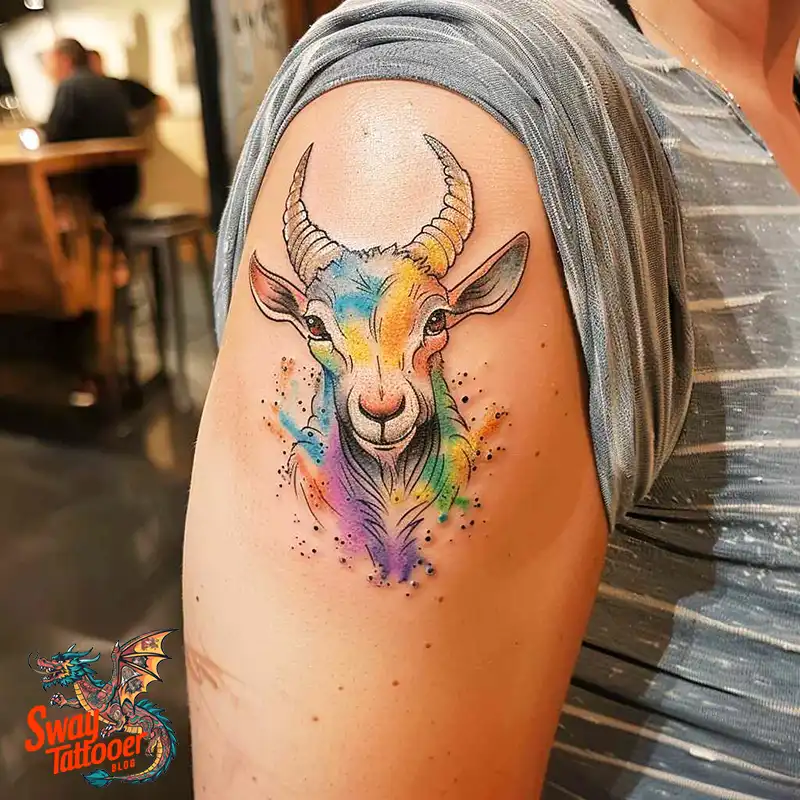
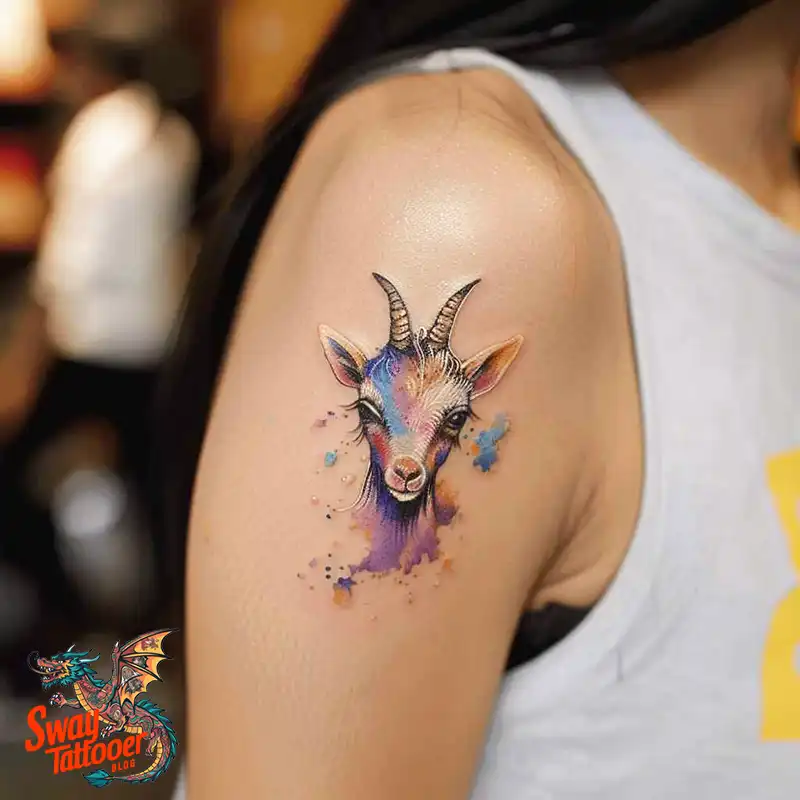
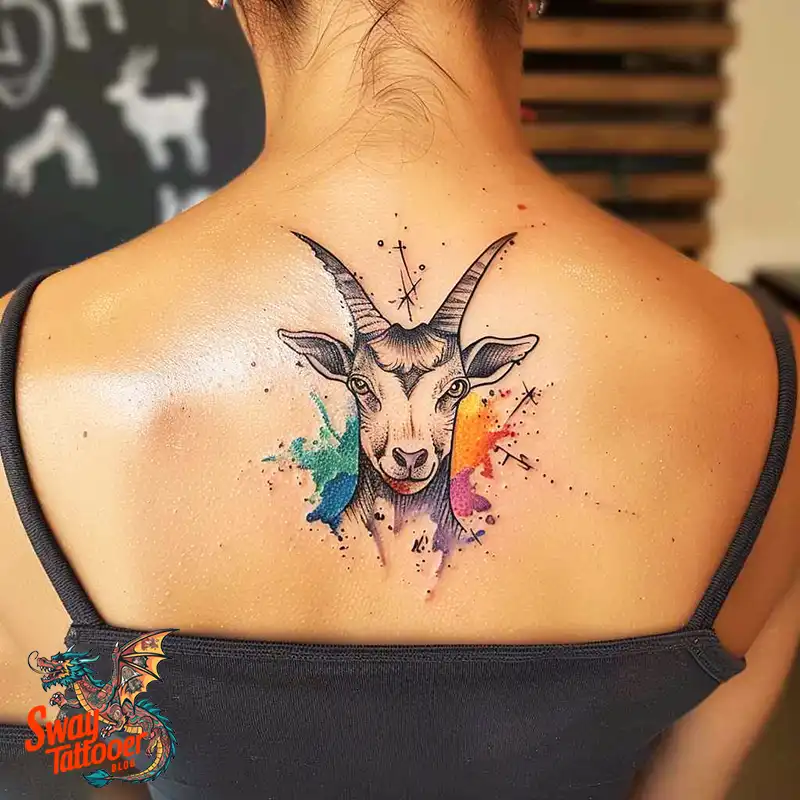
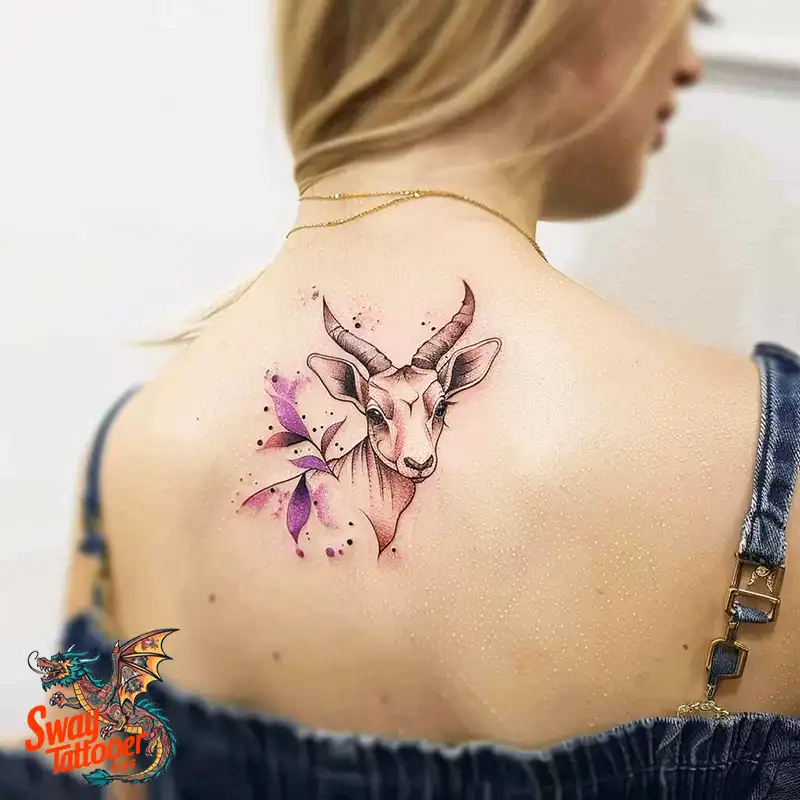
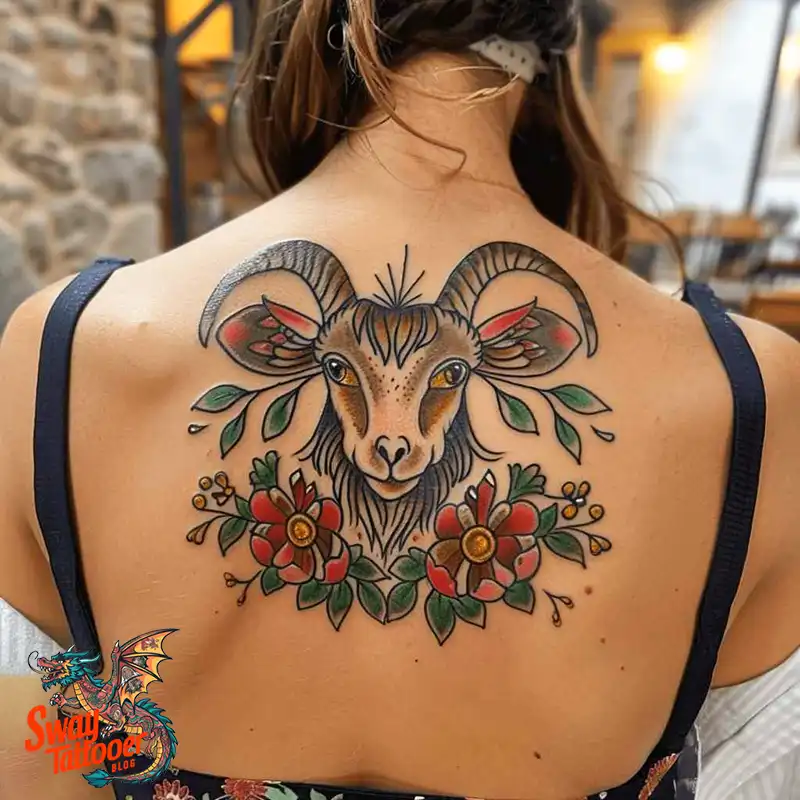
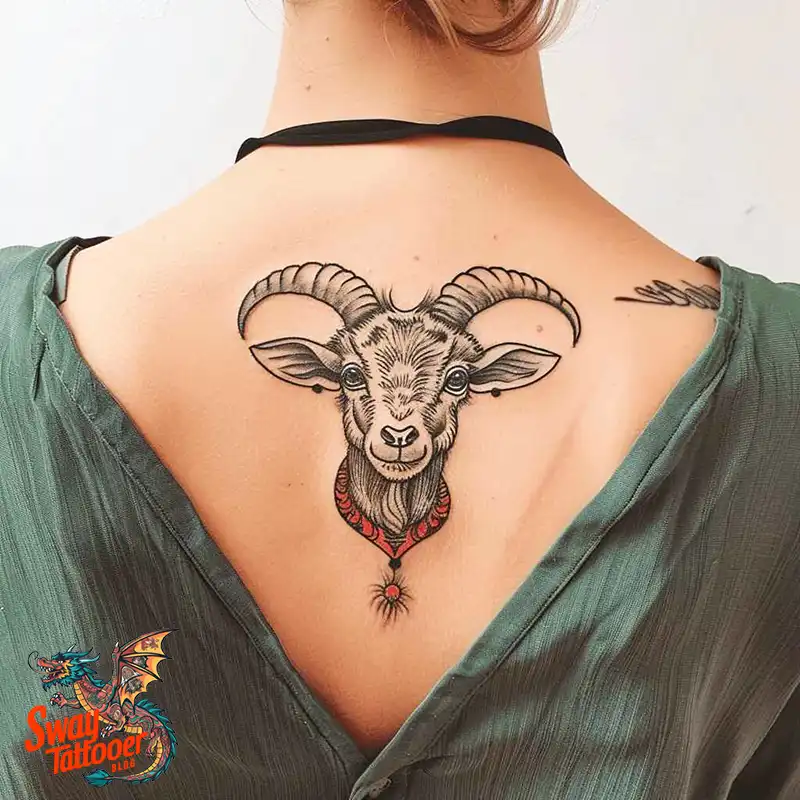
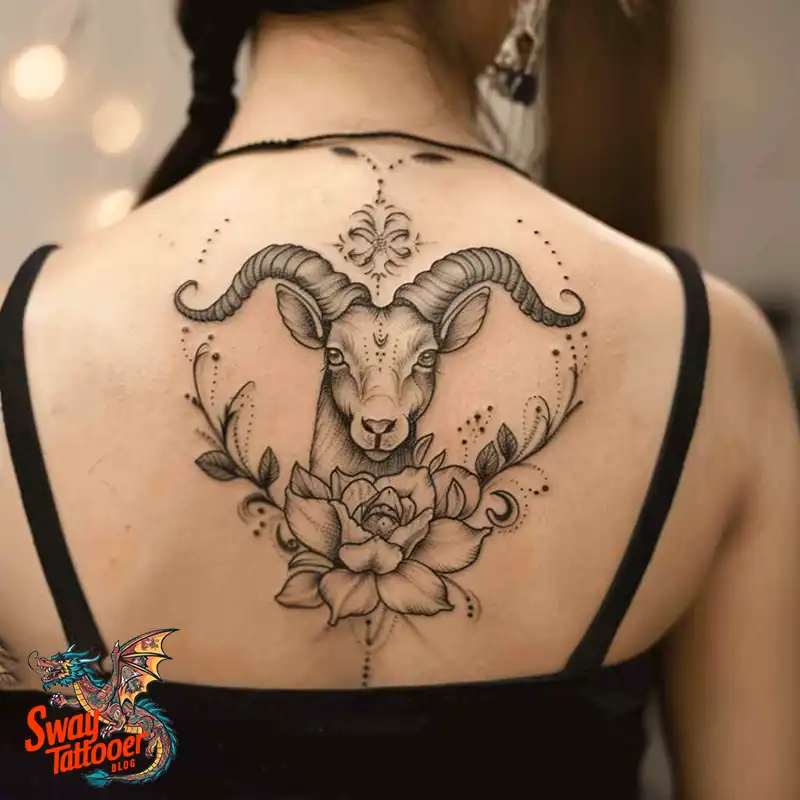
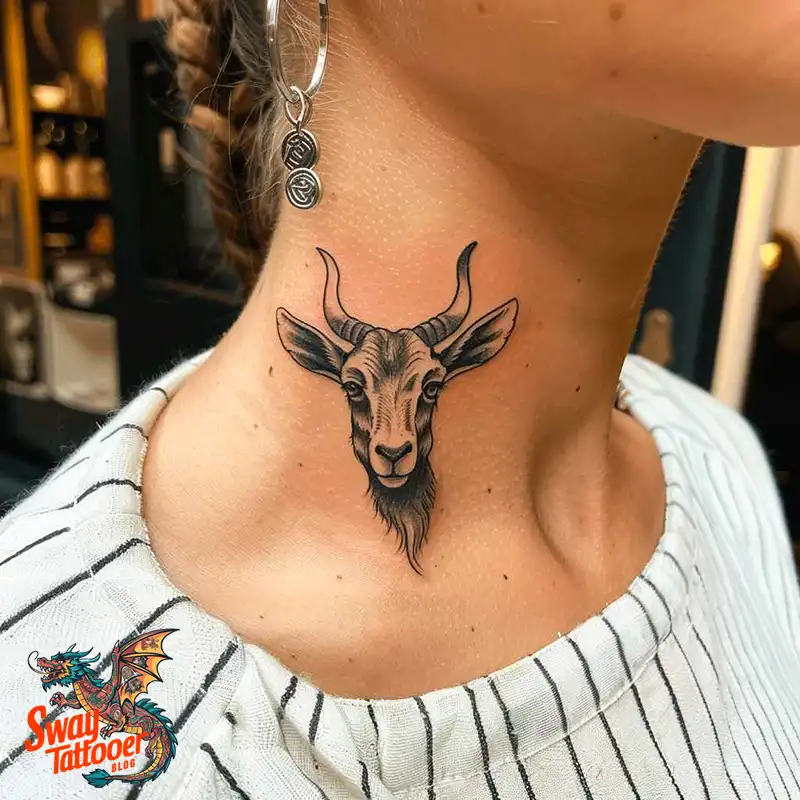
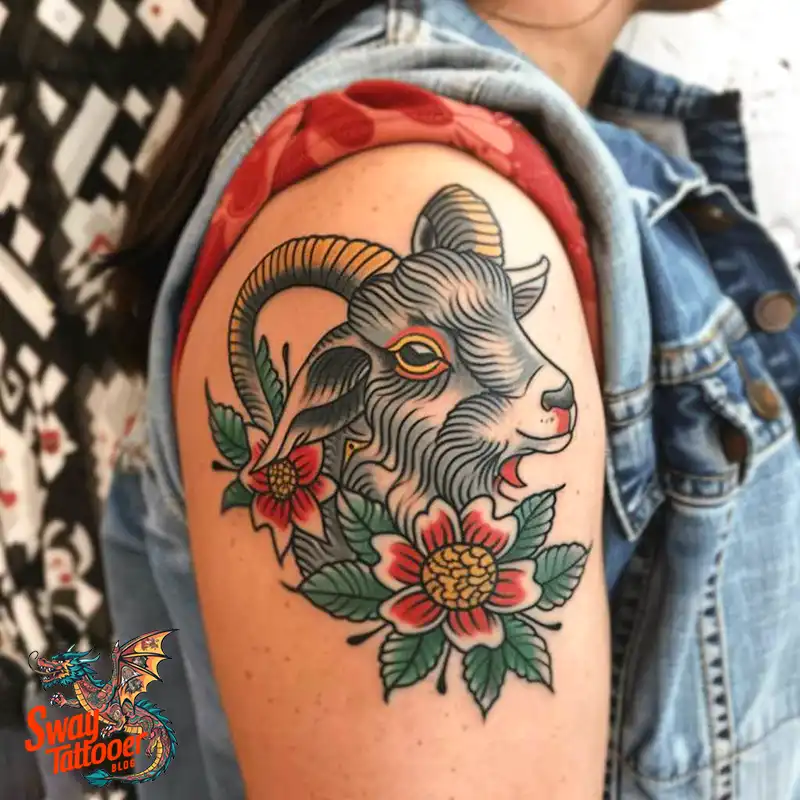
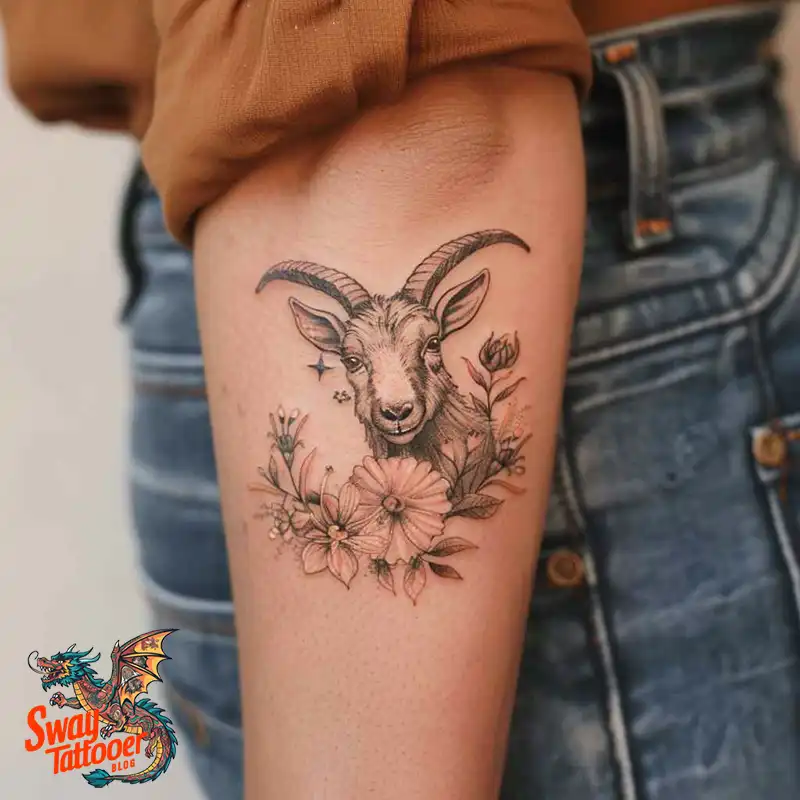
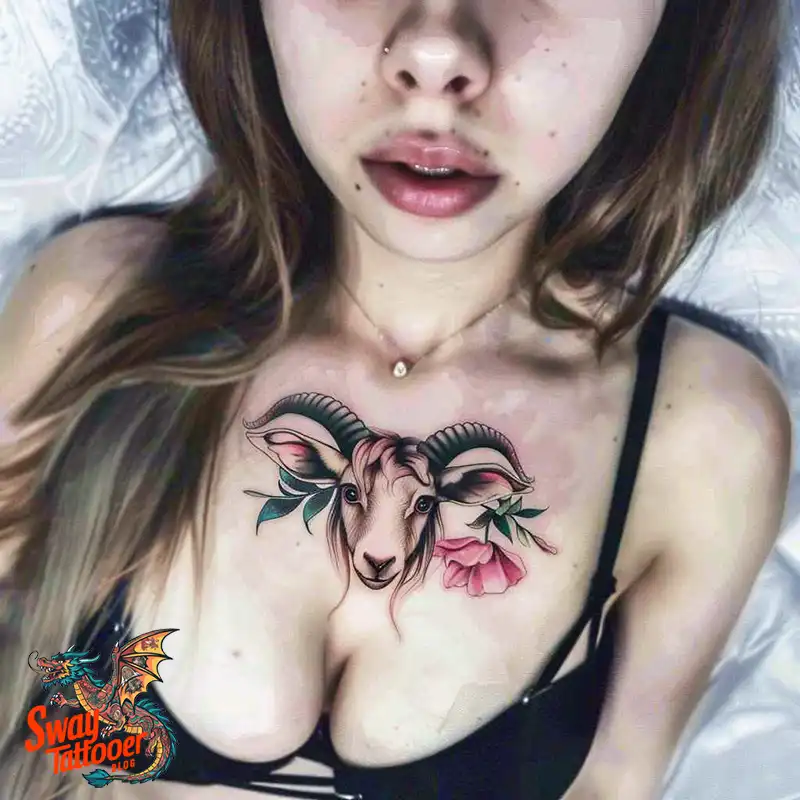
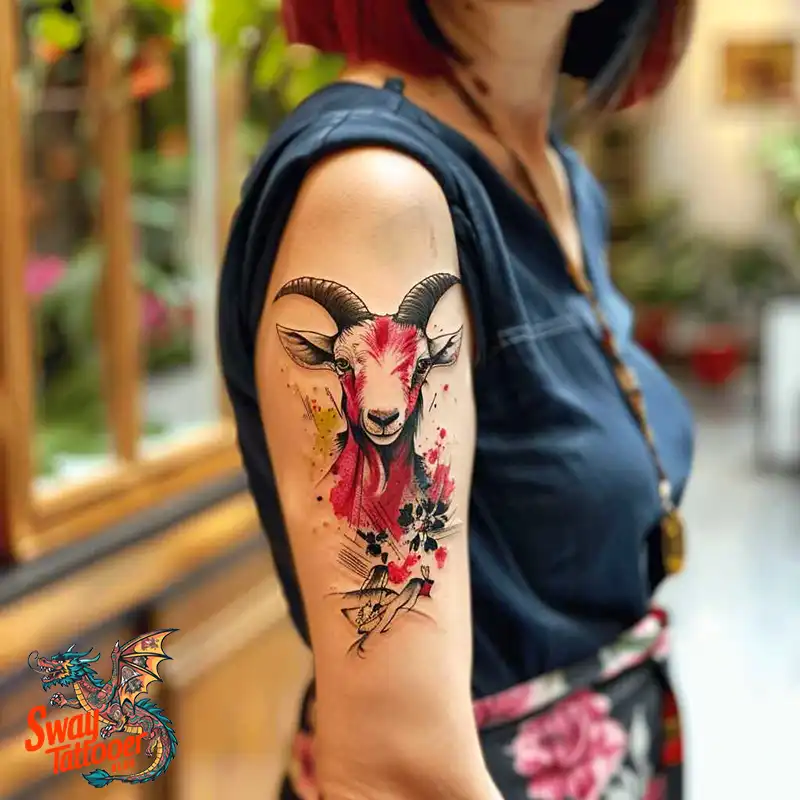
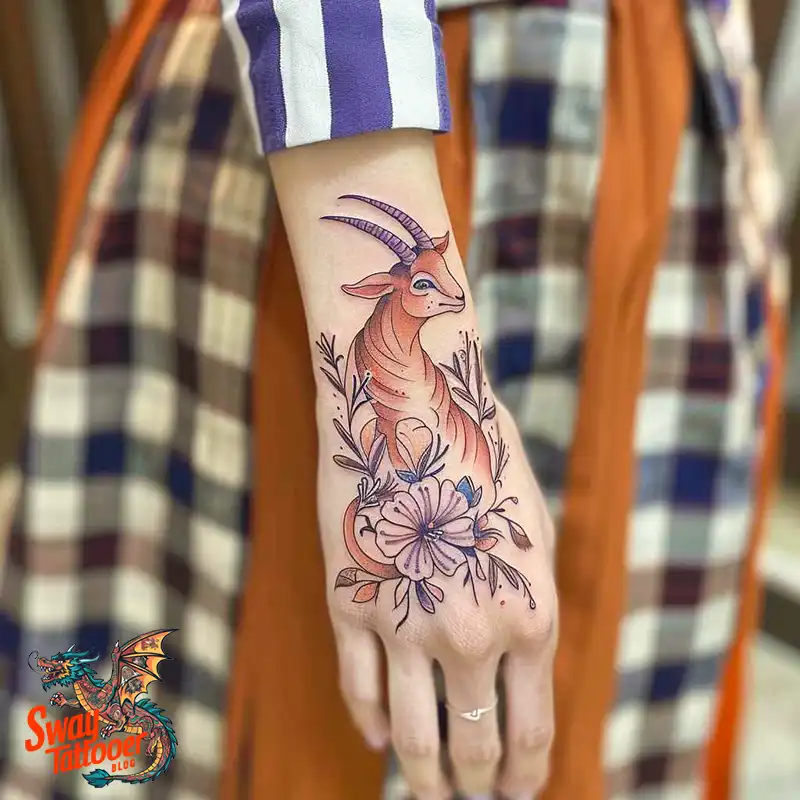
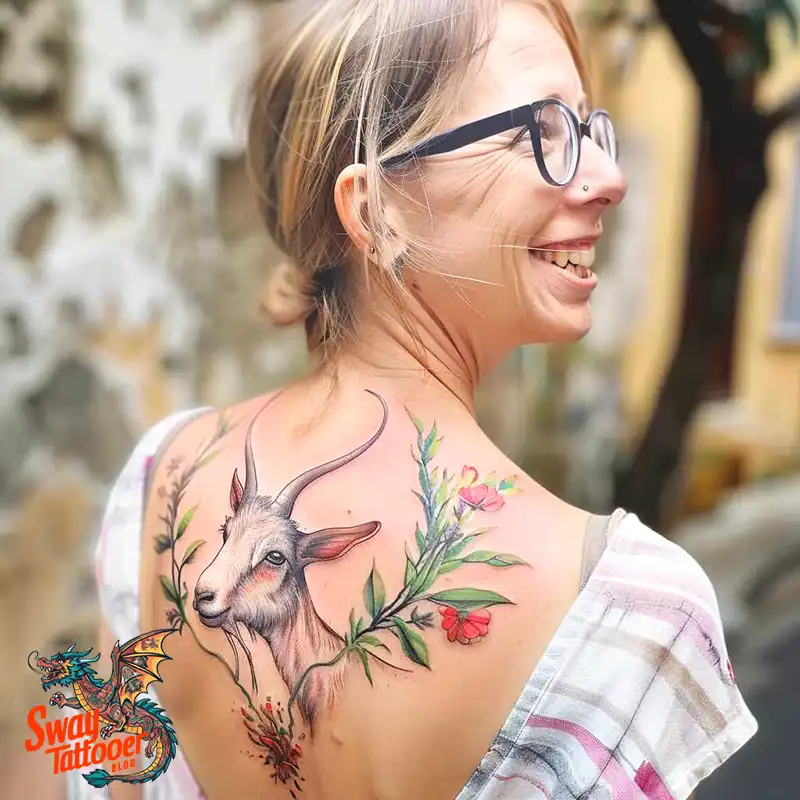
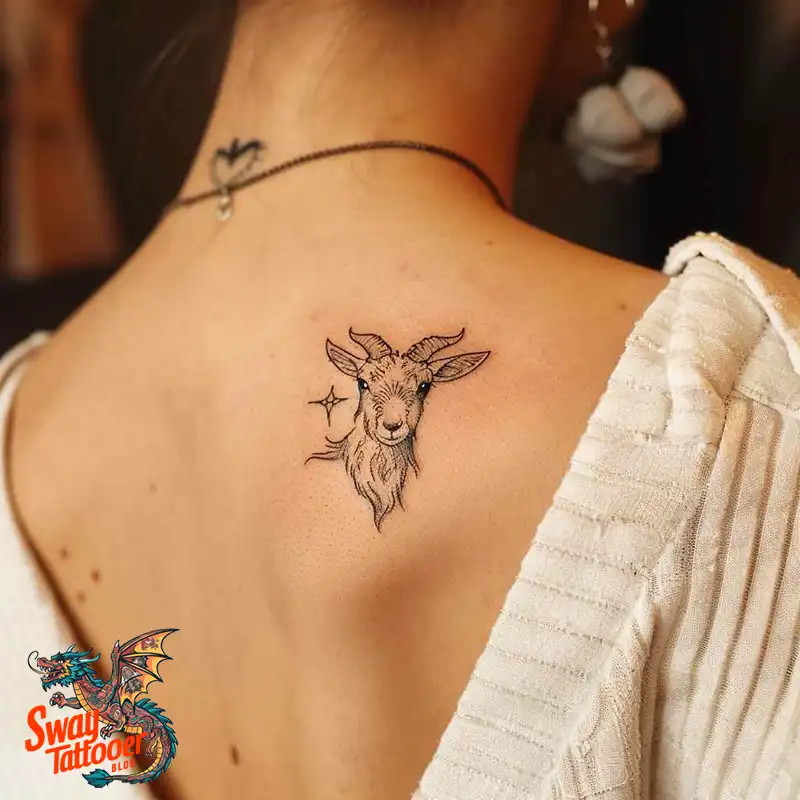
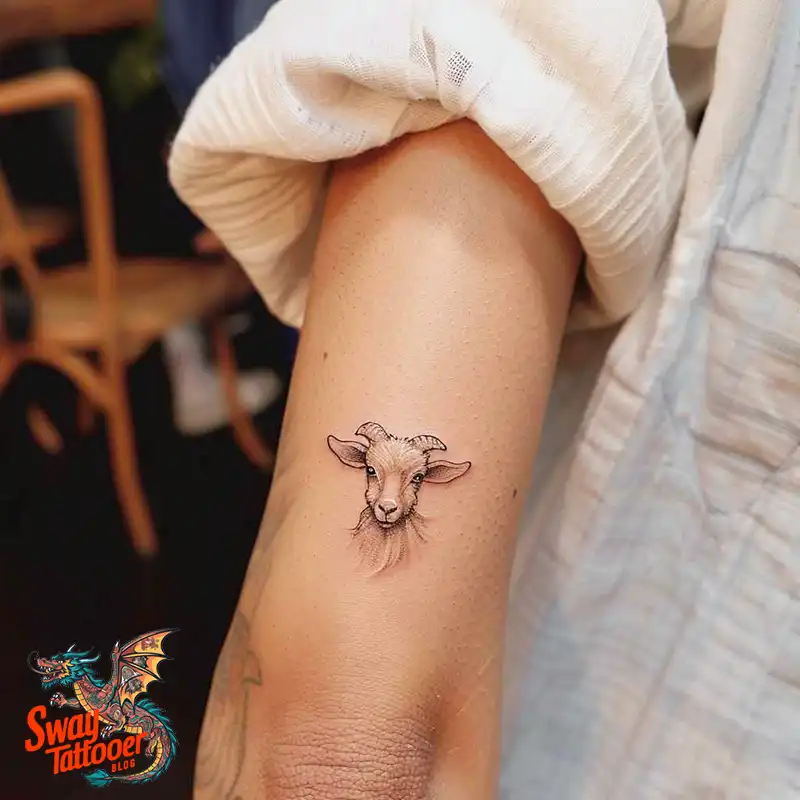
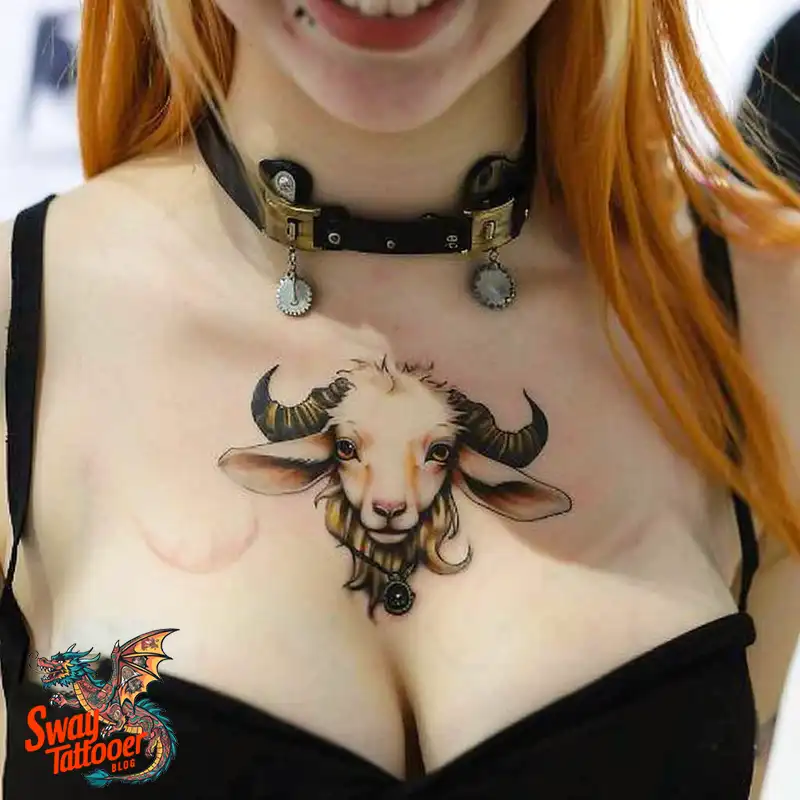
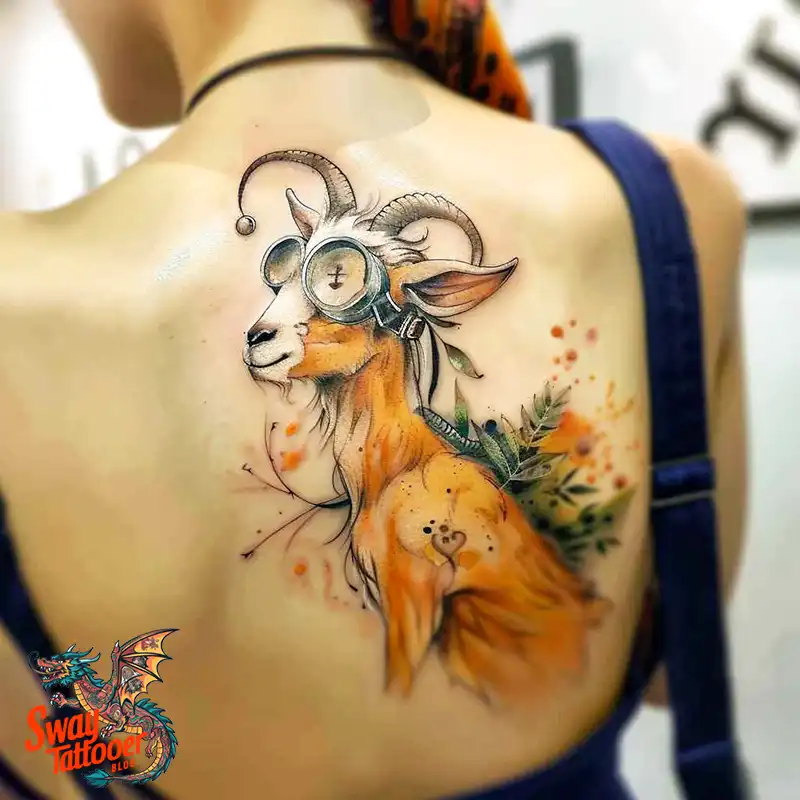
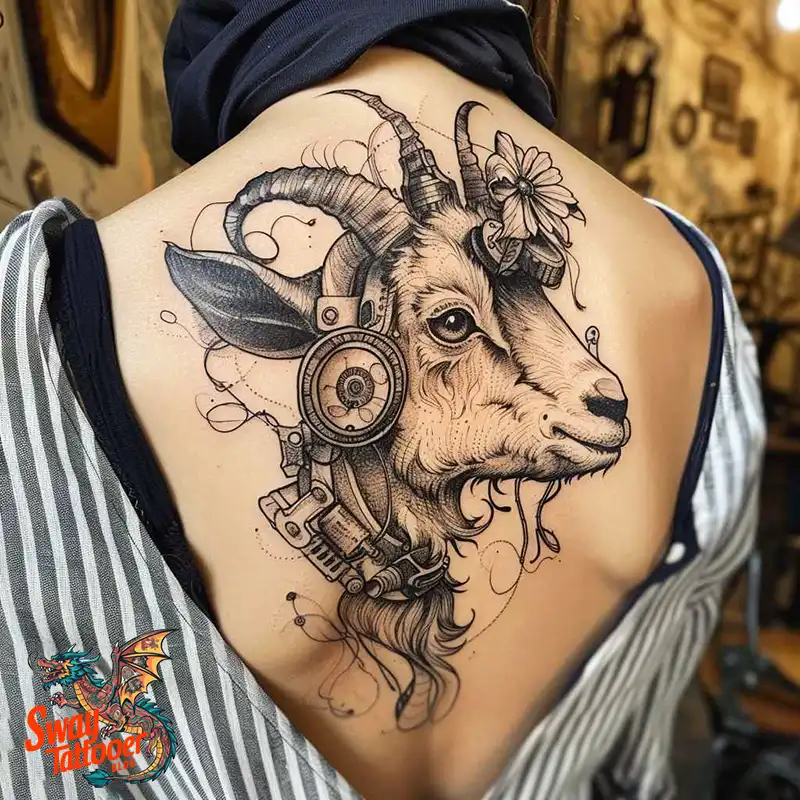
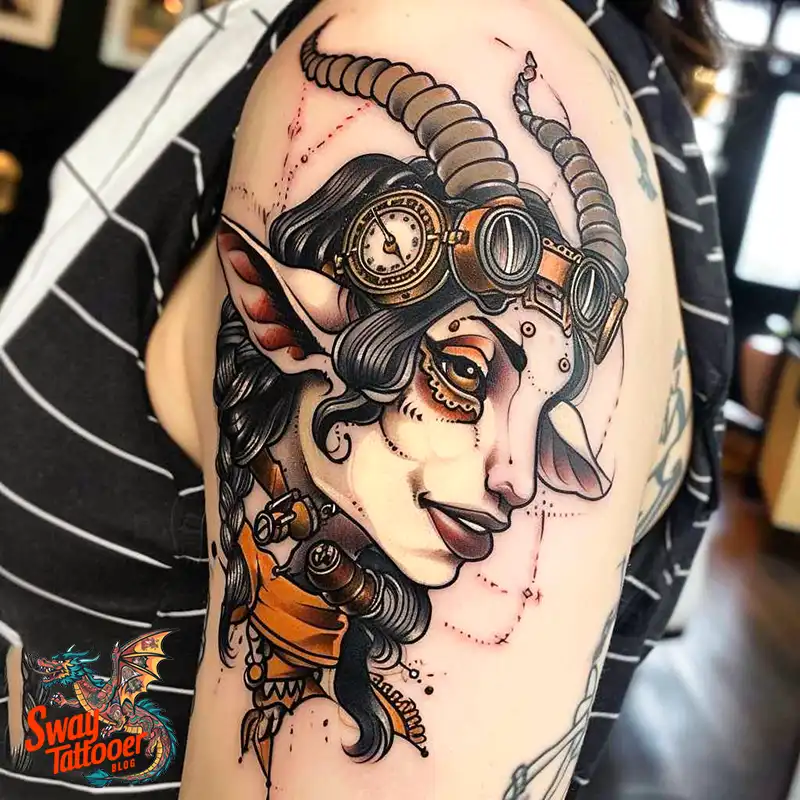
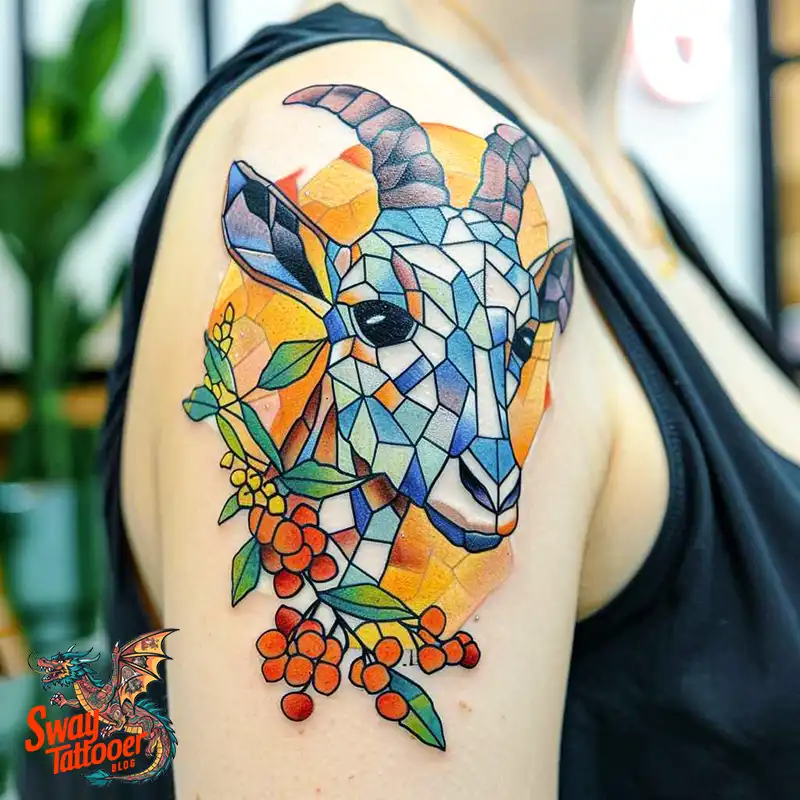
Understanding the Allure of Goat Tattoos:
Although animal tattoos may not be directly associated with goats, a look into the symbolism, mythology, and cultural significances depicting them goes further in unearthing a fine tapestry of meaning and appeal. This article explores the reasons why goat tattoos are becoming popular, the meanings associated with them, and a few design ideas for anyone considering this intriguing body art.
Symbolism of Goat Tattoos
Goats have been an inseparable part of human life for thousands of years. Throughout historical religious texts, mythological stories, and even astrology, goats hold their presence. Their symbolic meanings may vary; however, some common themes include the following:
- Resilience and Stamina: Goats take a stand supreme in any environment, signifying the proper bounceback and survival qualities.
- Inquisitiveness and Intelligence: Known to be inquisitive, goats symbolize curiosity and the quest for knowledge.
- Sacrifice and Atonement: Well accepted in most theistic religions, goats generally symbolize either atonement or redemption and are used in the sacrificial rituals.
- Fertility and Prosperity: Some cultures take them as fertility and prosperity symbols.
Cultural and Mythology Significance
Greek Mythology
The goat is a significant creation in Greek mythology. The god named Pan is a nature god which has half a person, half a bearded goat which has characteristics, and is associated with the shepherds, flocks, and wild. He is a specific symbol representing unrestrained passion, fertility, and the wild in nature. Capricorn is the constellation that shows itself as the goats to represent ambition, discipline, and practicality; it also belongs to one of twelve star signs.
Goats, in Norse mythology, are depicted to draw the chariot of the thunder god Thor. While Tanngrisnir and Tanngnjóstr portray the very image of power, they also serve as a means of nourishment as Thor could consume them for dinner only to resurrect by dawn.
Christianity
In Christian symbology, goats accompany much more negative connotations. They are sometimes regarded as a representative of sin or the devil. Yet, this is the paradox of human nature. We have our good and our bad, and this is a direct reflection of precisely that.
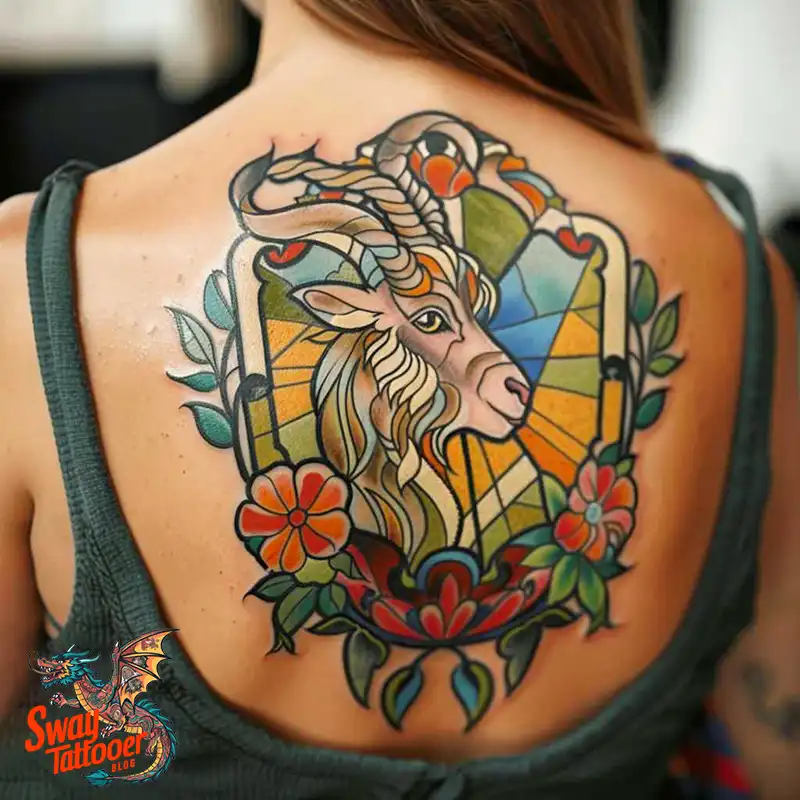
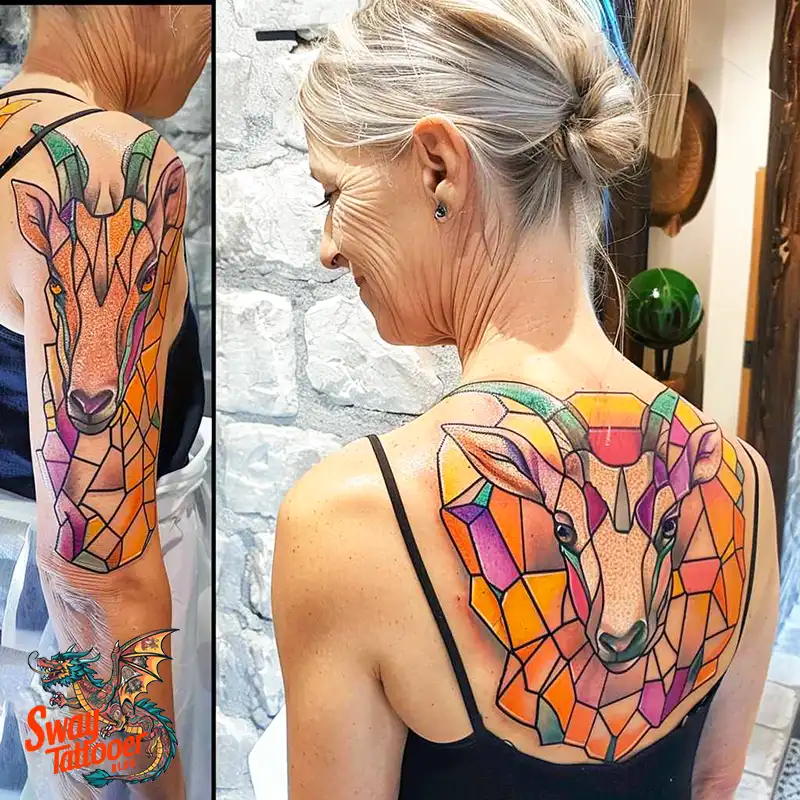
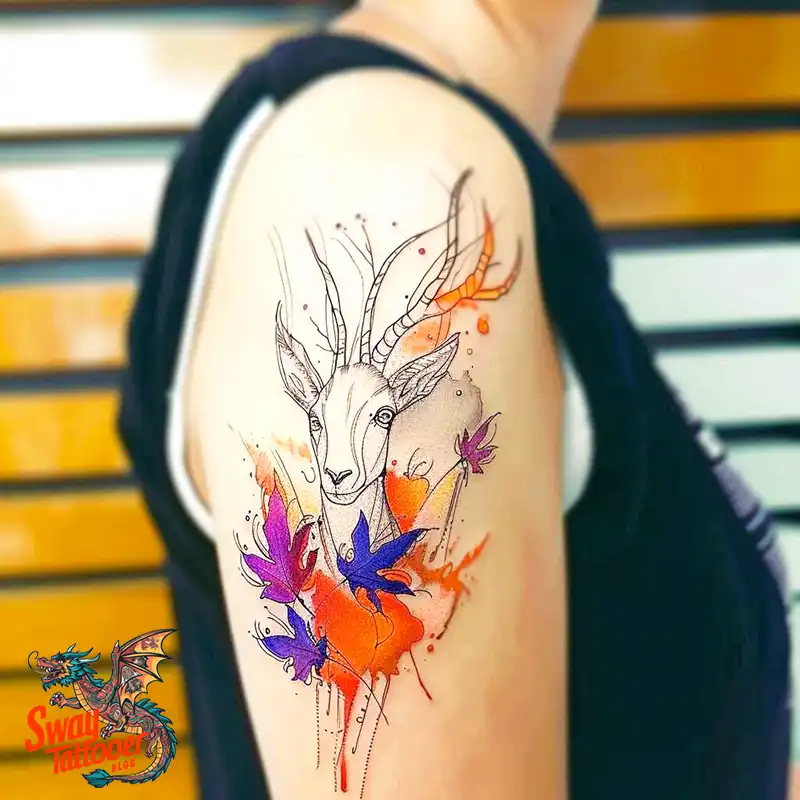
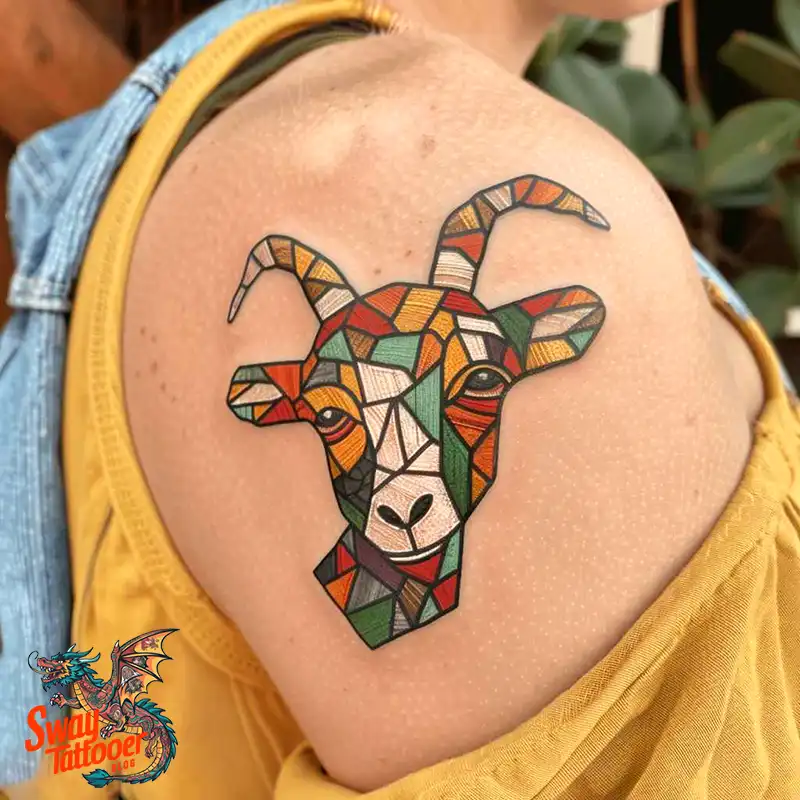
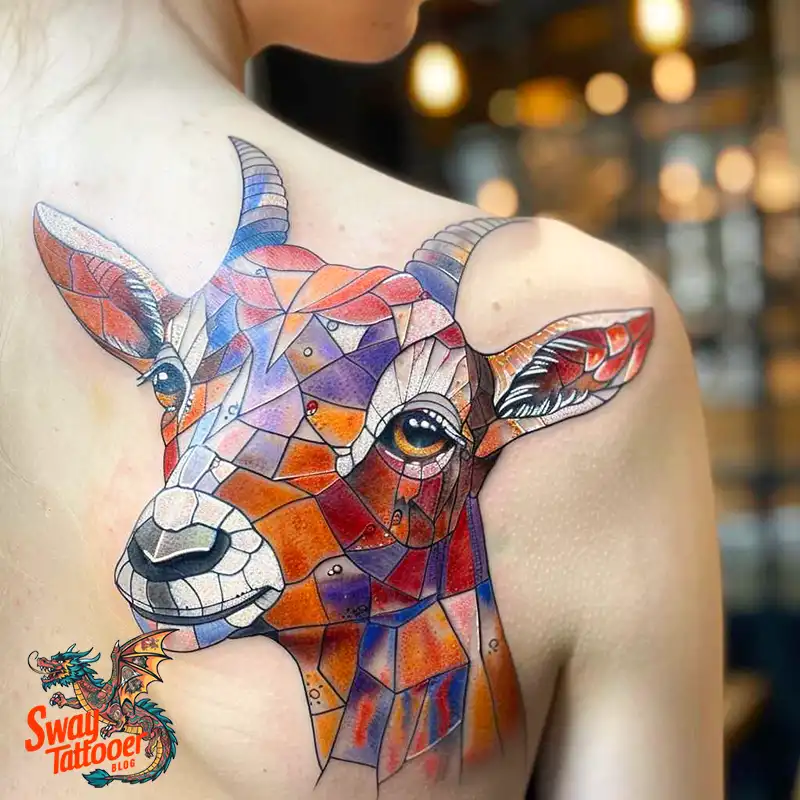
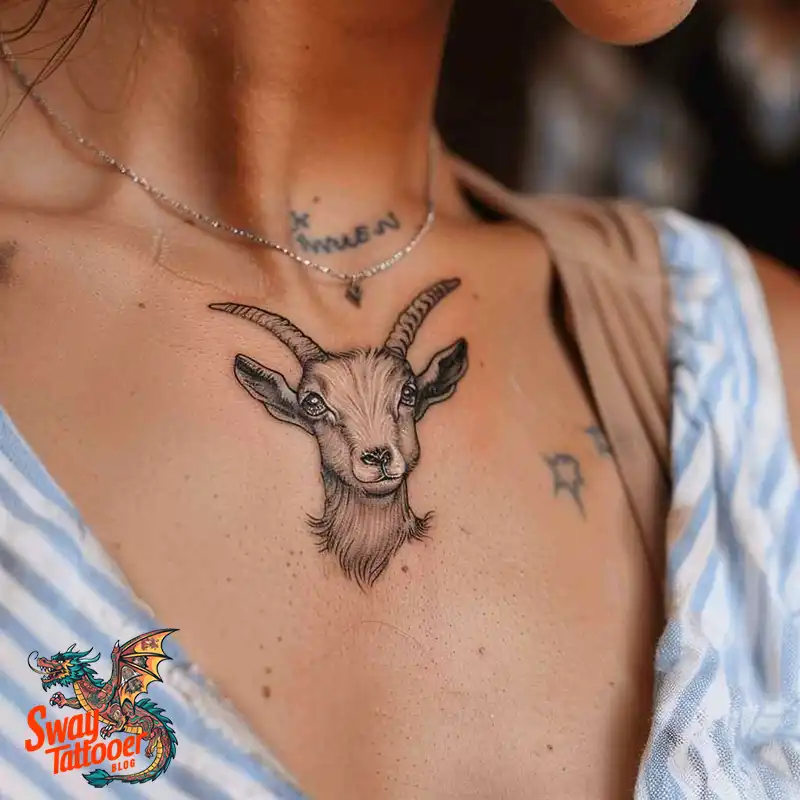
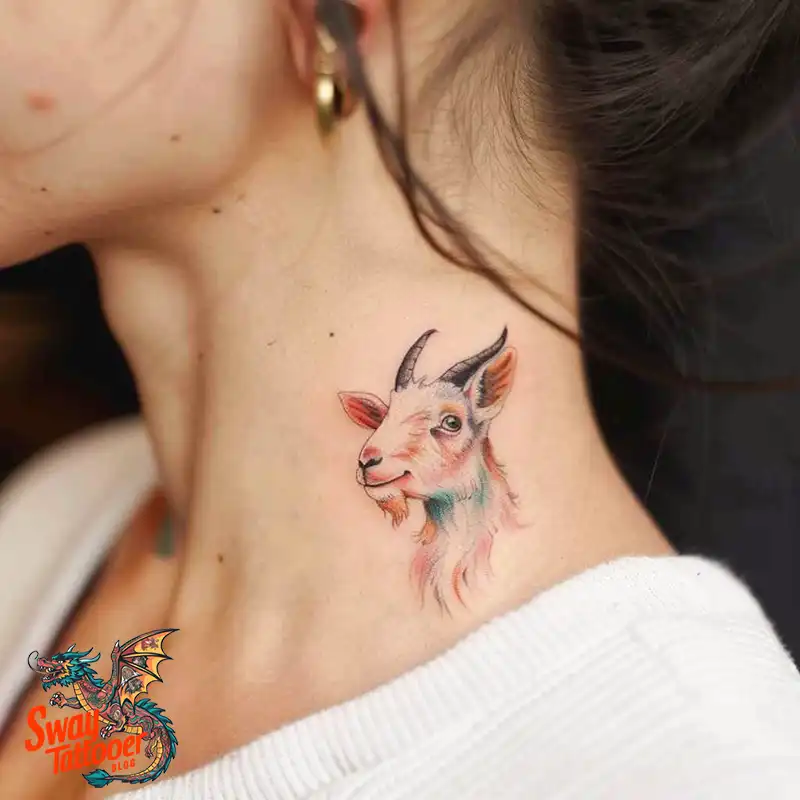
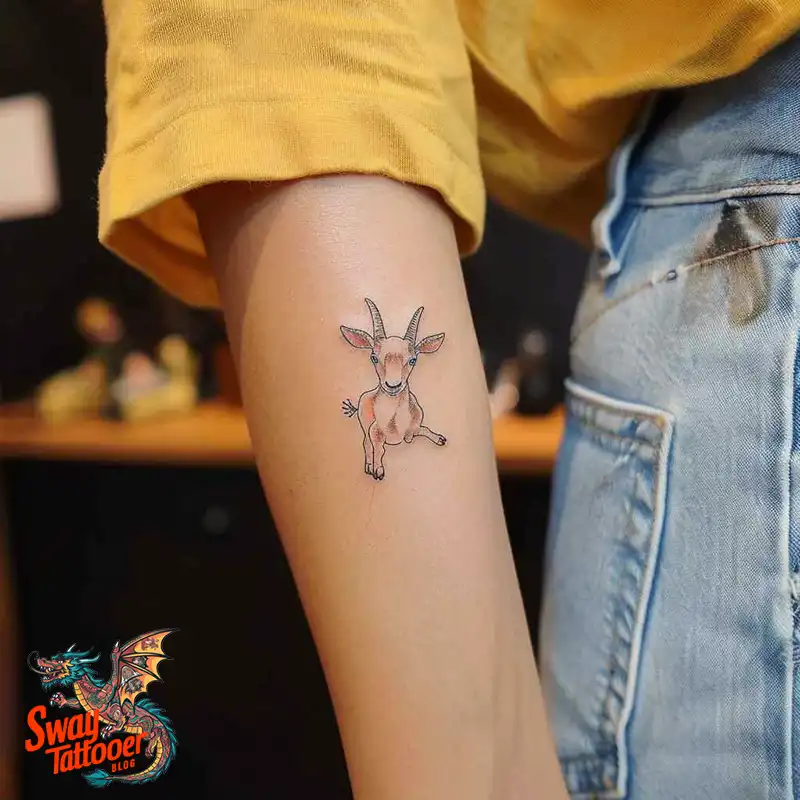
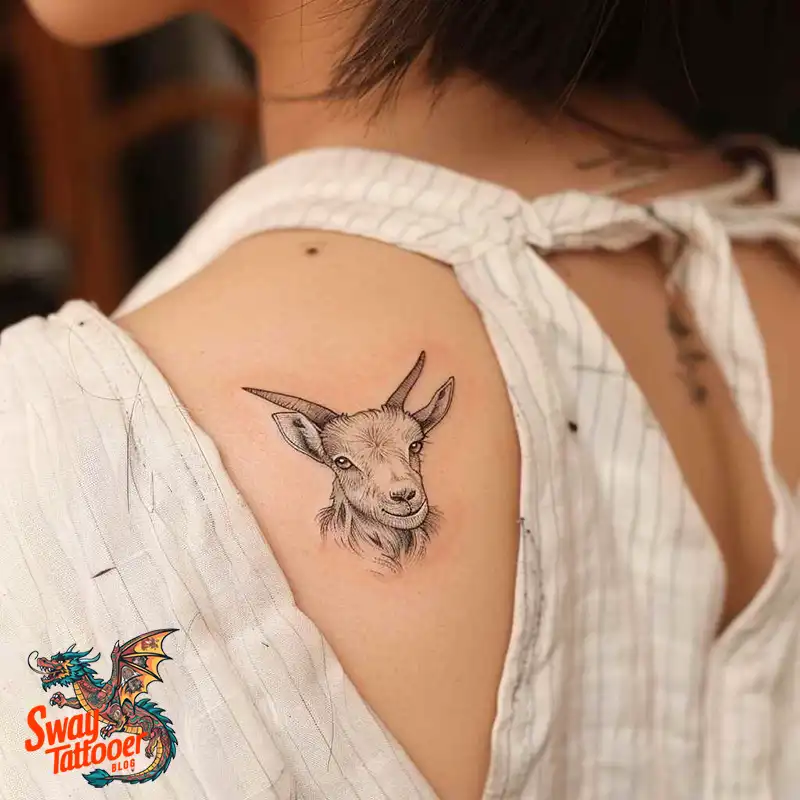
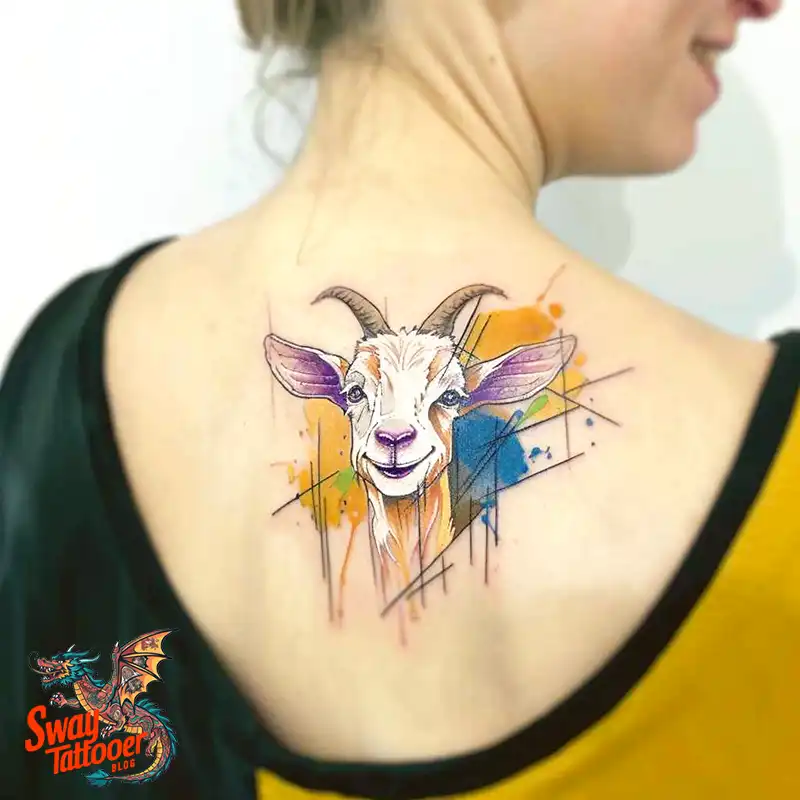
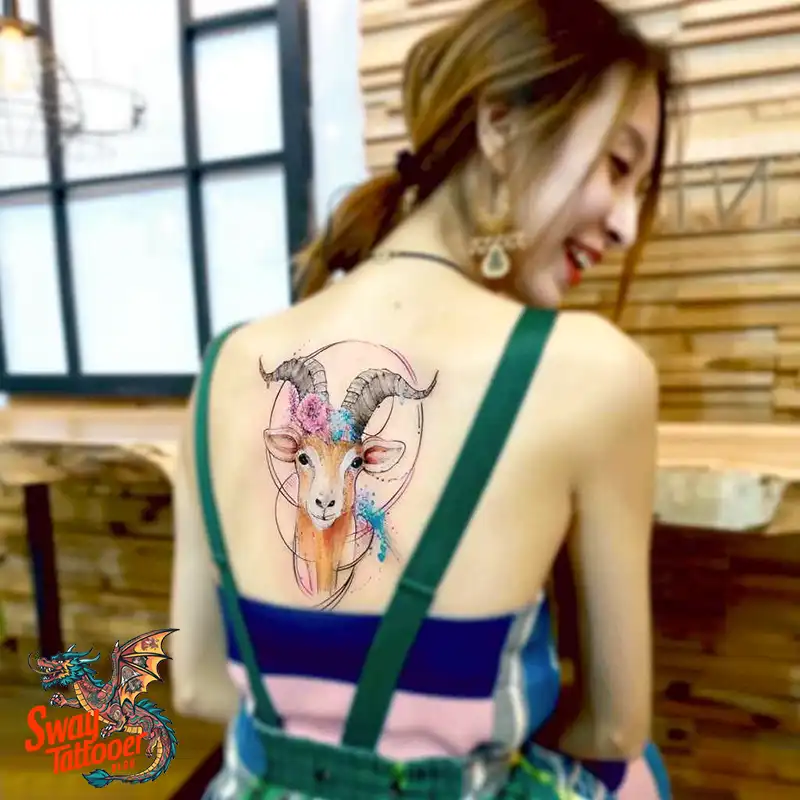
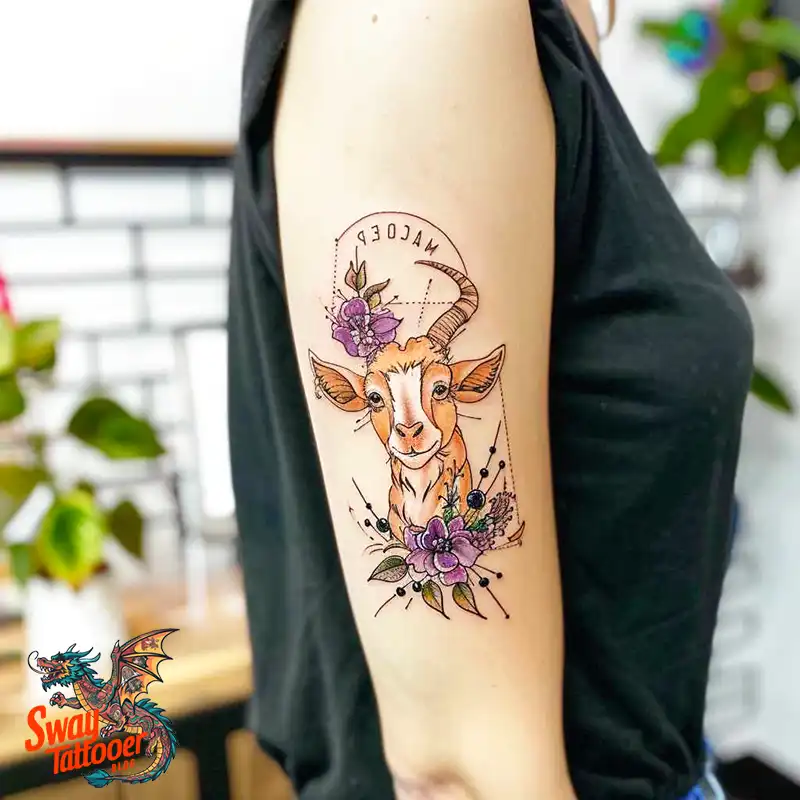
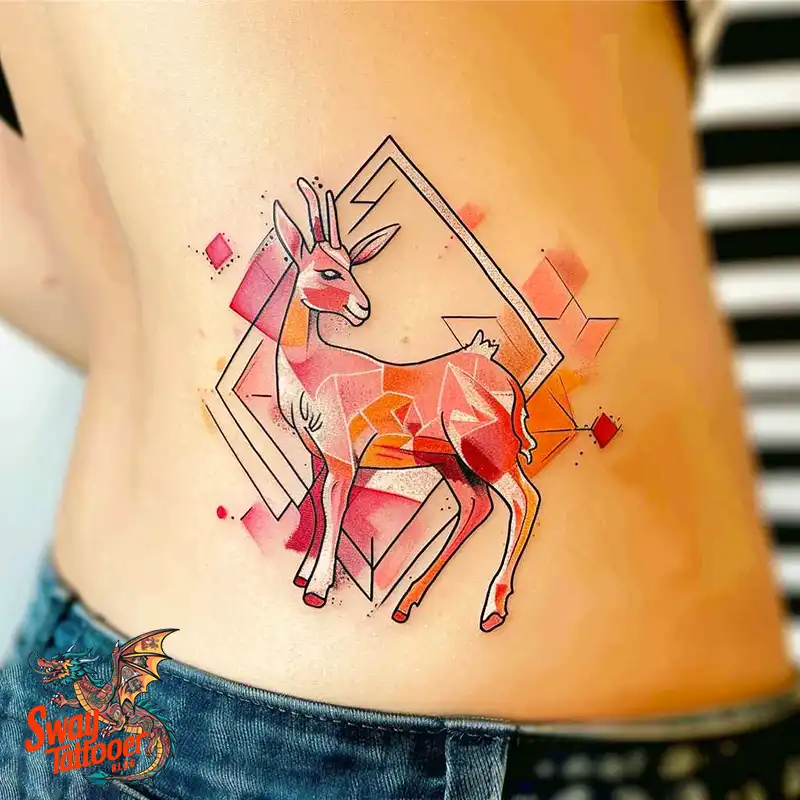
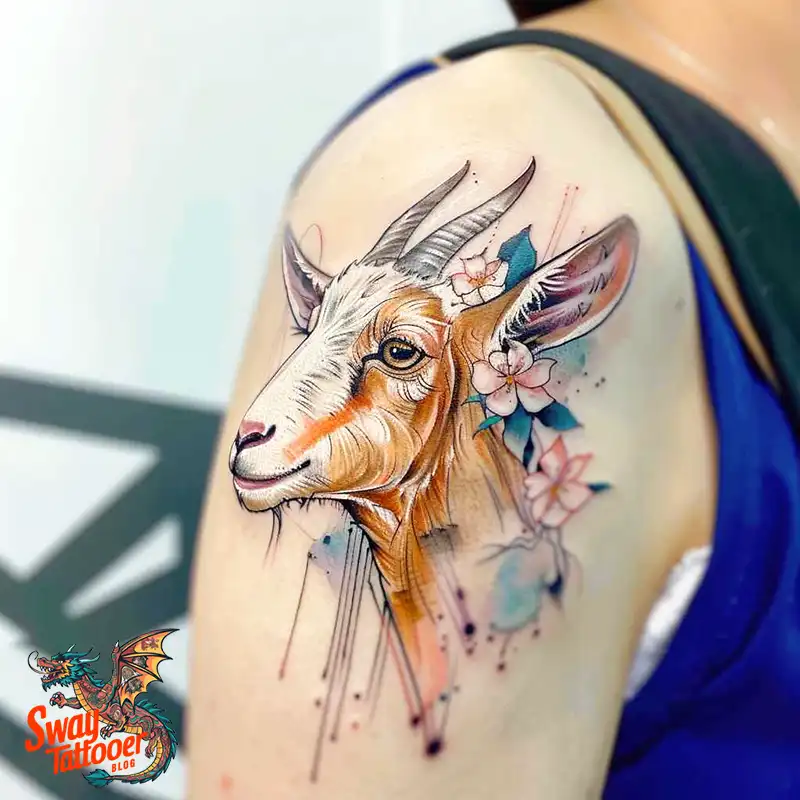
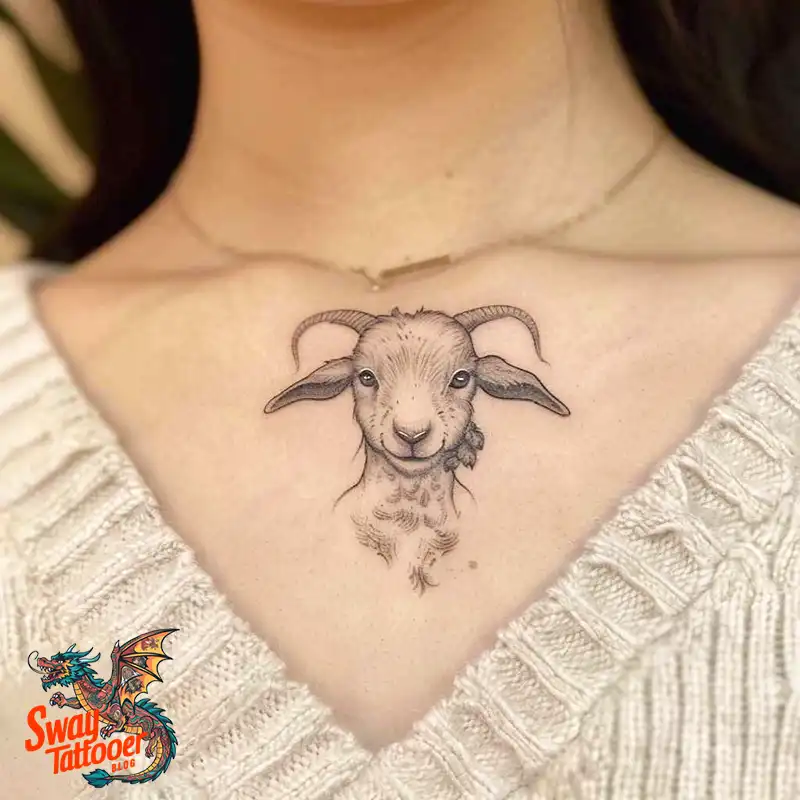
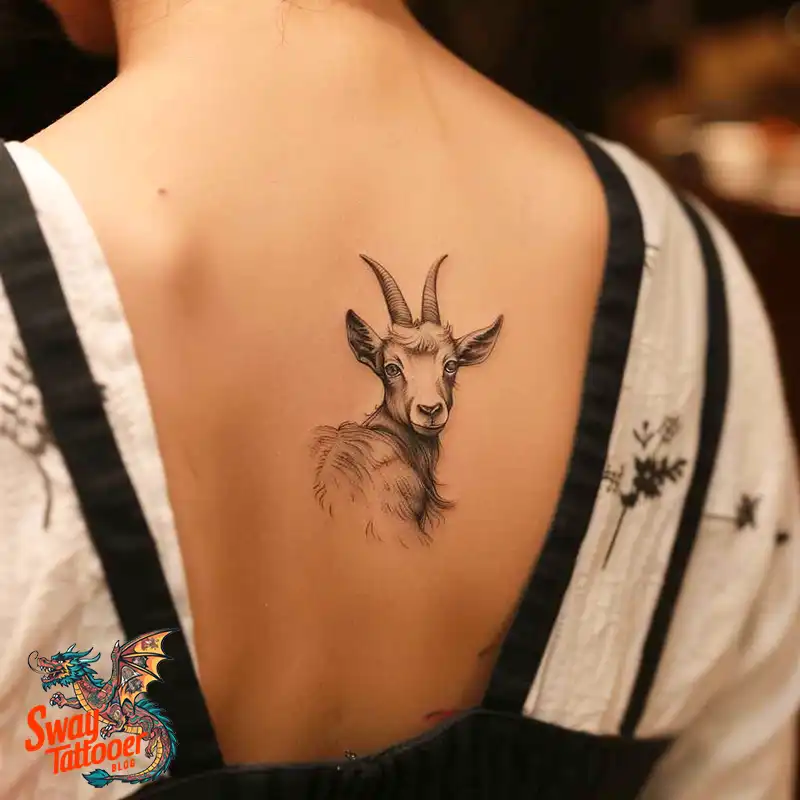
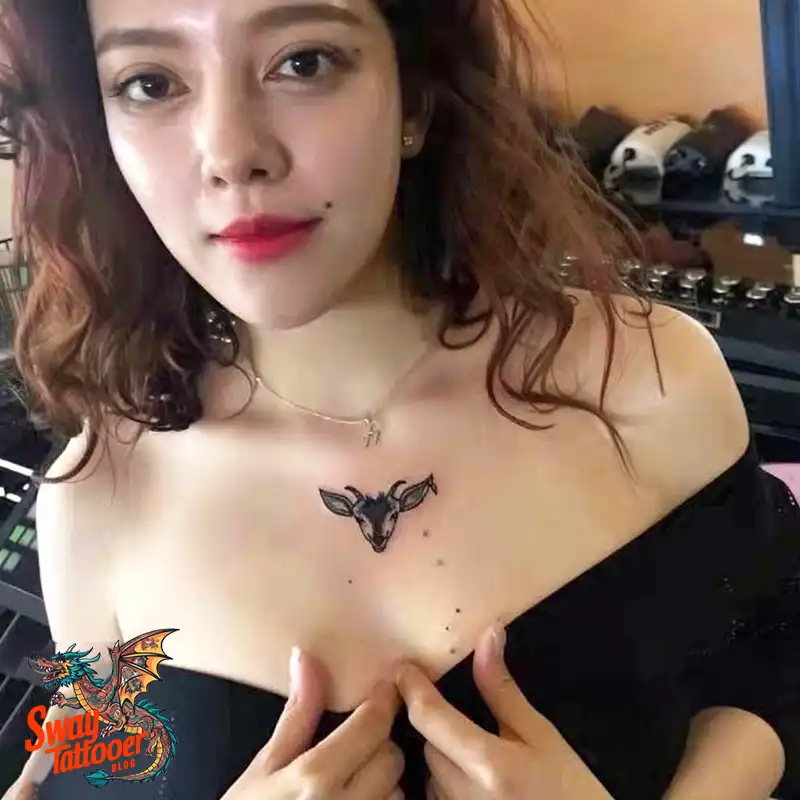
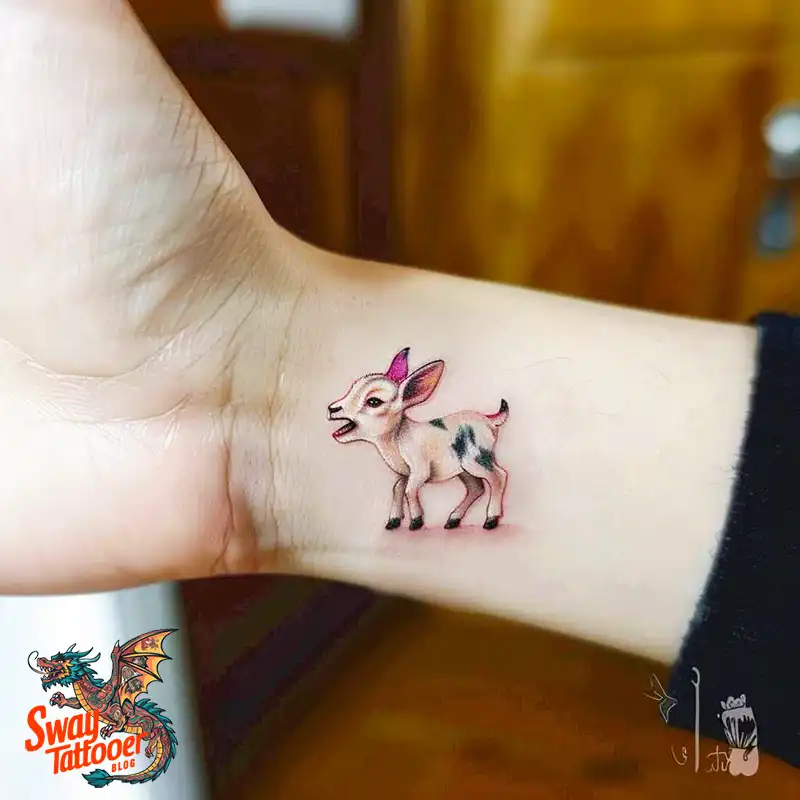
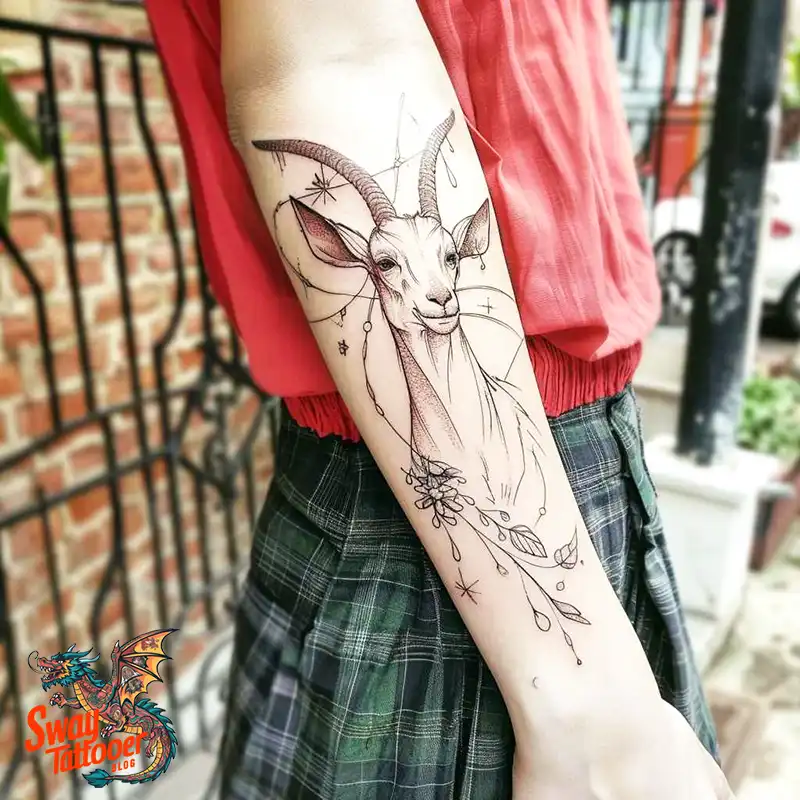
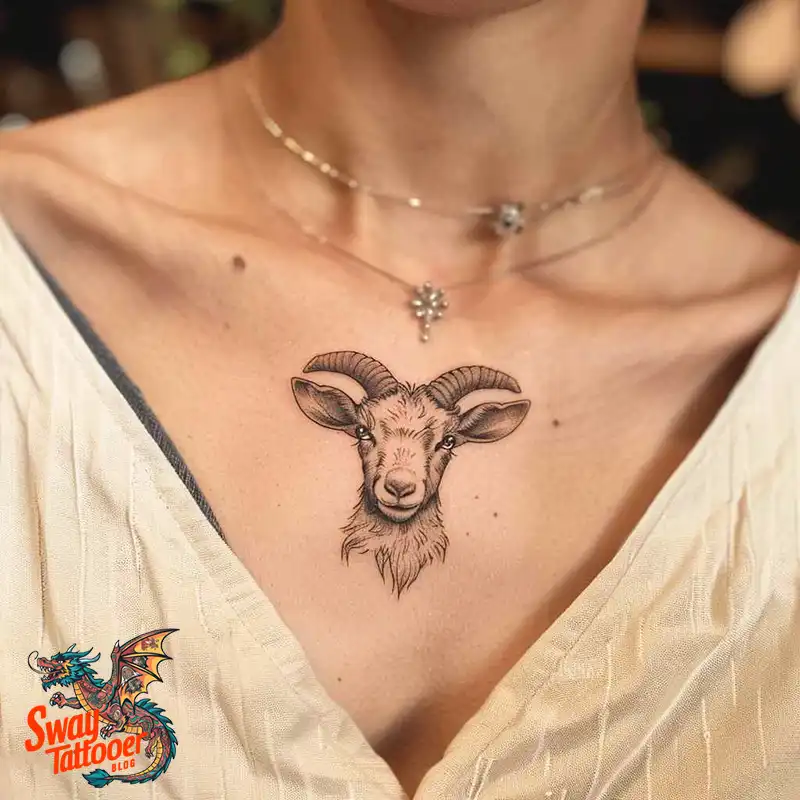
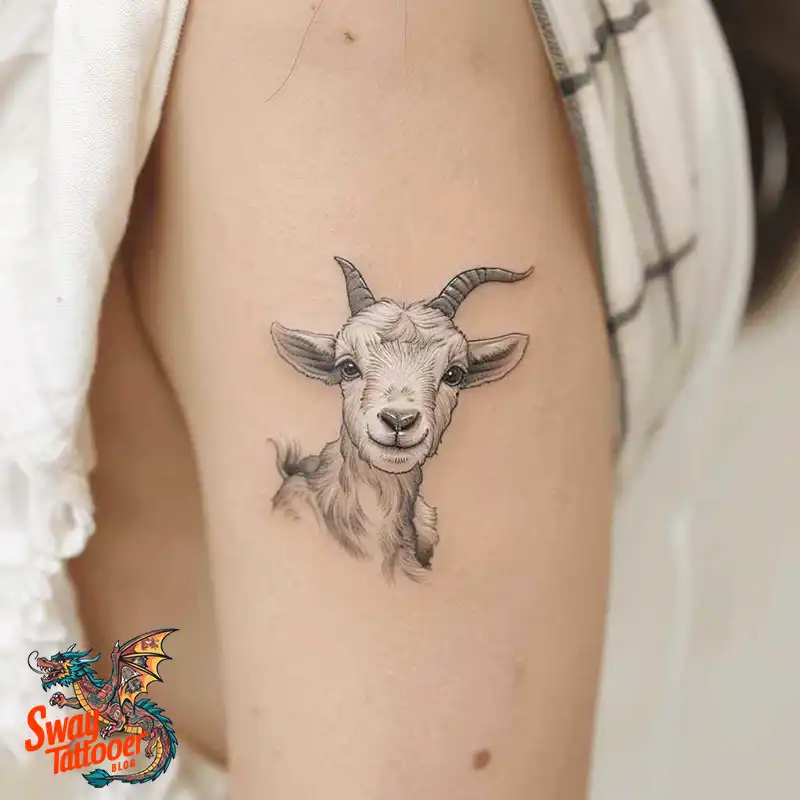
Popular Goat Tattoo Designs
In actuality, the potential designs are just about infinite. Here are a few popular approaches and elements you may wish to consider:
Realistic Goat Tattoos
- Realistic Portraits: One of the most realistic portrayals would be of a goat. The flex in its eyes and the feel of its fur.
- Environmental Setting: Goats in their environmental setting. This could be a rocky landscape, a field of green on a farm, etc.
Mythological Goat Tattoos
- Pan: The greek deity Pan was most often portrayed playing on the panpipes, either alone or surrounded by natural surroundings and aspects.
- Capricorn: The sea-goat imagery combines terrestrial and aquatic features and is very often stylized using astrological symbols and elements.
Symbolic Goat Tattoos
- Geometric Patterns: Geometrical shapes and lines to make an abstract, contemporary goat.
- Minimalist Designs: Using very limited, clean lines to capture what a goat is all about without really overdoing the details.
Placement Considerations
The placement of a goat tattoo can often have a very huge significance. Some common areas and associated meanings have been listed below:
- Forearm: This is a very versatile placement and would be highly detailed and high in visibility; hence, it could translate to strength and resilience.
- Back: A large and major piece representing a major personal belief or commitment.
- Chest: Near the heart, thus deeply personal or spiritual.
- Leg or Thigh: Often used for larger pieces; translates to stability and grounding.
Creatives and Aftercare Processes
Consultation and Design
- Research: Find a tattoo artist who specializes in the style you want.
- Consultation: Tell the artist everything you have in mind, and if there are any symbolic elements, they should be included in the tattoo.
- Customization: Draw up a design for anything that means something to you.
Tattooing
- Preparation: An area is already prepared, cleaned, and shaved.
- Procedure: It might take hours depending on the size; the process is such that it can even be several hours.
- ** Pain Management ** : It’s going to hurt a little, but it’s usually bearable.
Aftercare
- Initial Care: You really only need to keep it clean and well-moisturized, as per your artist’s advice.
- Healing: Stay out of the sun and avoid swimming until your tattoo is fully healed.
- Long-Term Care: Keep it well moisturized; use sunblock to protect it.
Goat tattoos offer a unique blend of symbolism, cultural significance, and aesthetic appeal. Be it through its mythological underpinning, the symbolism for resilience and curiosity, or just the striking visuals the goat holds, a tattoo of a goat is one beautiful, rather unique addition to your artistic inclinations. Understand the deep meanings that your chosen design holds; work with a resourceful artist, and you will be having a tattoo that not only looks amazing but also holds the power of telling a story.
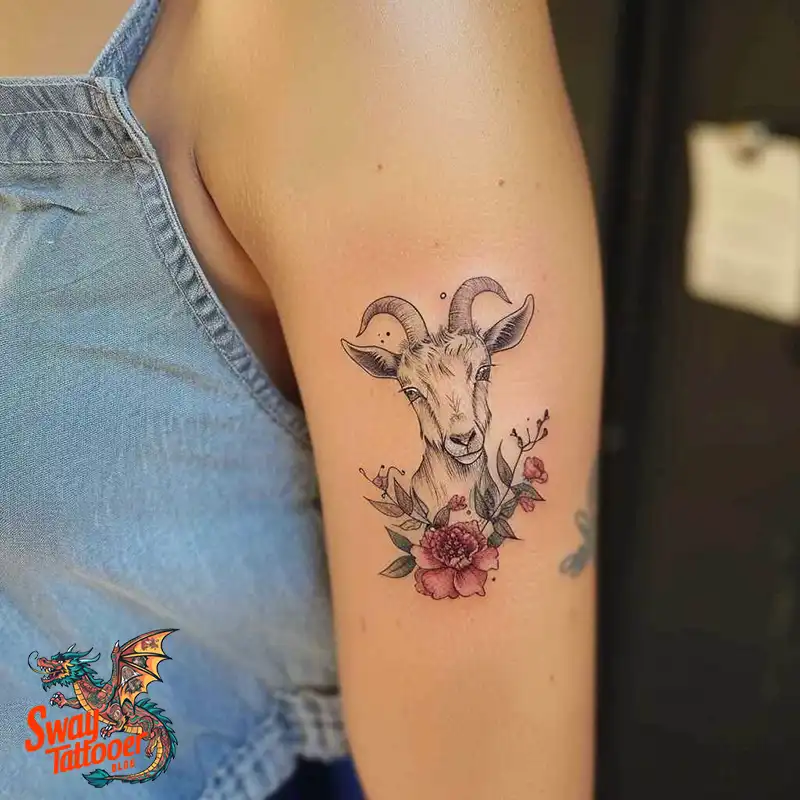
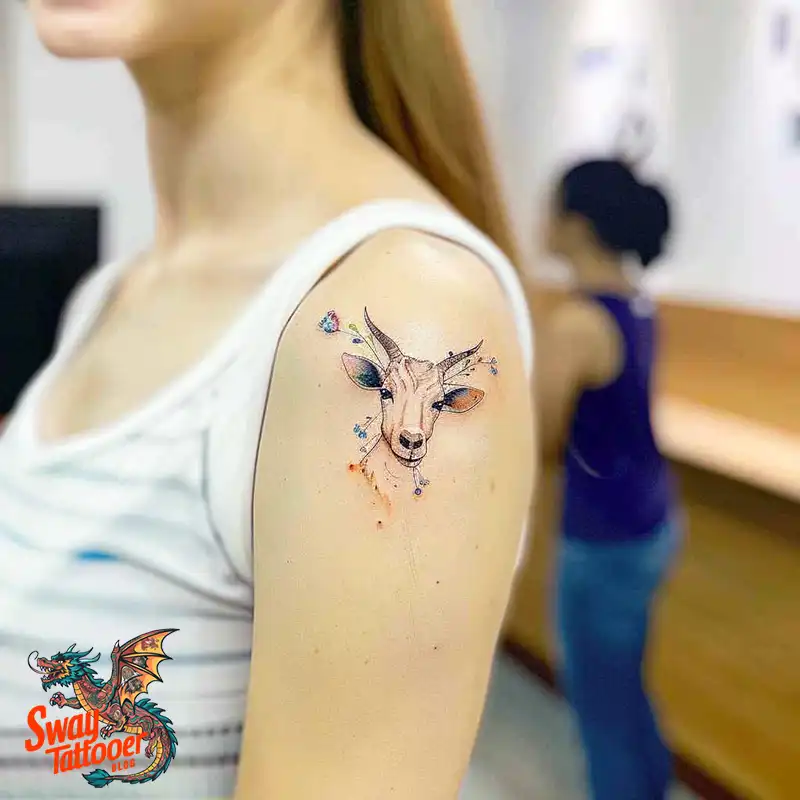
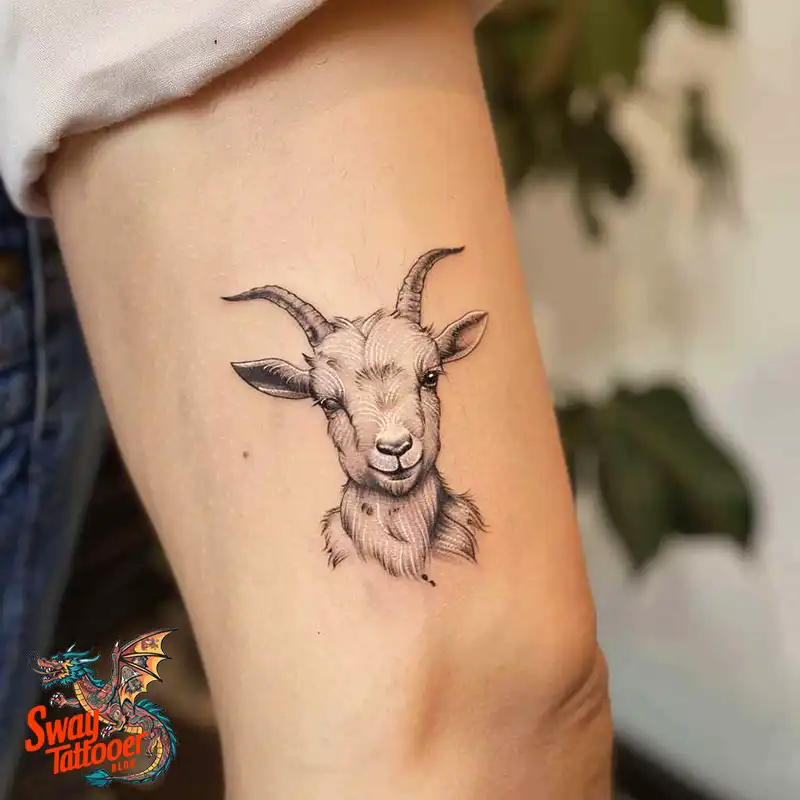
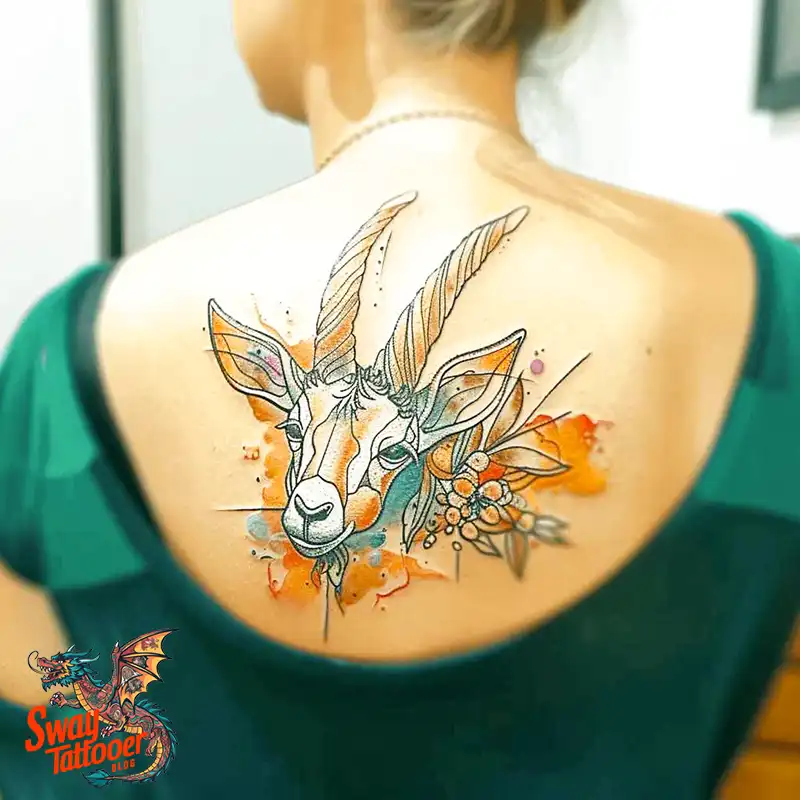
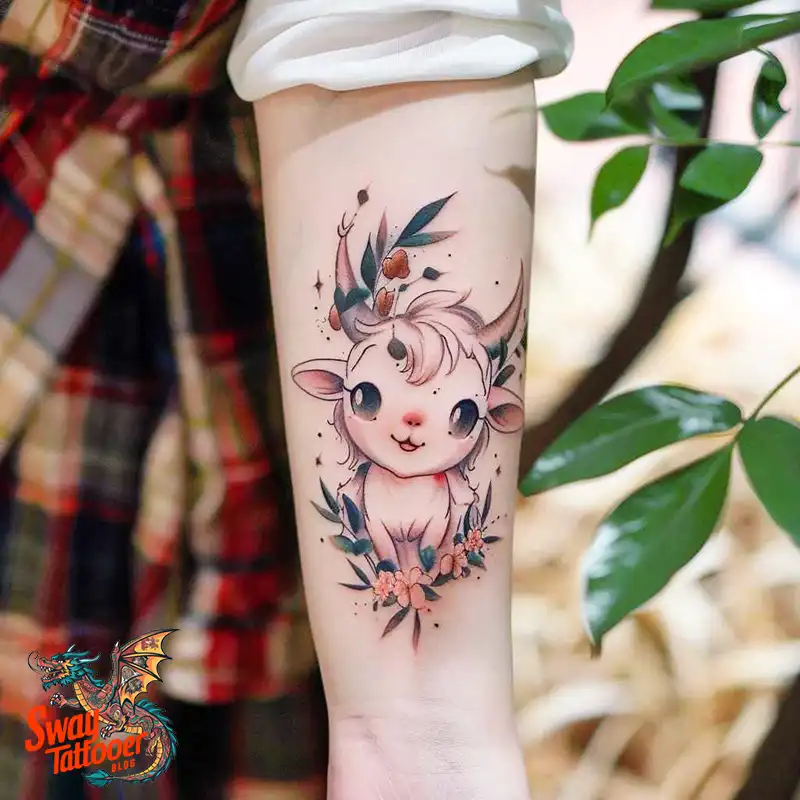
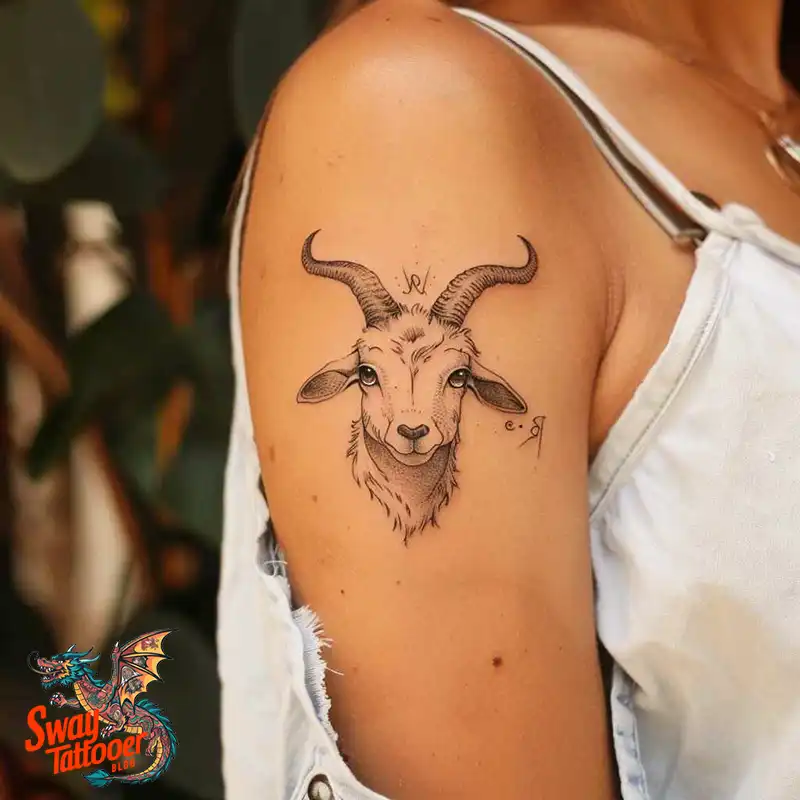
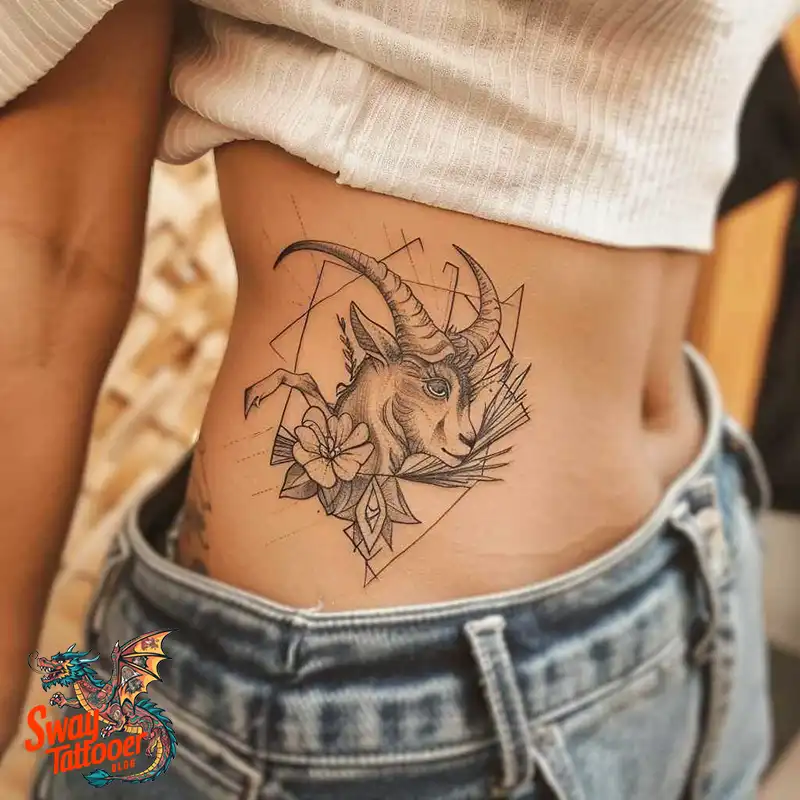
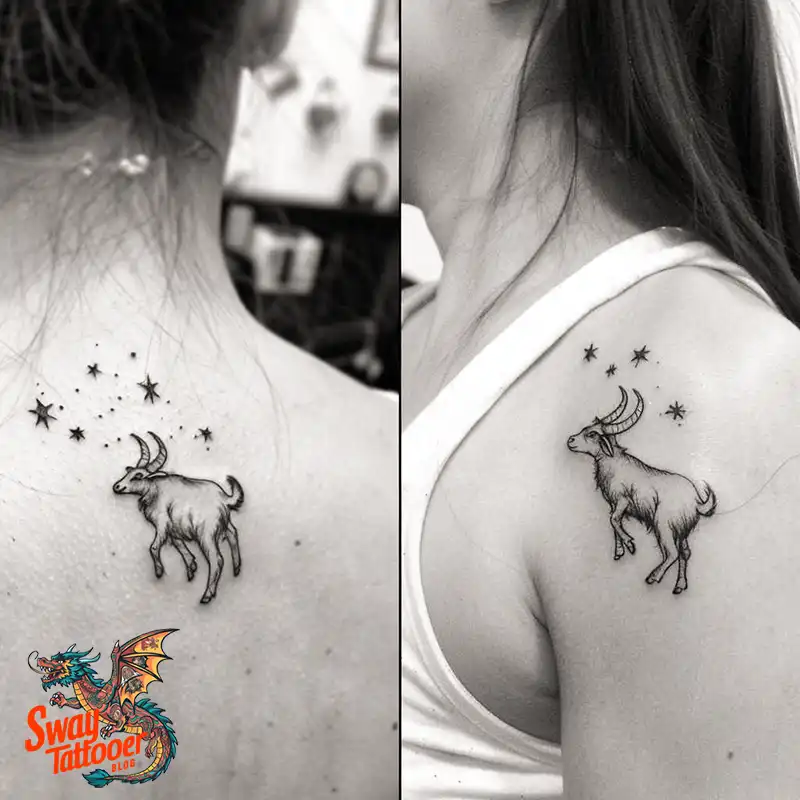
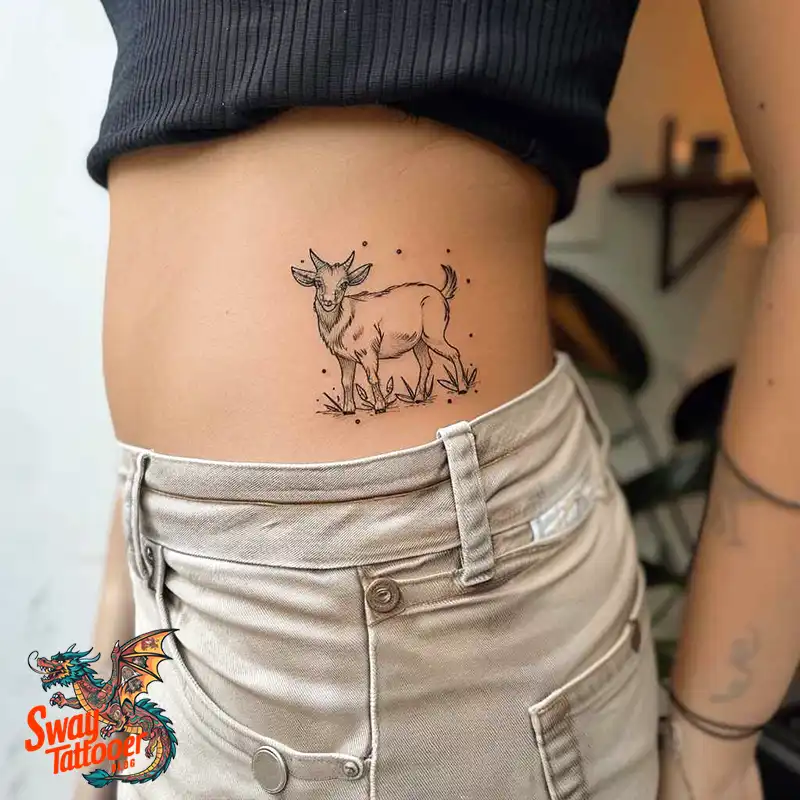
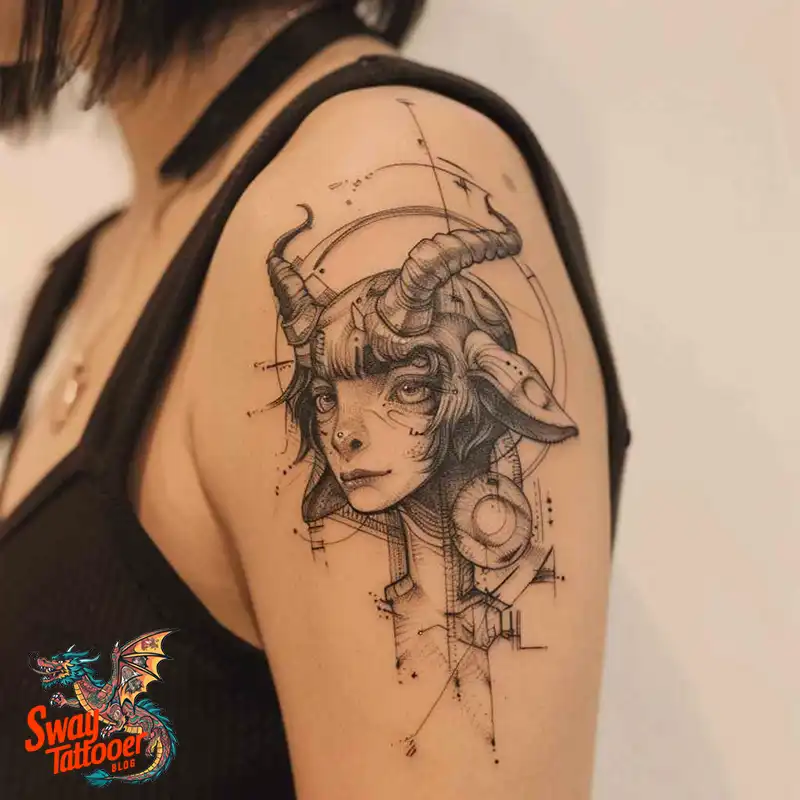
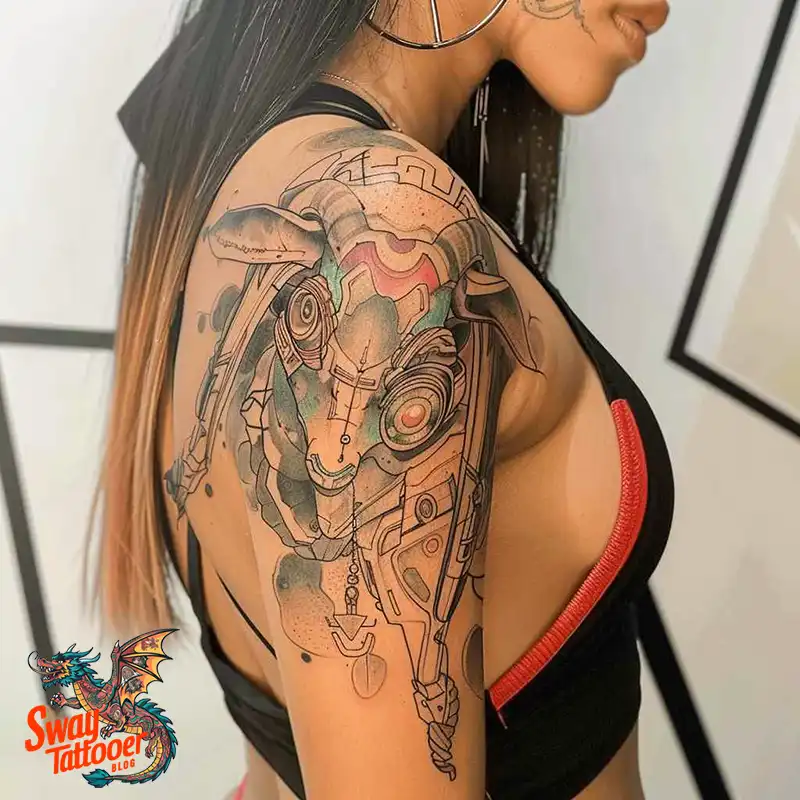
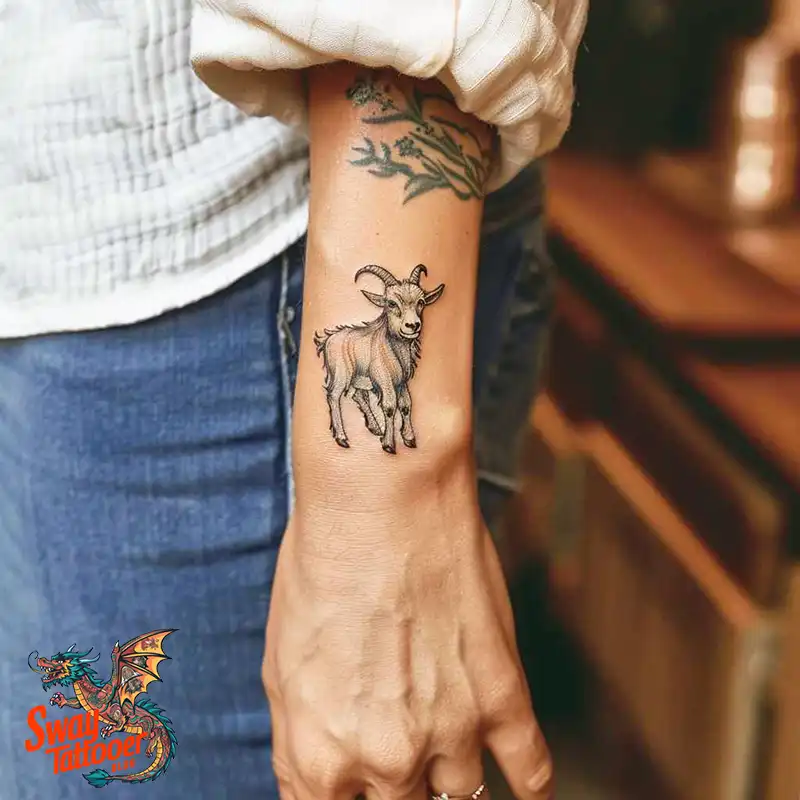
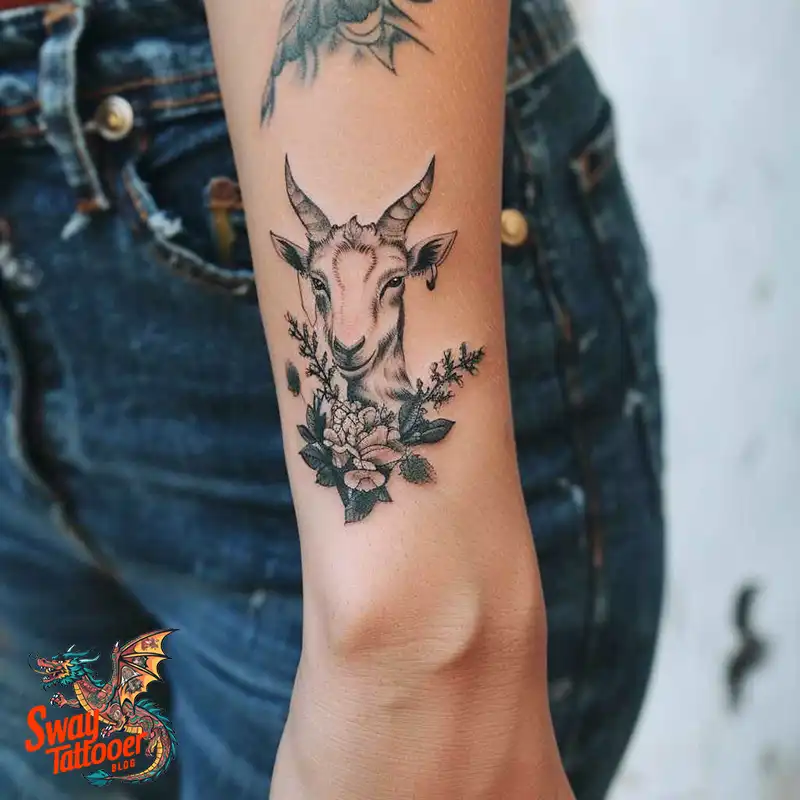
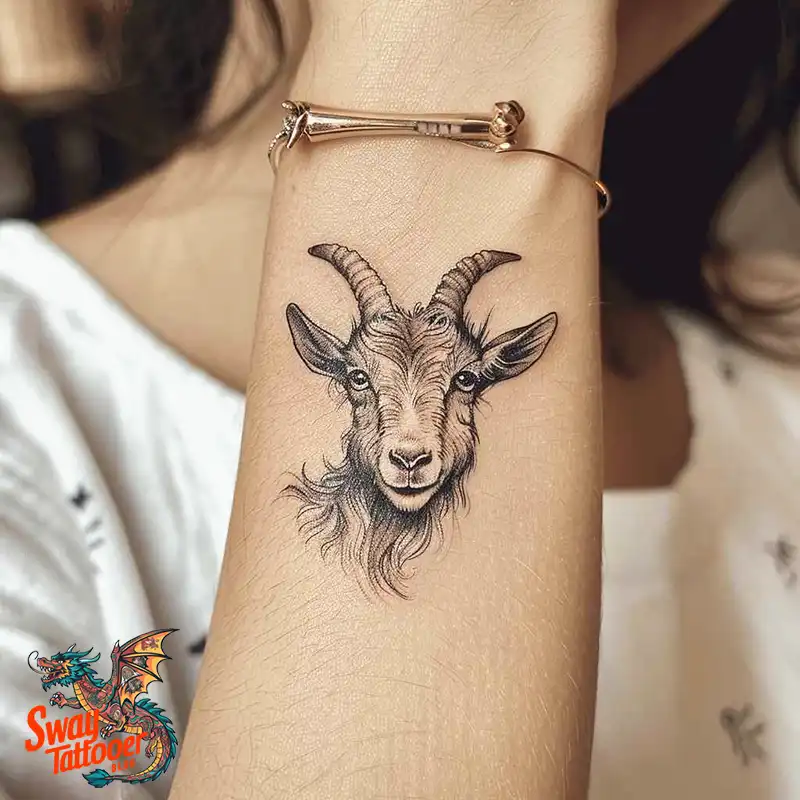
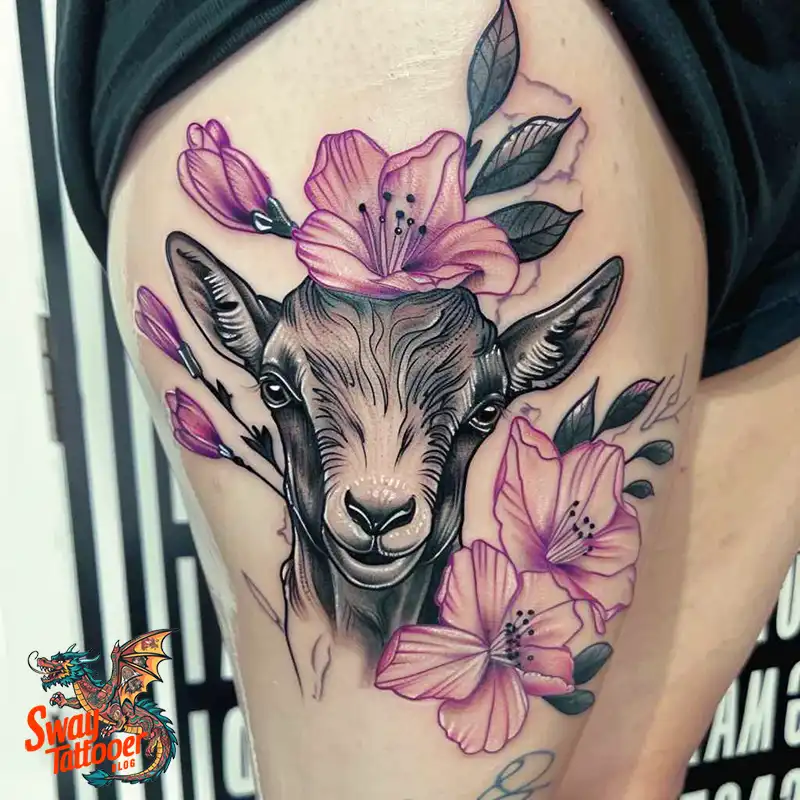
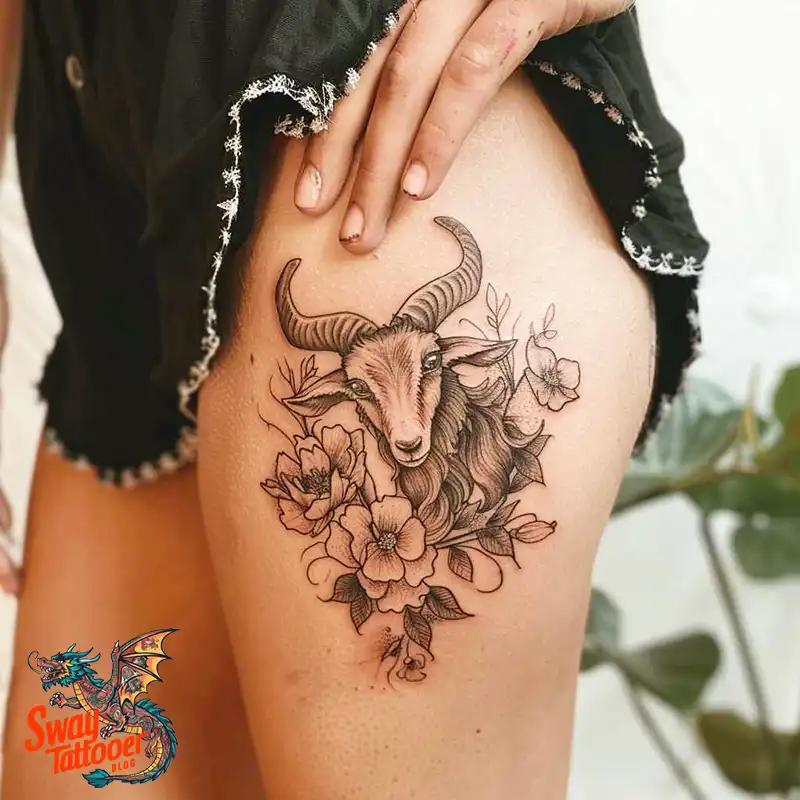
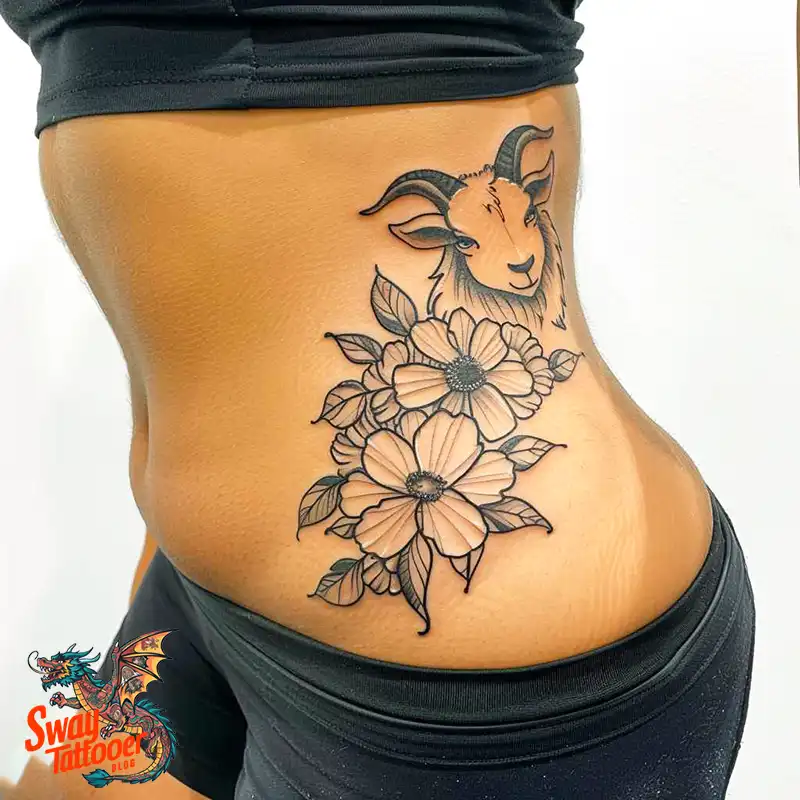
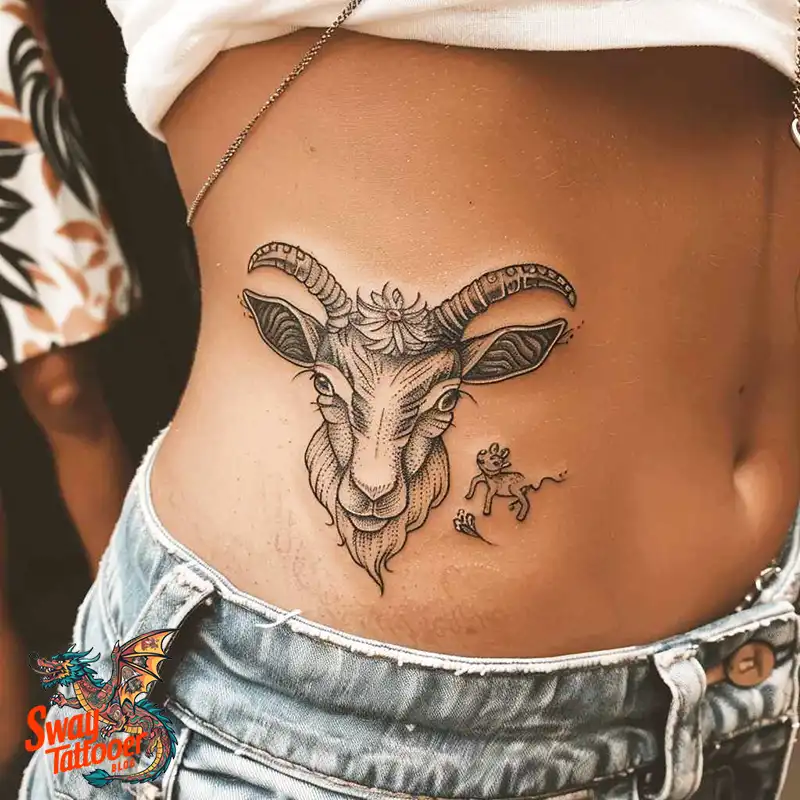
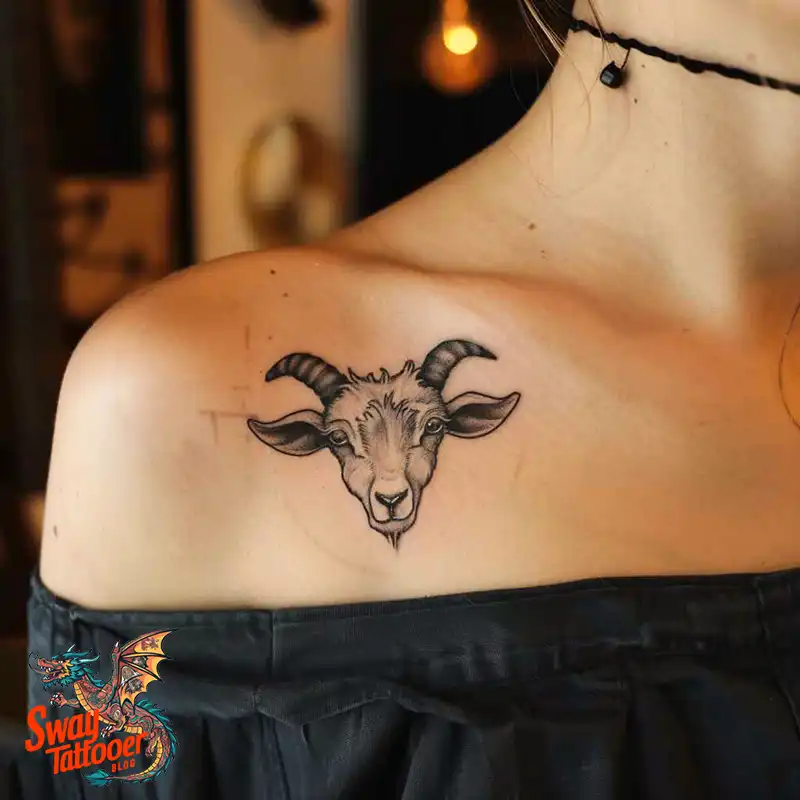
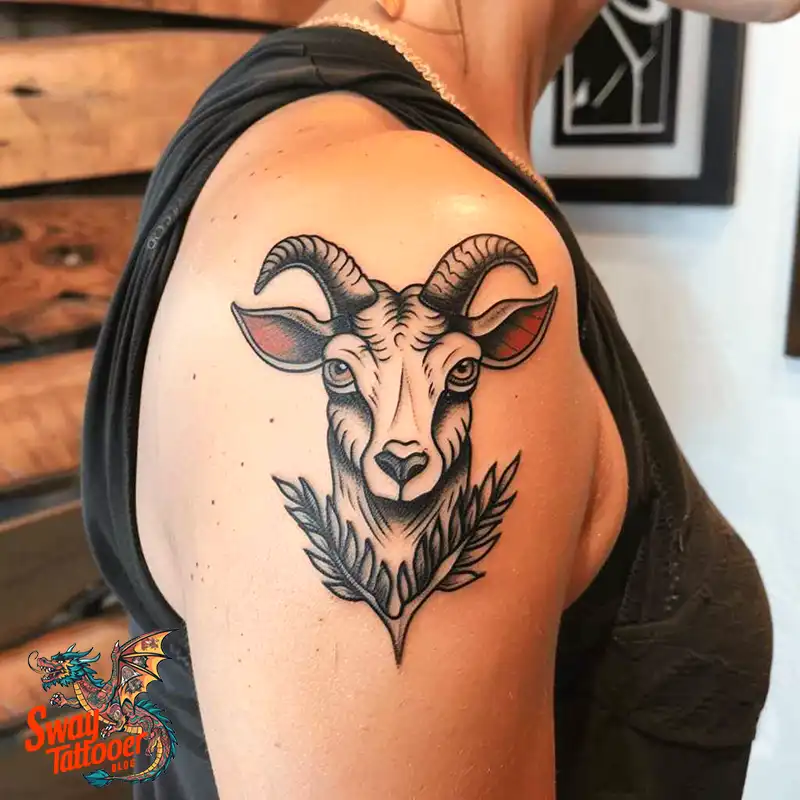

Various Types of Goat Tattoos
1. Traditional Goat Tattoos:
The traditional goat tattoo, in most cases, bold lines and bright colors, with the traditional tattoo images: roses, daggers, or banners. Such tattoos are expertly influenced by classic tattoo styles, dating from the early 20th century.
Relevance: The classicness of this style takes representation in history related to tattoos. This is a symbol of strength, binding tenacity, and a connection with something that is related to traditions. Goat, with its edacious form and high impeccable style, is a flawless subject for a timeless designing like this.
Best Body Part: Forearms, biceps, or calf. These areas provide ample space for detailing and are prominently visible.
2. Abstract Goat Tattoos:
In this form of tattoo design, geometrical patterns and shapes have been used in order to be abstract with a goat. The application can get done with modern designing and bind with a natural form for the animal.
** Why it is Relevant: ** Geometrical tattoos are usually created by people who are having a taste for minimalism and symmetry in their work. The goat represents balance and harmony in nature, so it goes well with this style.
Best Body Part: Upper arm, chest, or back — these larger areas allow for intricate geometric details and ensure the tattoo’s symmetry is maintained.
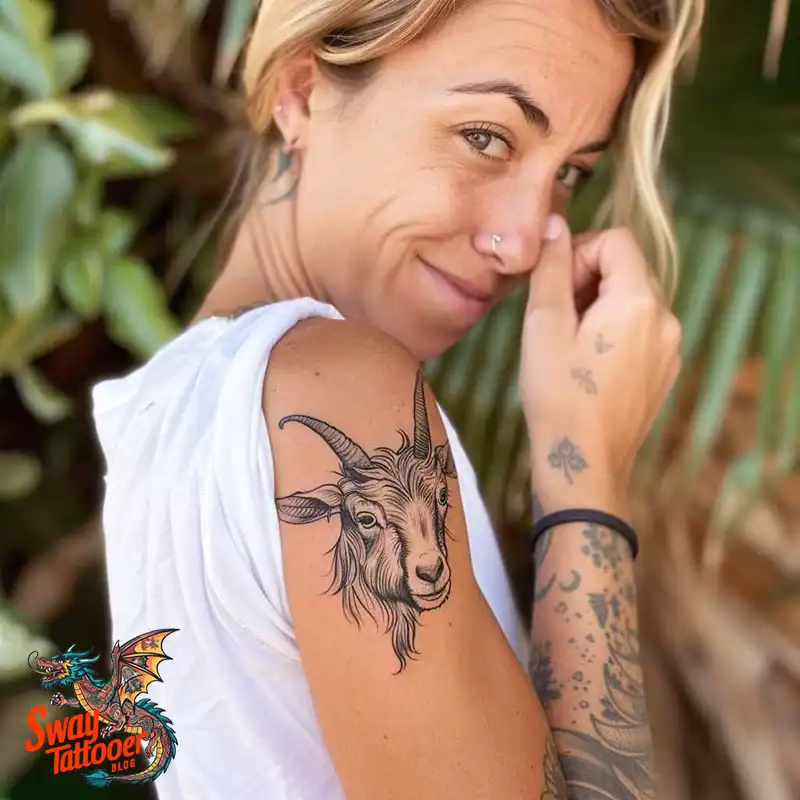
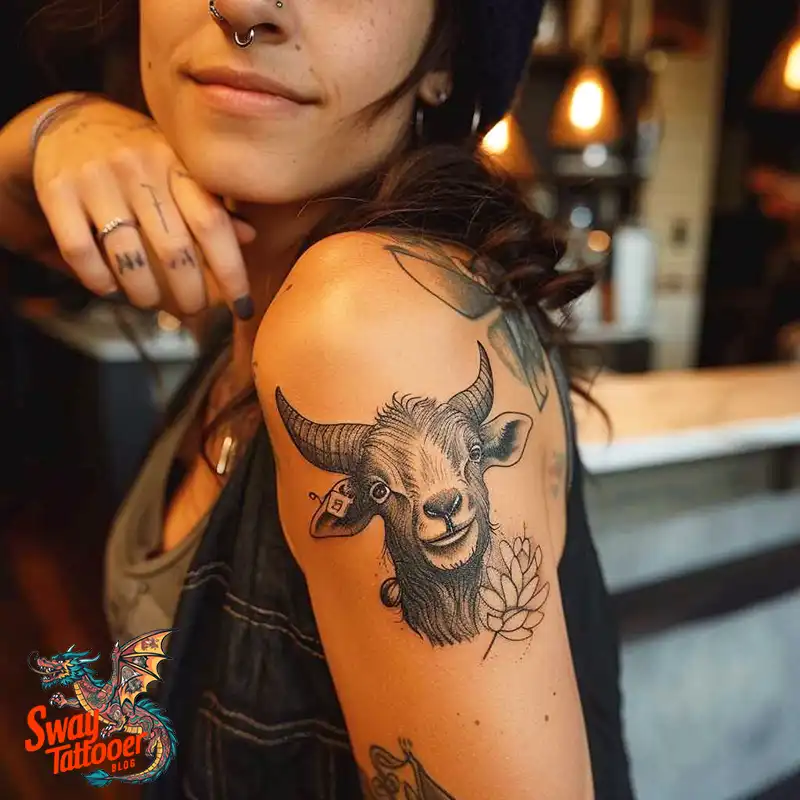


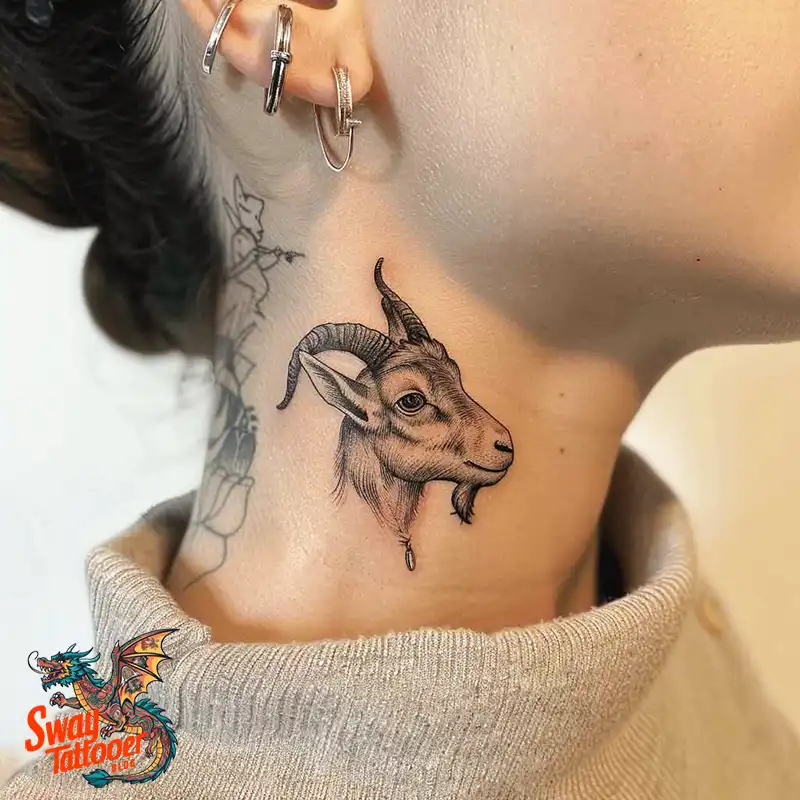
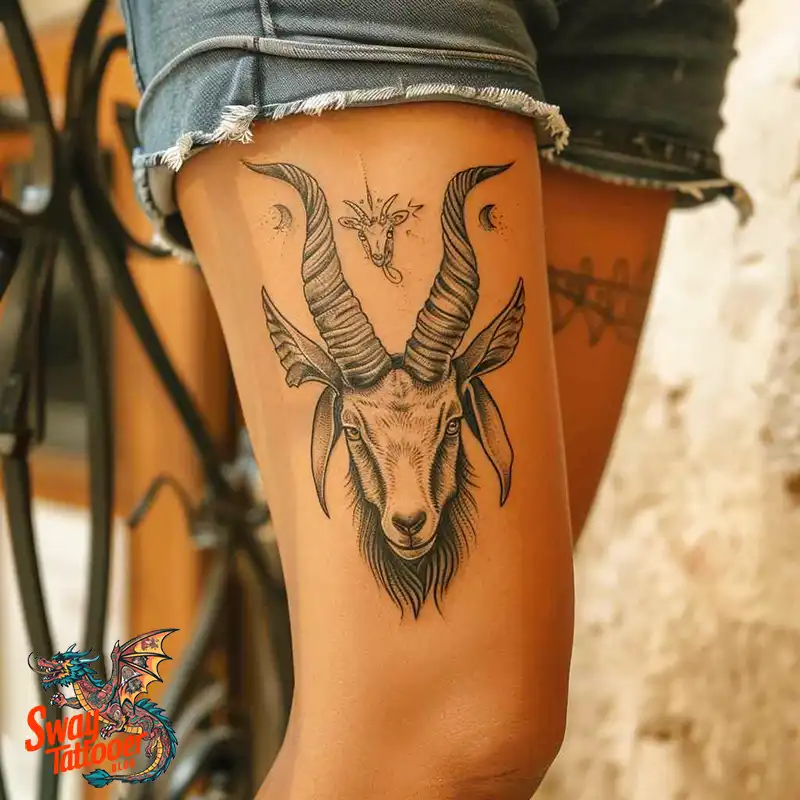
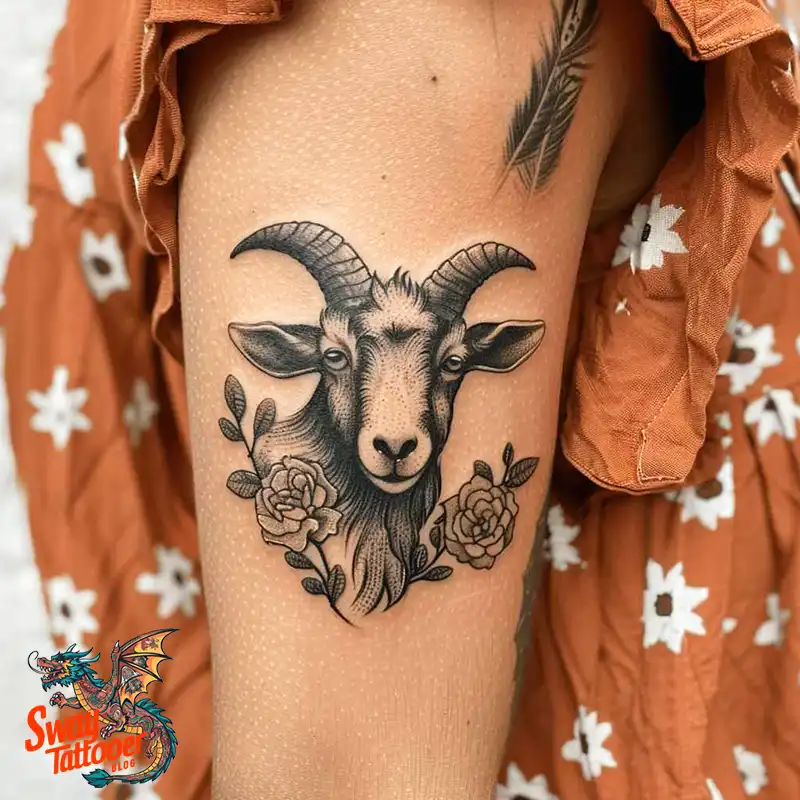
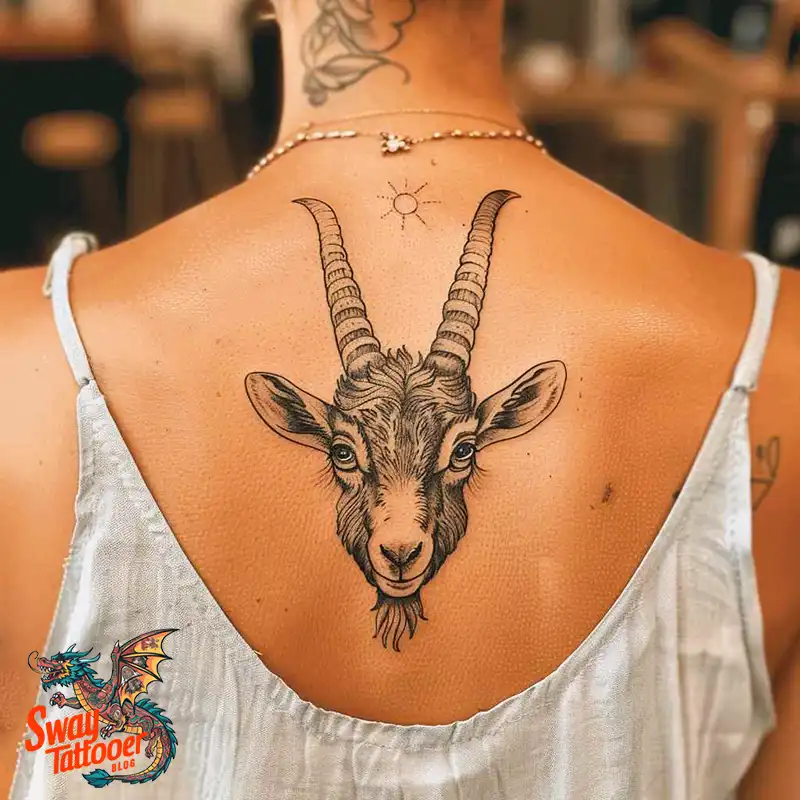
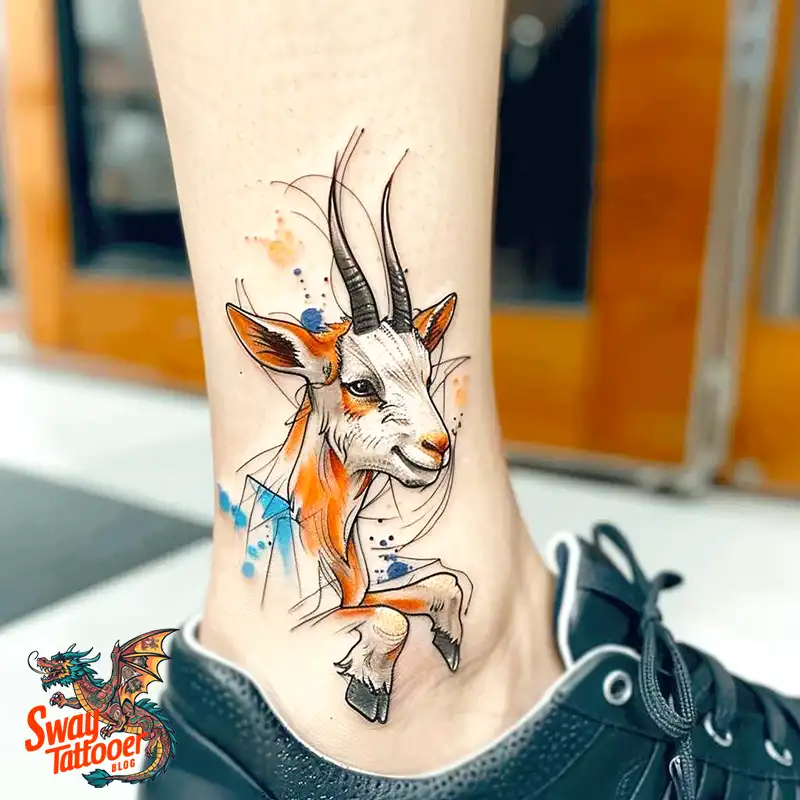
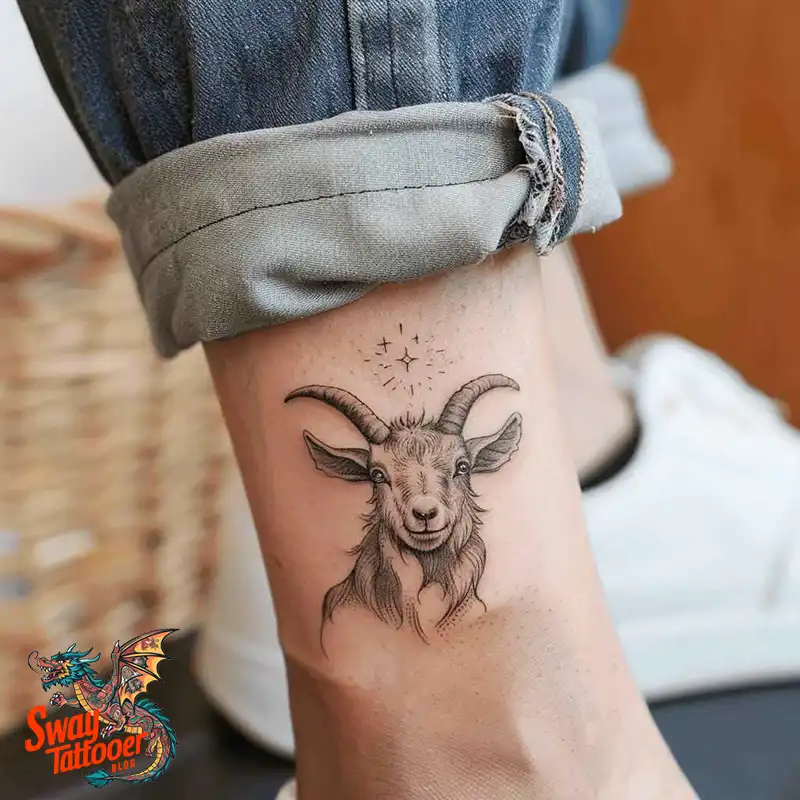
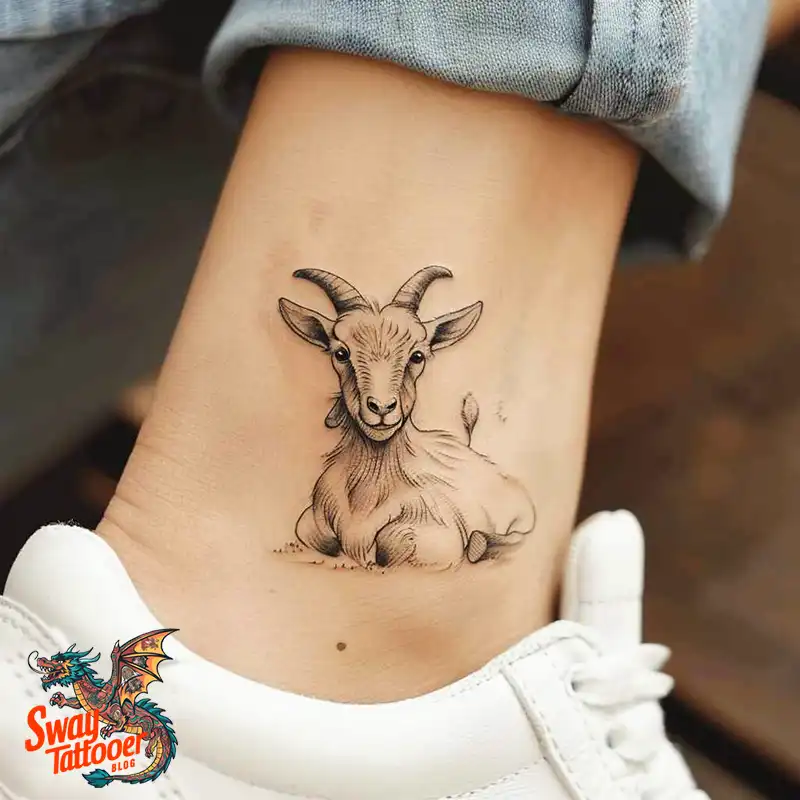
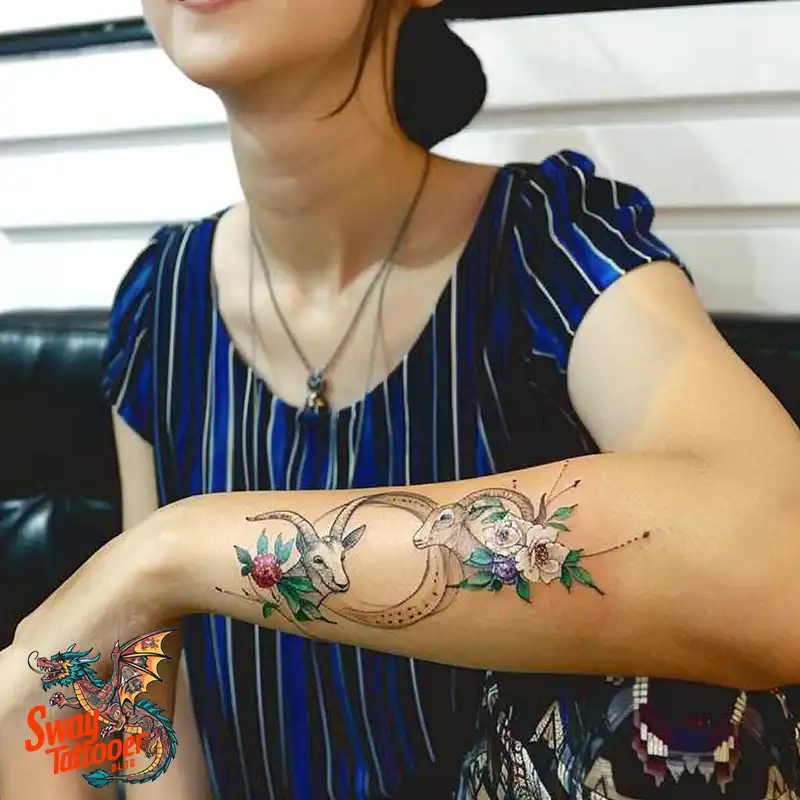
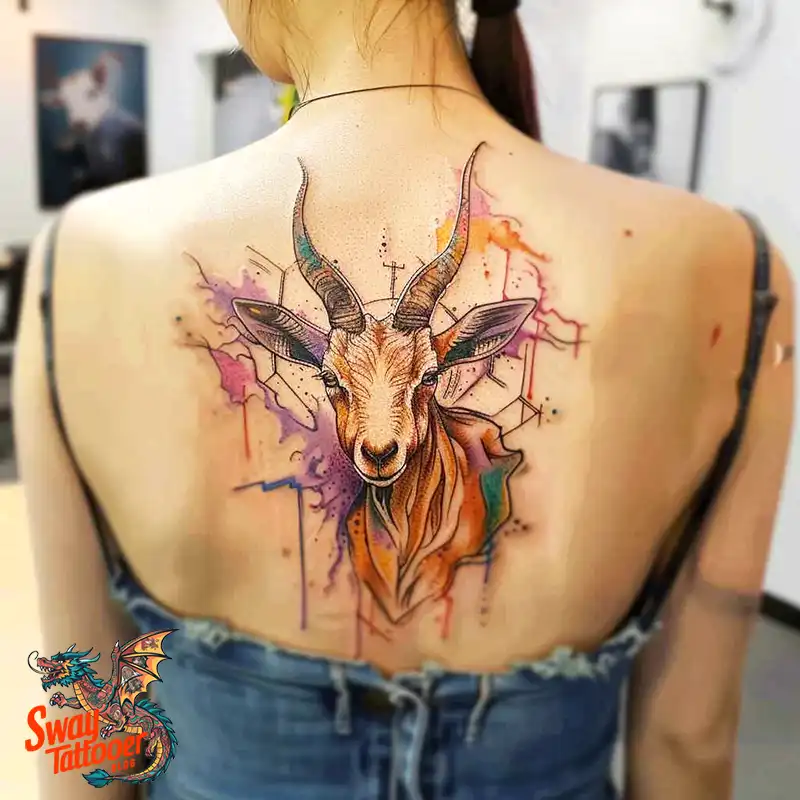
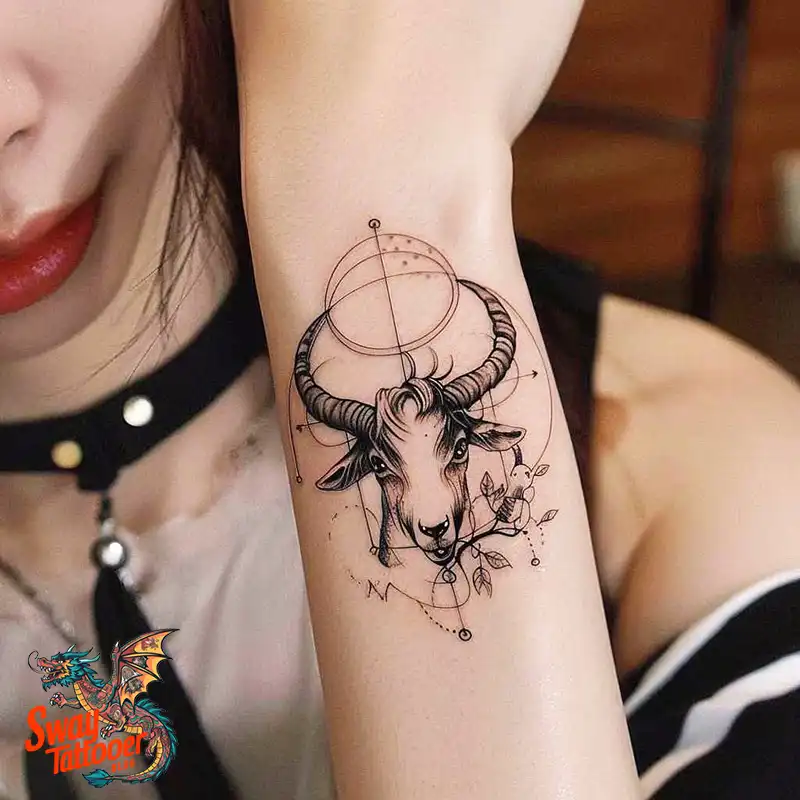
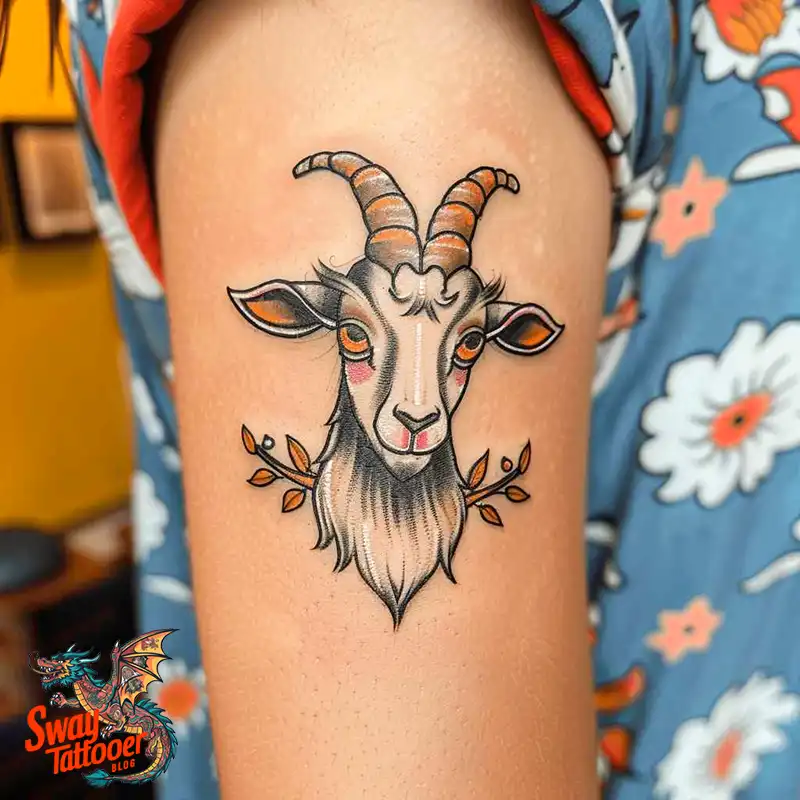
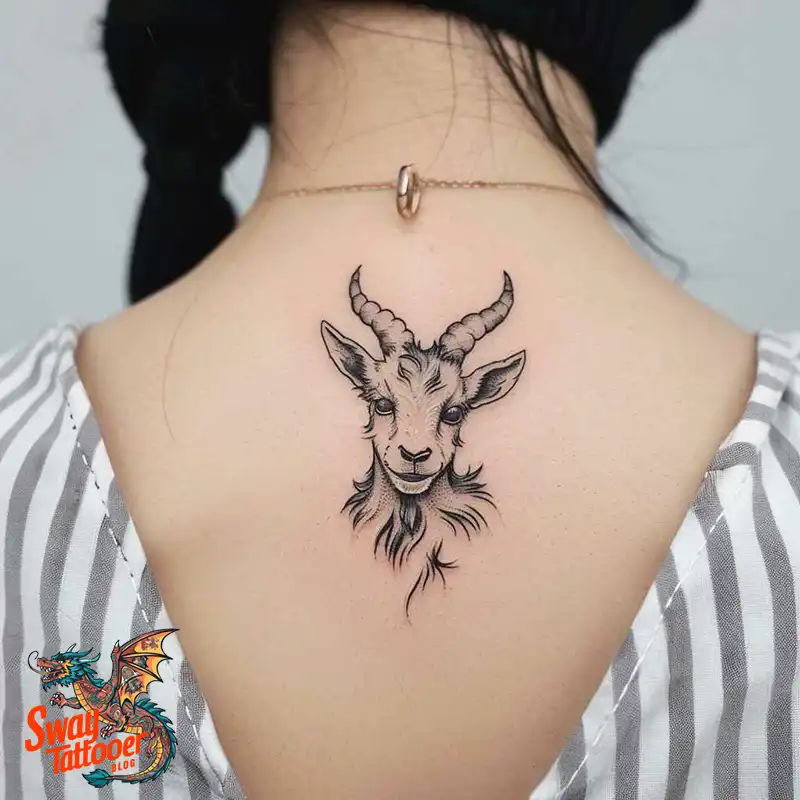
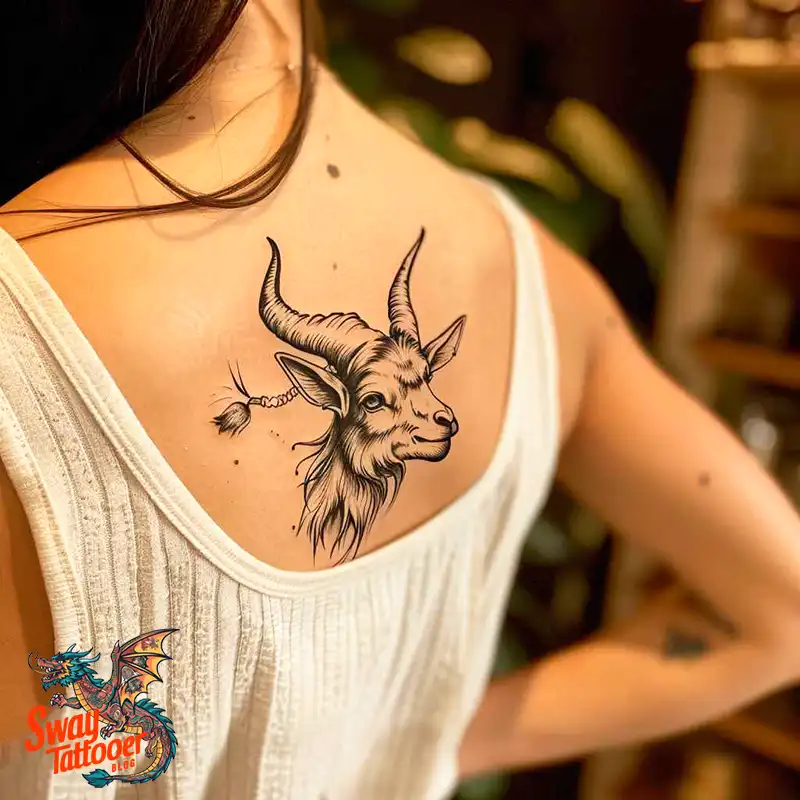
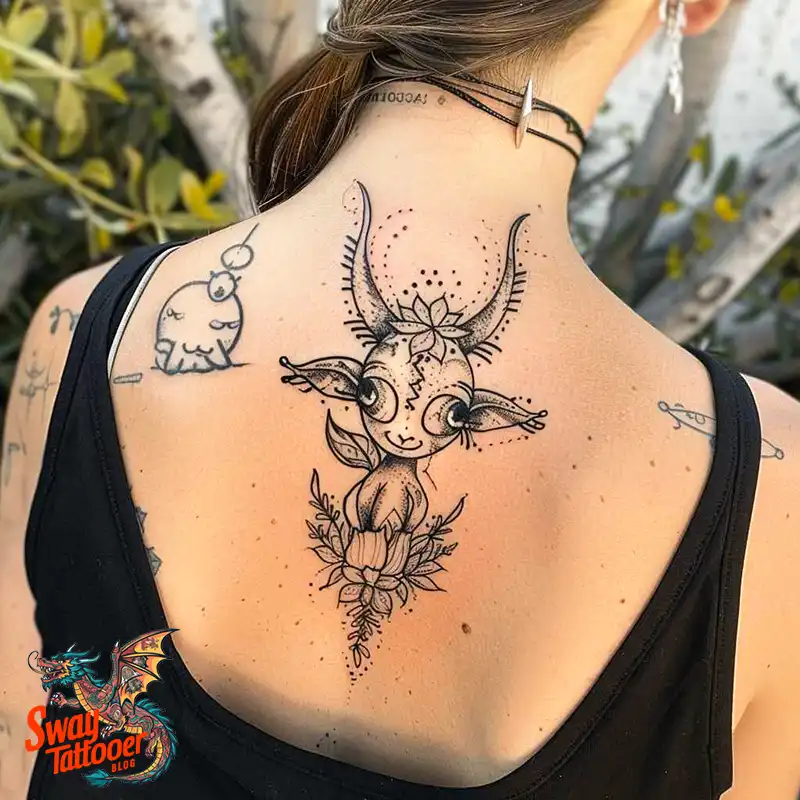
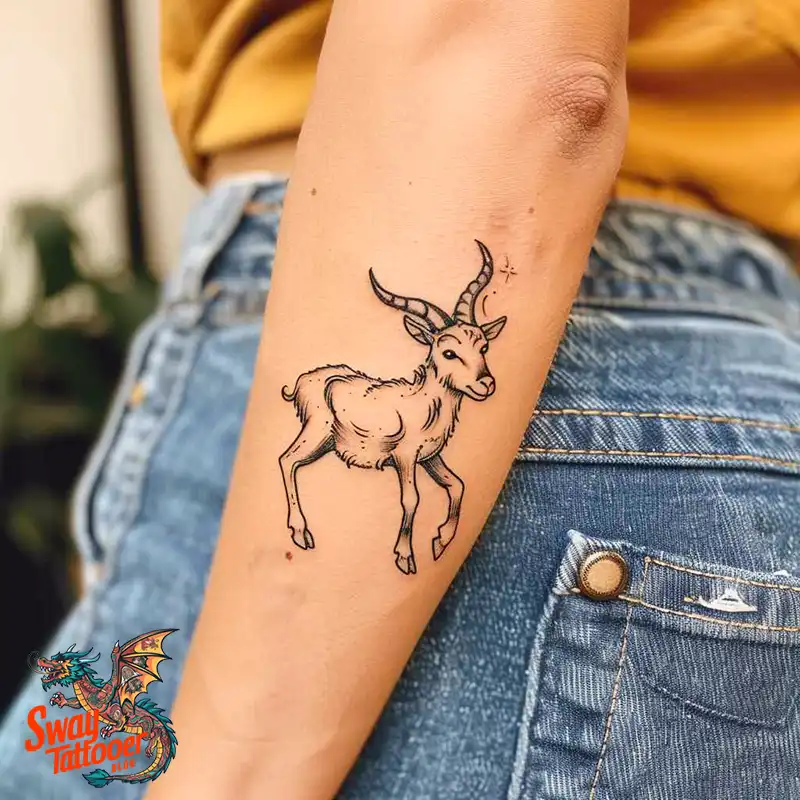
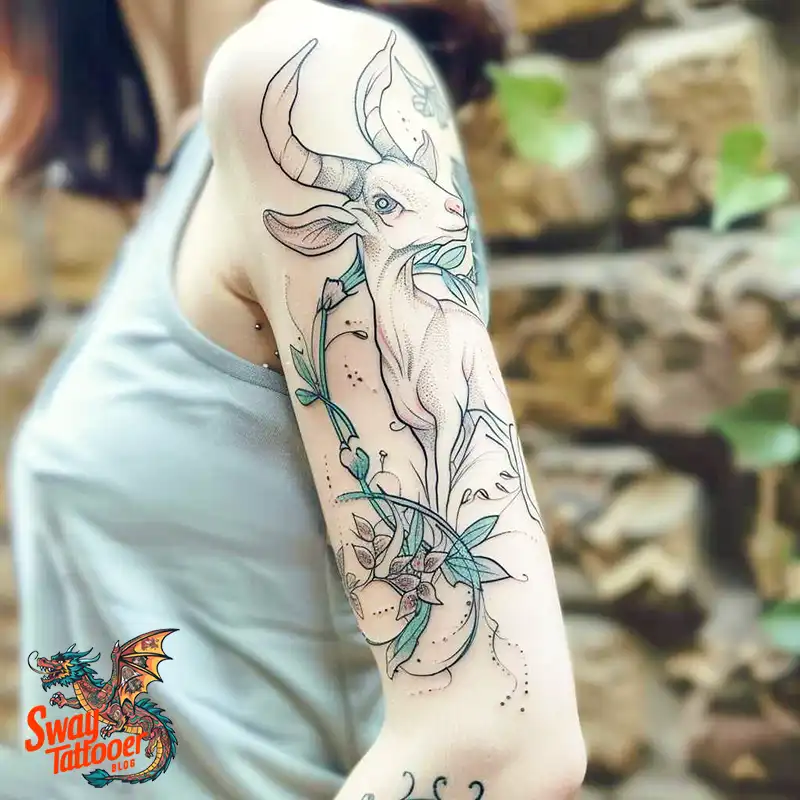
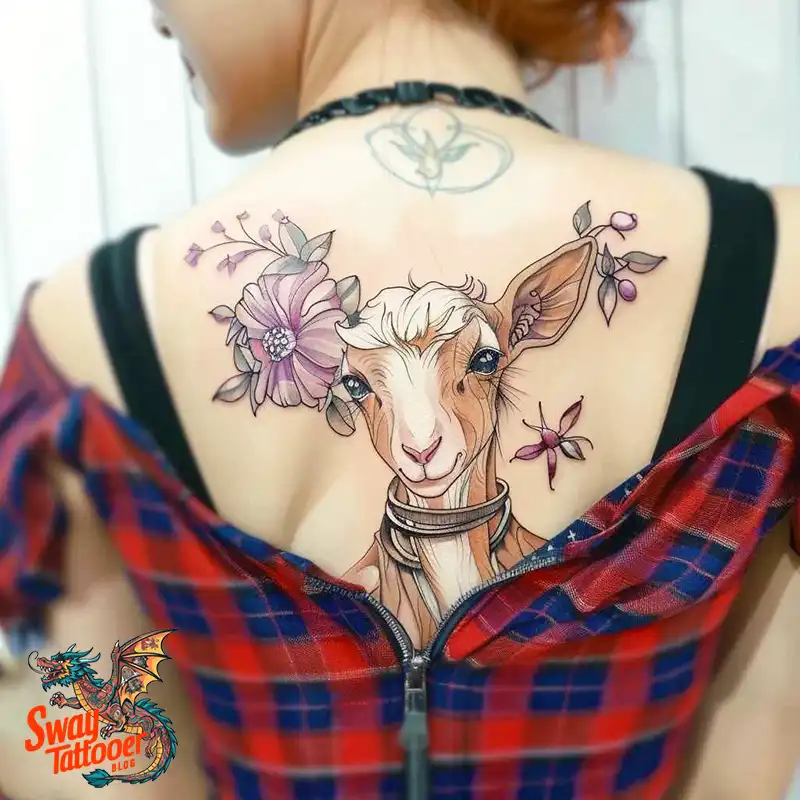
3. Realistic Goat Tattoos
Summary: Realistic goat tattoos attempt to portray the animal in its most natural look, often down to the finest details, like the texture of the fur or even the expression on the face. Such tattoos are usually done in black and grey ink but may also be vivid.
Relevance: Mythological symbols always have a hidden story to tell. If you are into mythological sagas and epic legends, then this can be the perfect design template to show off your admiration for goats and their lore.
Best Body Part: Shoulder, thigh, or back — these spots provide a larger canvas for intricate detail and shading, which works best for realistic tattoos.
4. Mythologized Goat Tattoos
Examples of these are the goats intertwined with mythological content, such as the Greek god of the wild, Pan, or the Norse god Thor’s goats, Tanngnjóstr and Tanngrisnir. Most often, such designs feature a few other mythological symbols/figures.
Mythological goat tattoos have a deep undertone of a certain connection to the roots in ancient stories and folklore. They symbolize wisdom, strength, and the unknown. This style of tattoos captures the interest of someone passionate about mythology and its symbolism.
Body Parts in Detail: Would work best on a full sleeve, half sleeve, or chest; this tattoo is quite complex and can really only be done justice with space to include both that detail and storytelling. Summary Minimalist goat tattoos contain very few lines and minimal shading, which results in a clean and neat portrayal of a goat. These tattoos are focused on capturing the essence of the animal without too much detail.
This style is best for the subtle and classic-loving individual. It emphasizes the meaning of the goat without much ado.
Best Body Part: Wrist, ankle, or behind the ear—these smaller areas will accommodate the subtle nature of the minimalist design perfectly. Ideal spots for a discreet tattoo placement.

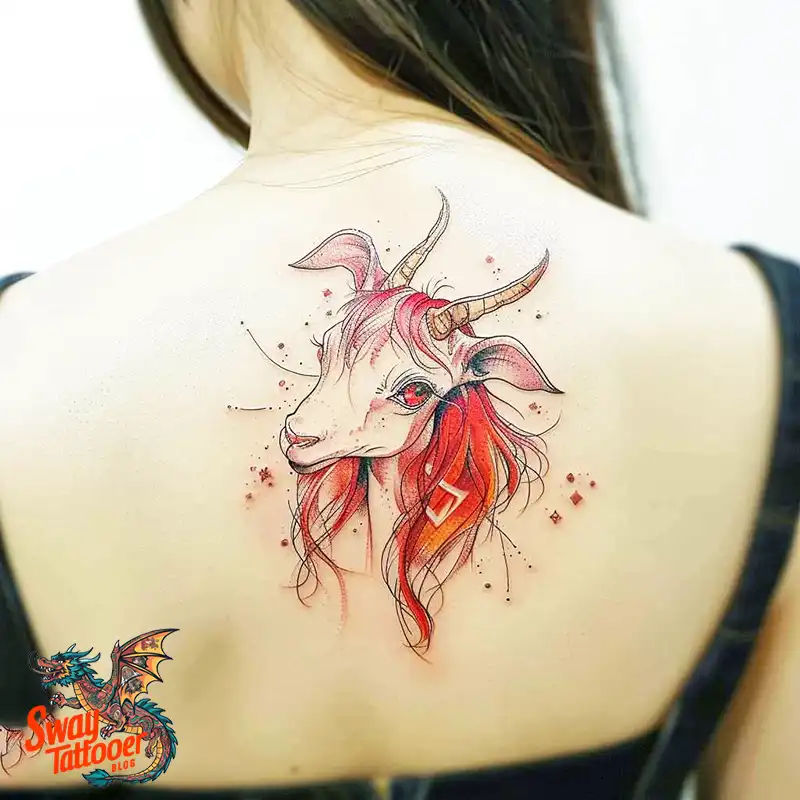
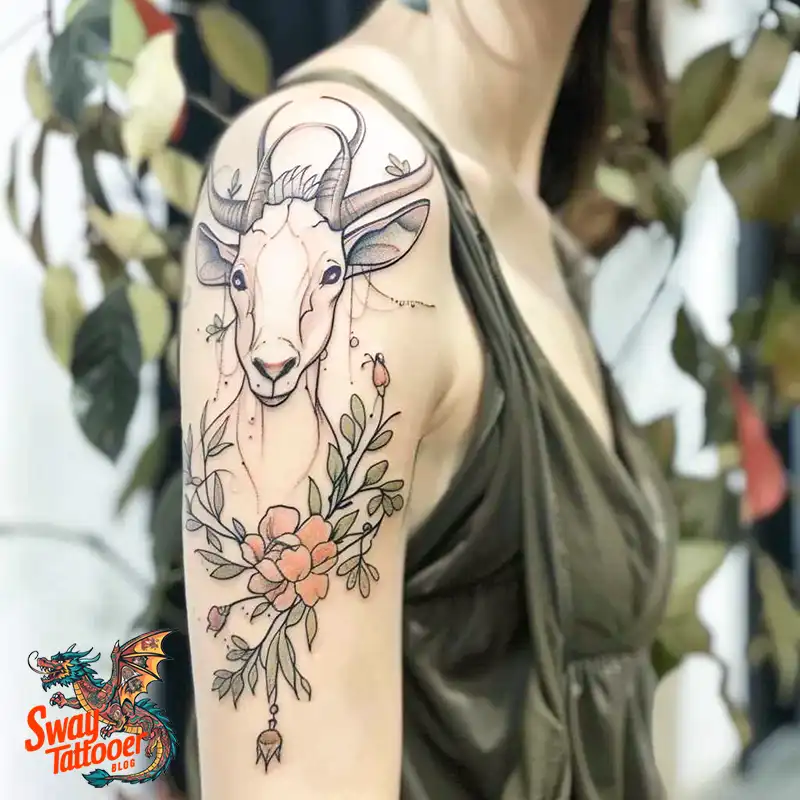
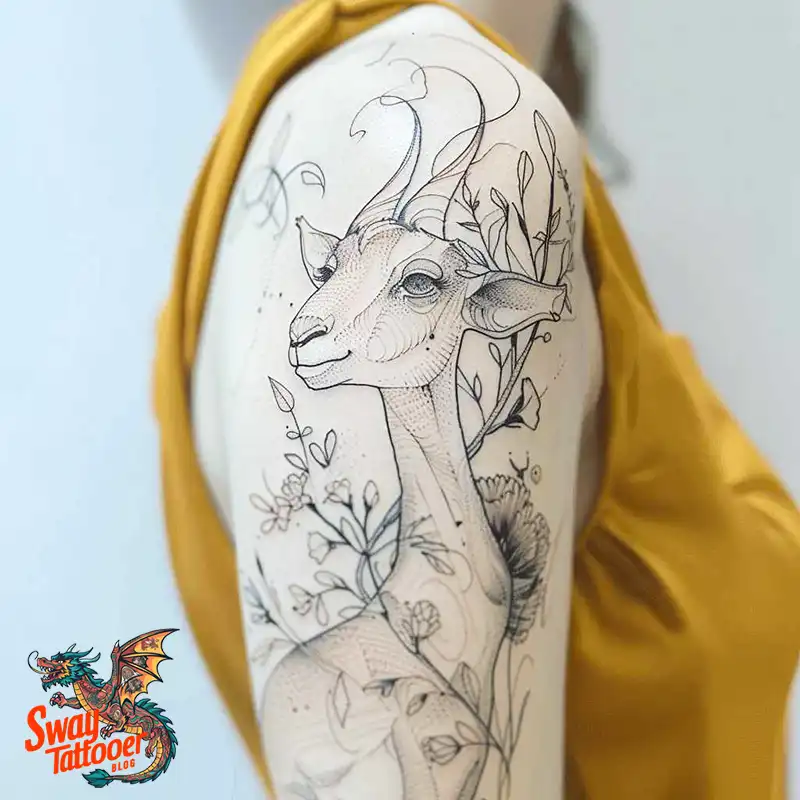
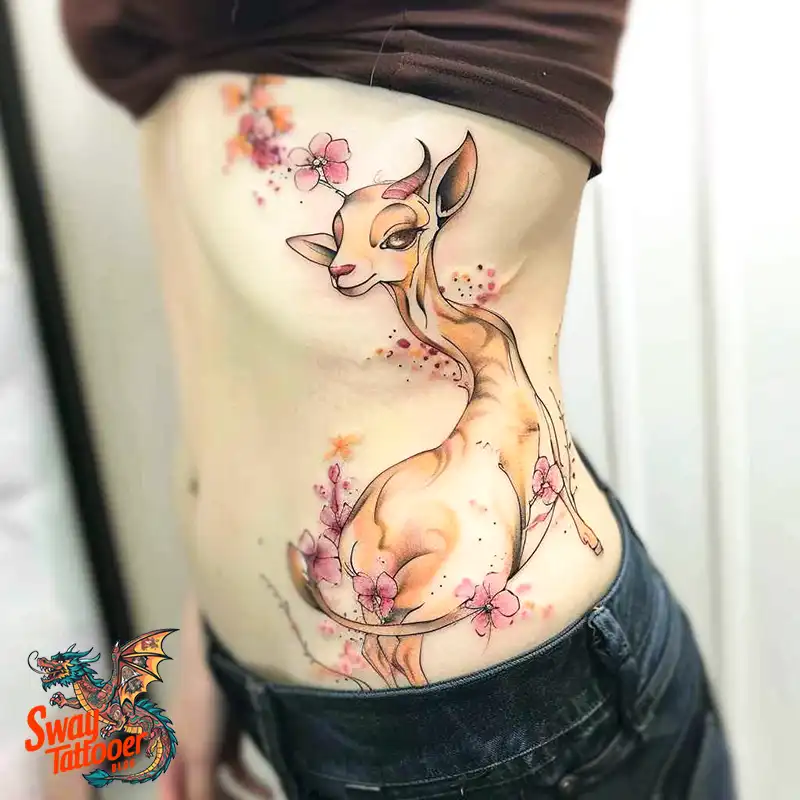
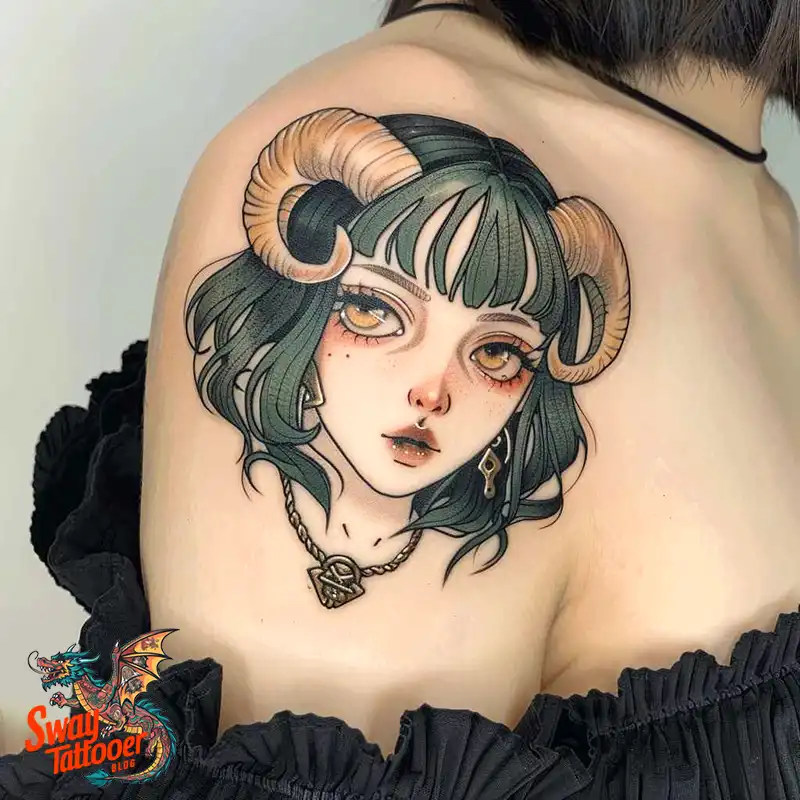

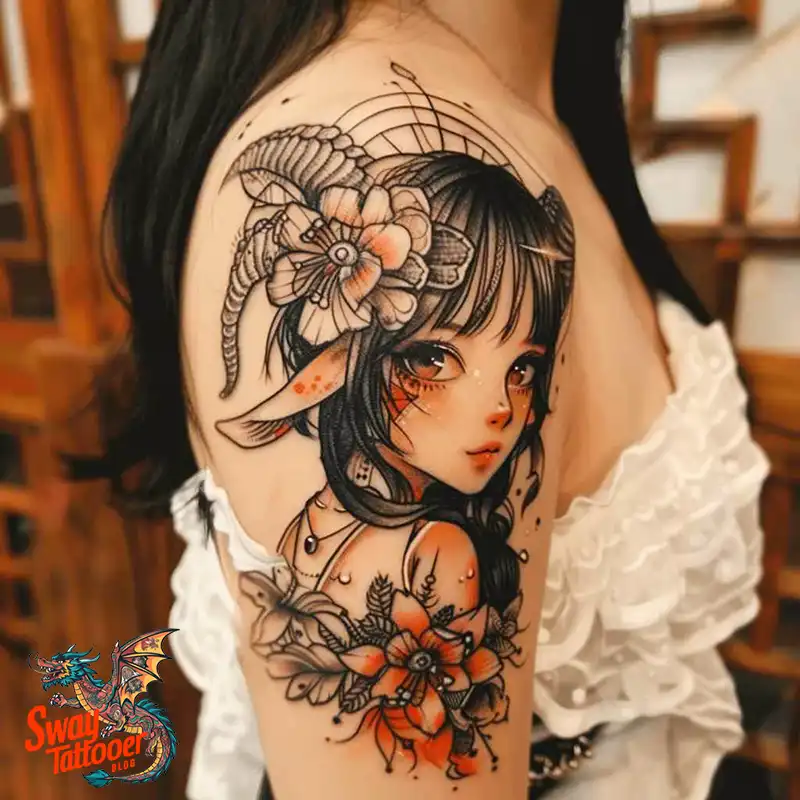
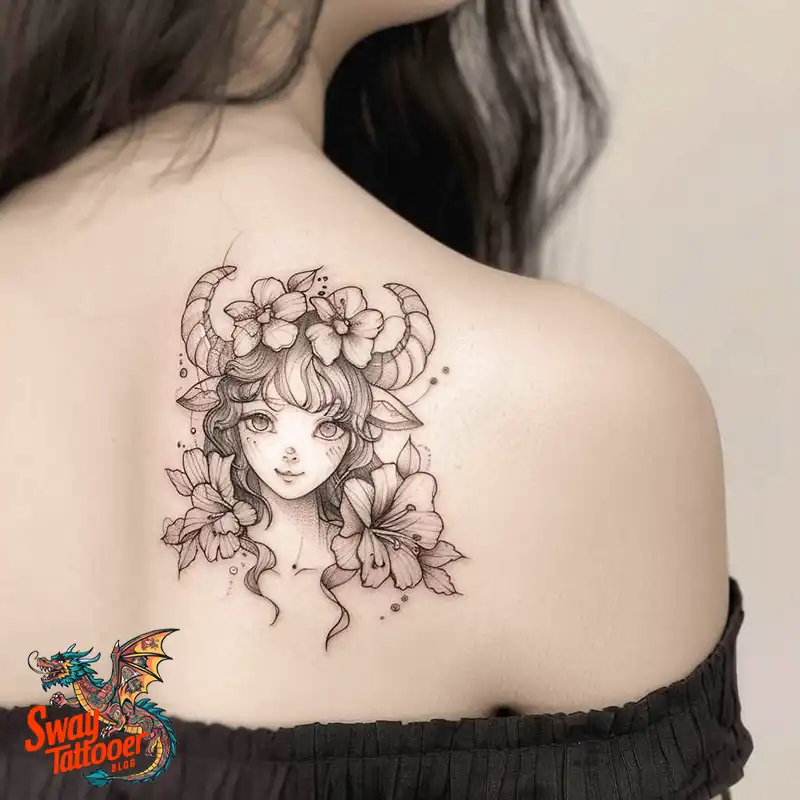
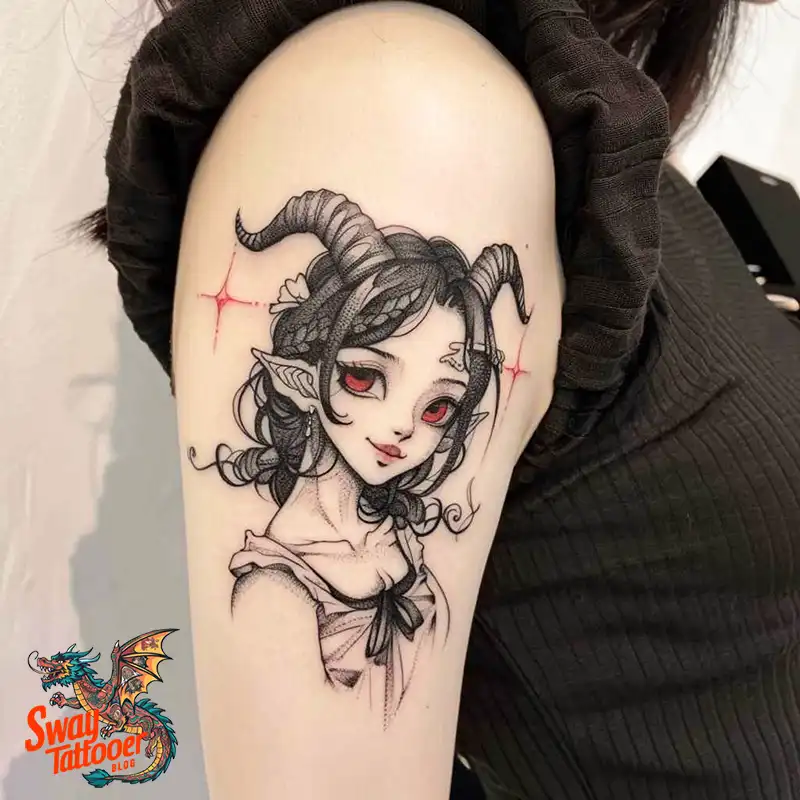
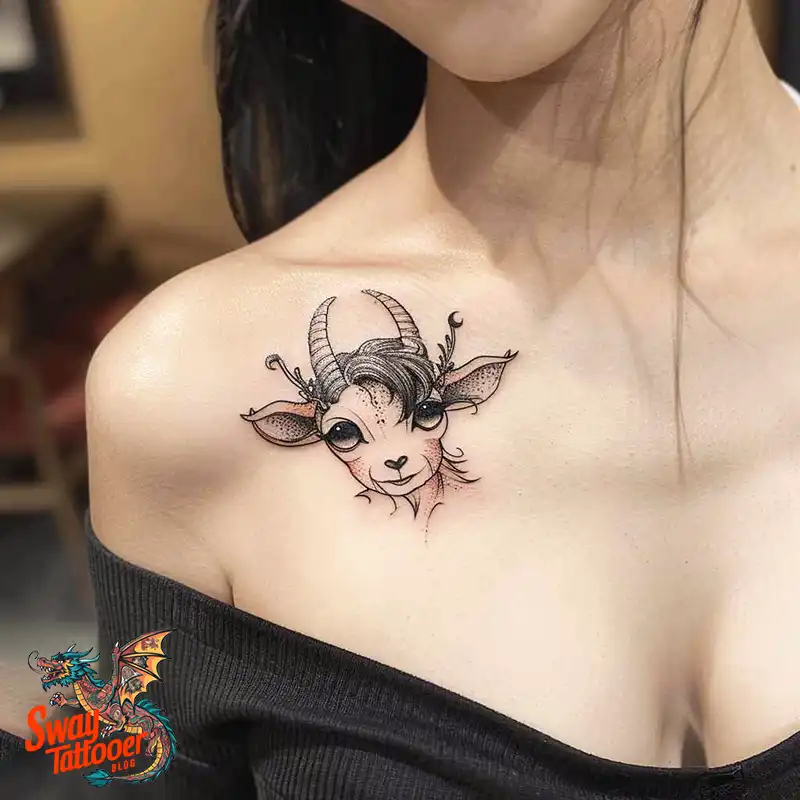
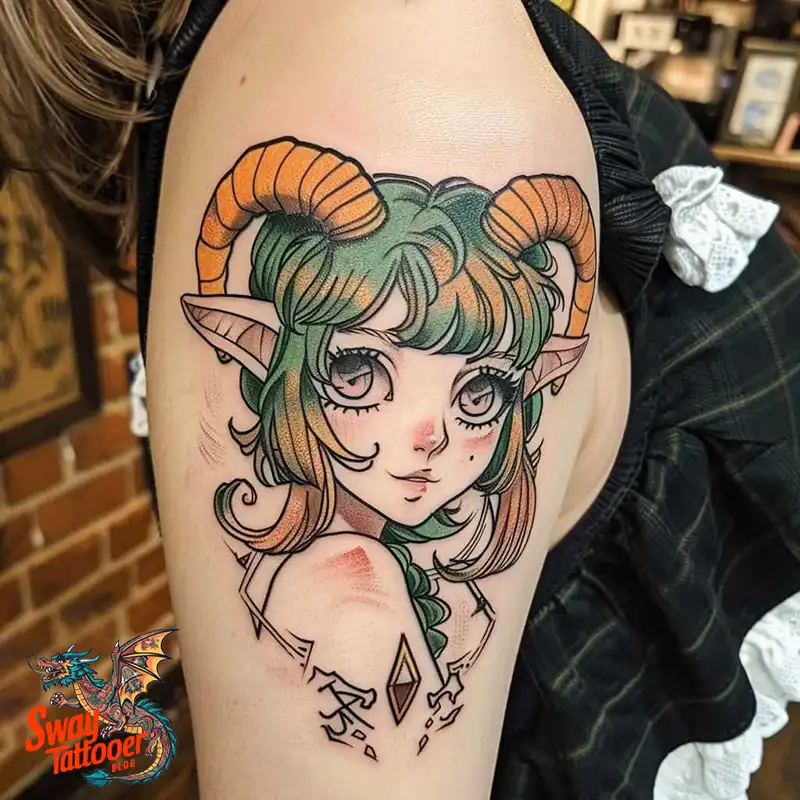
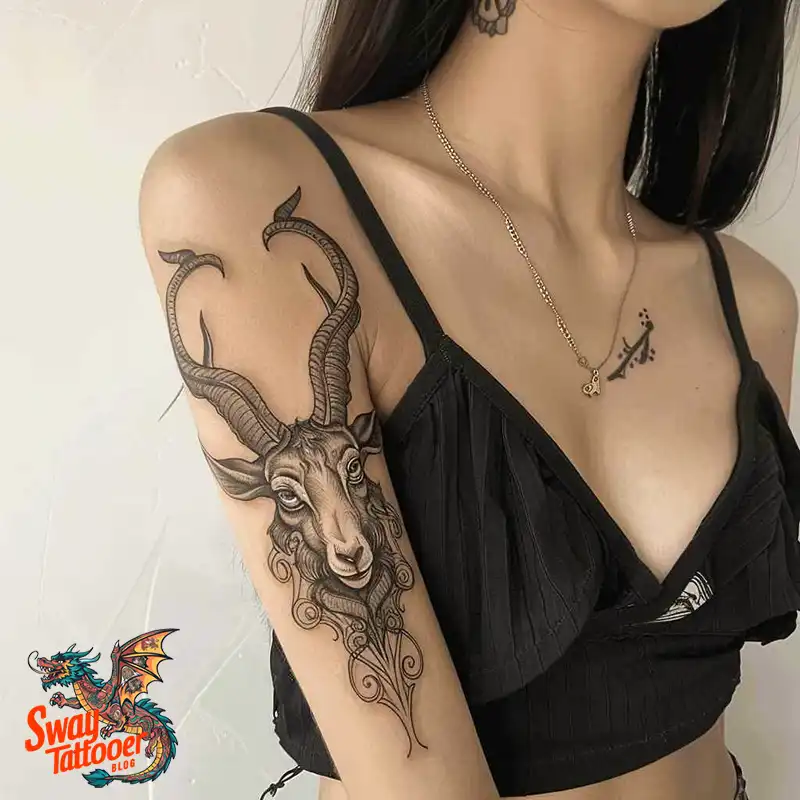
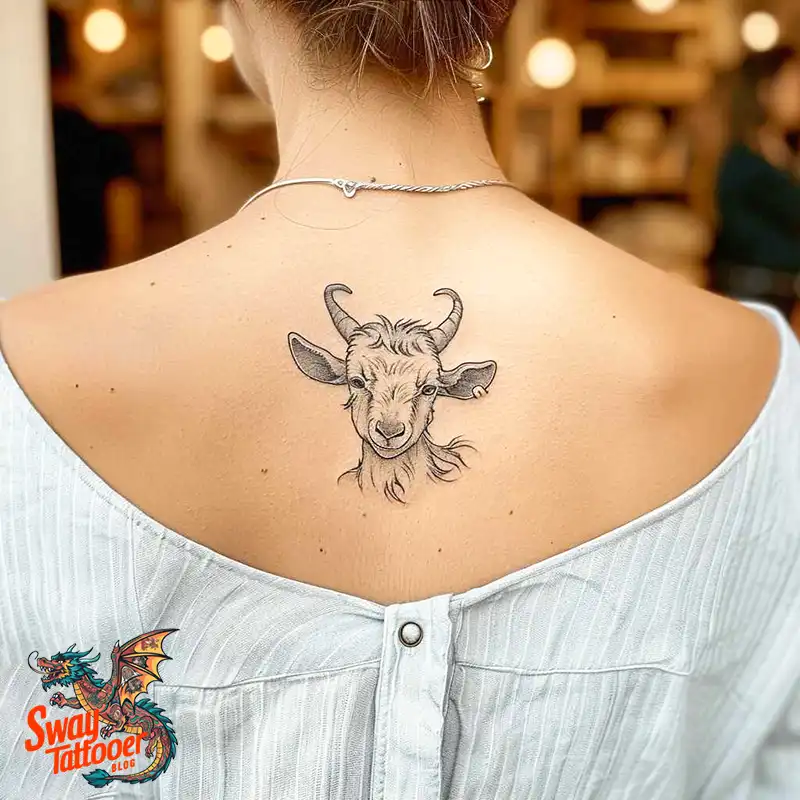
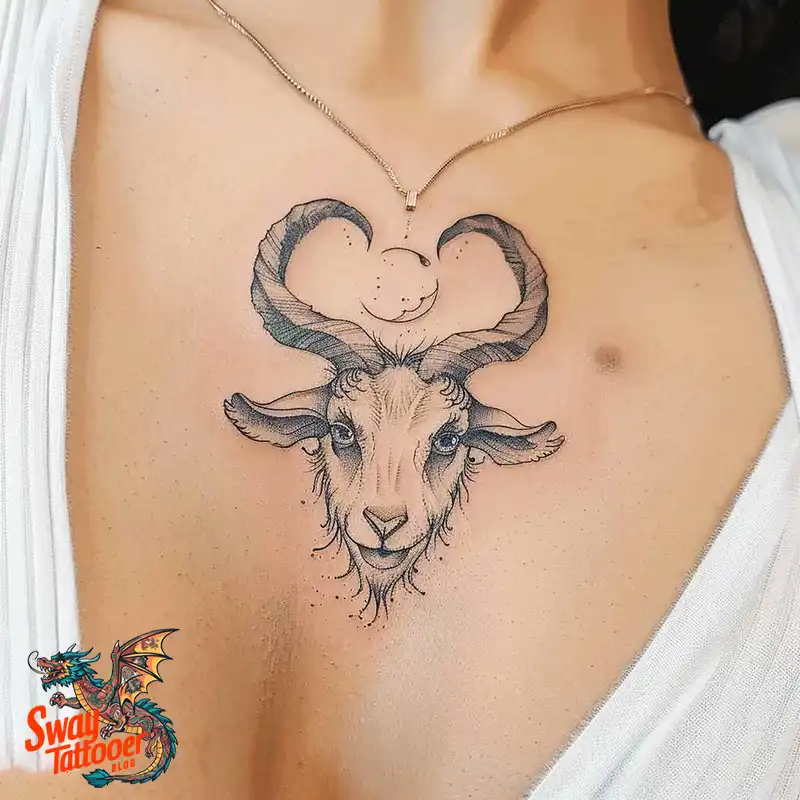
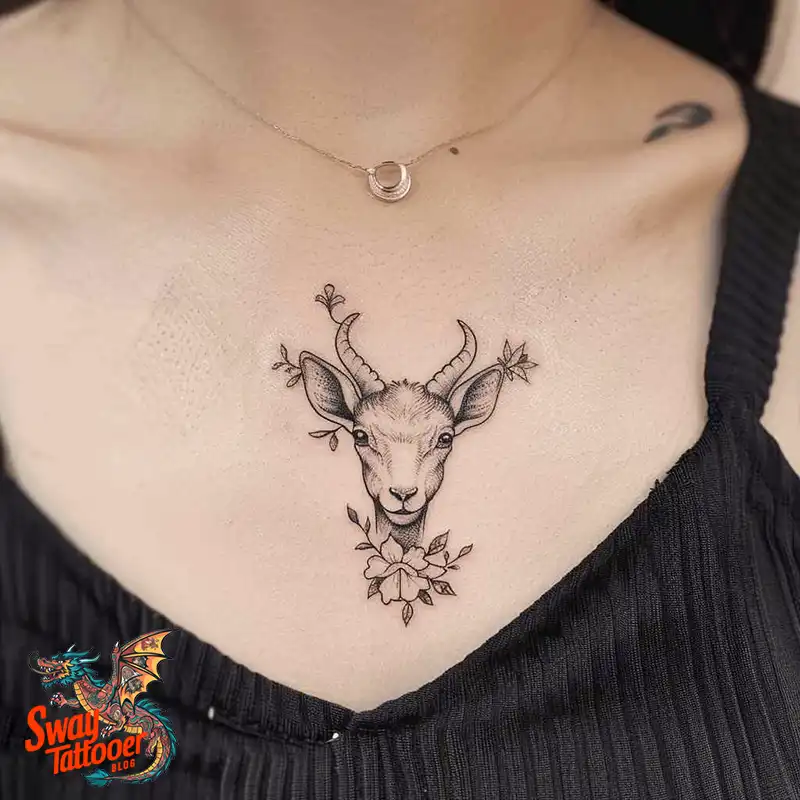
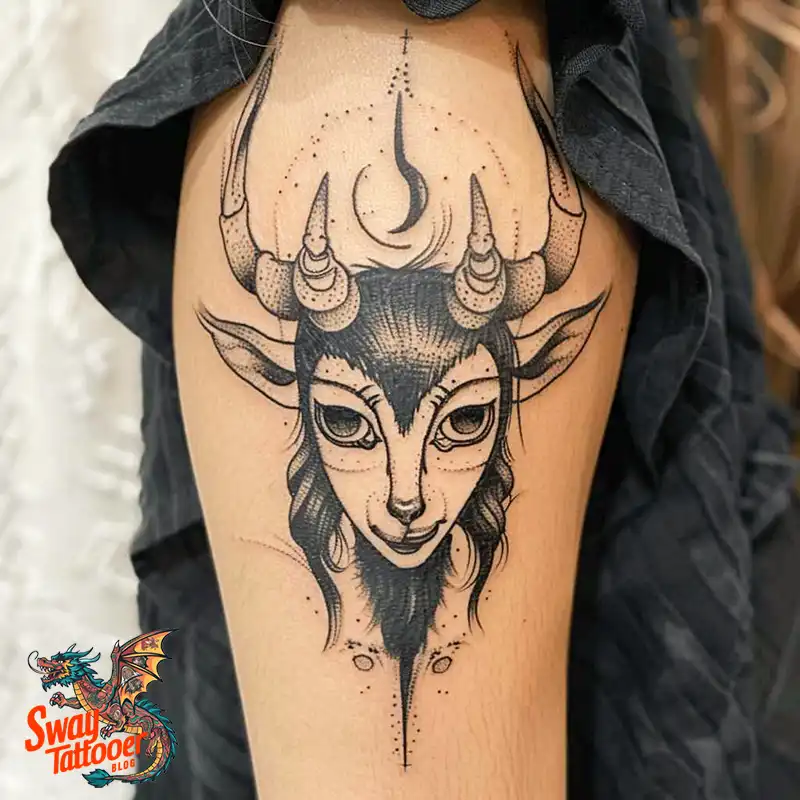
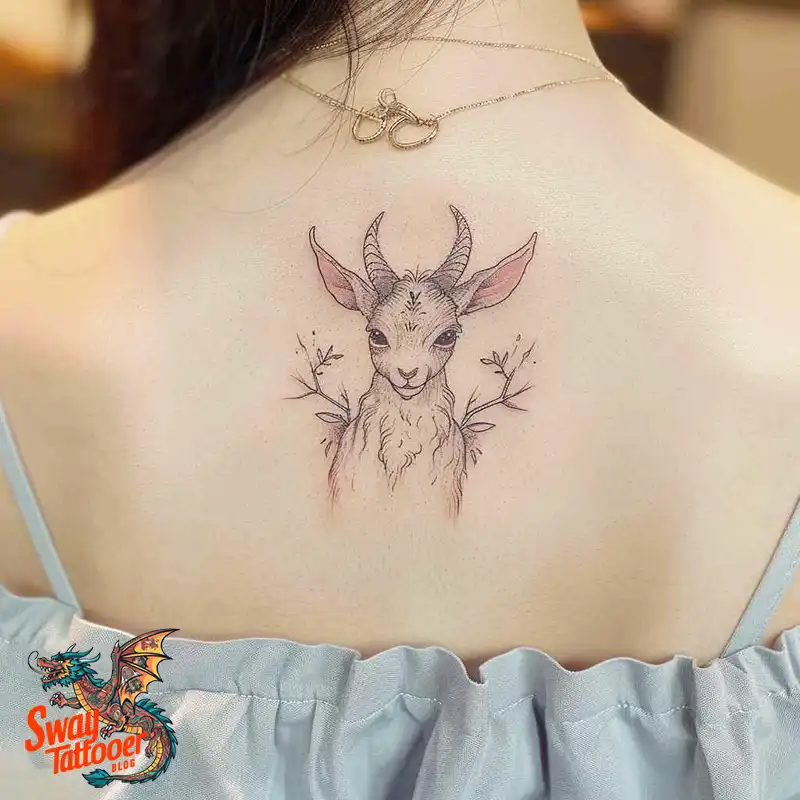
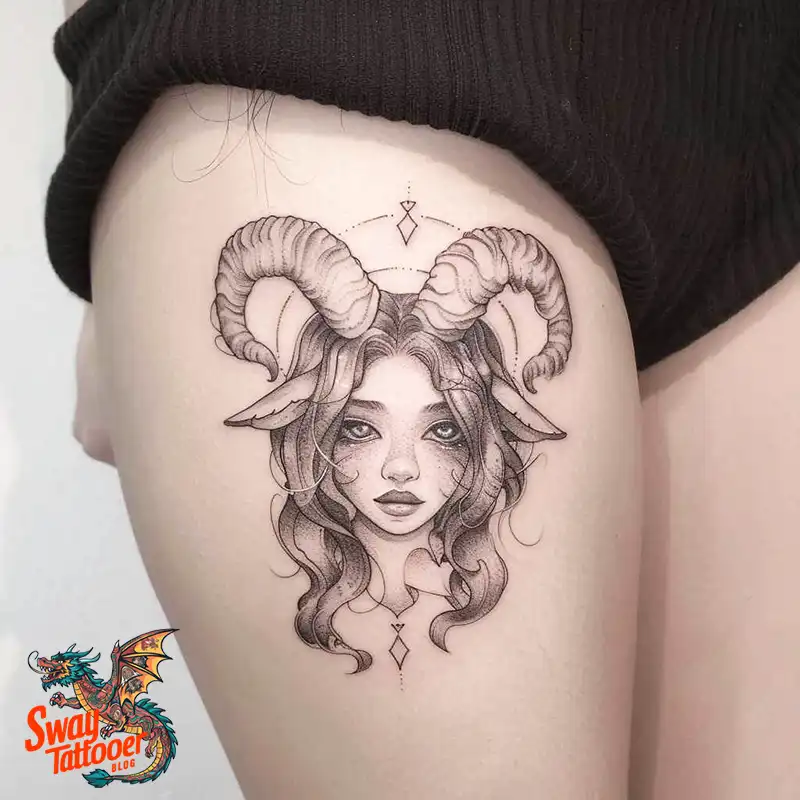
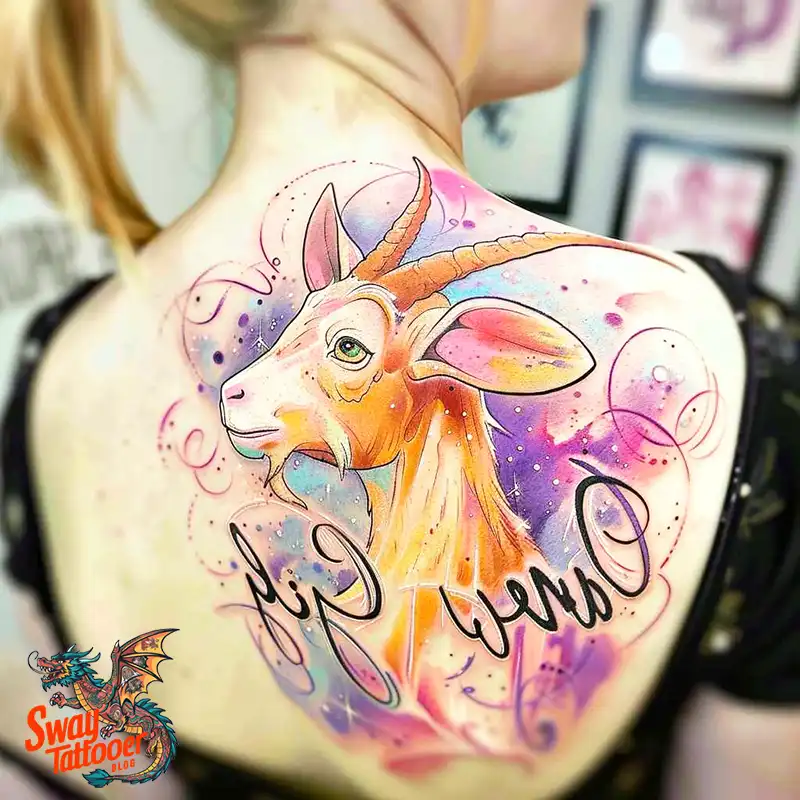
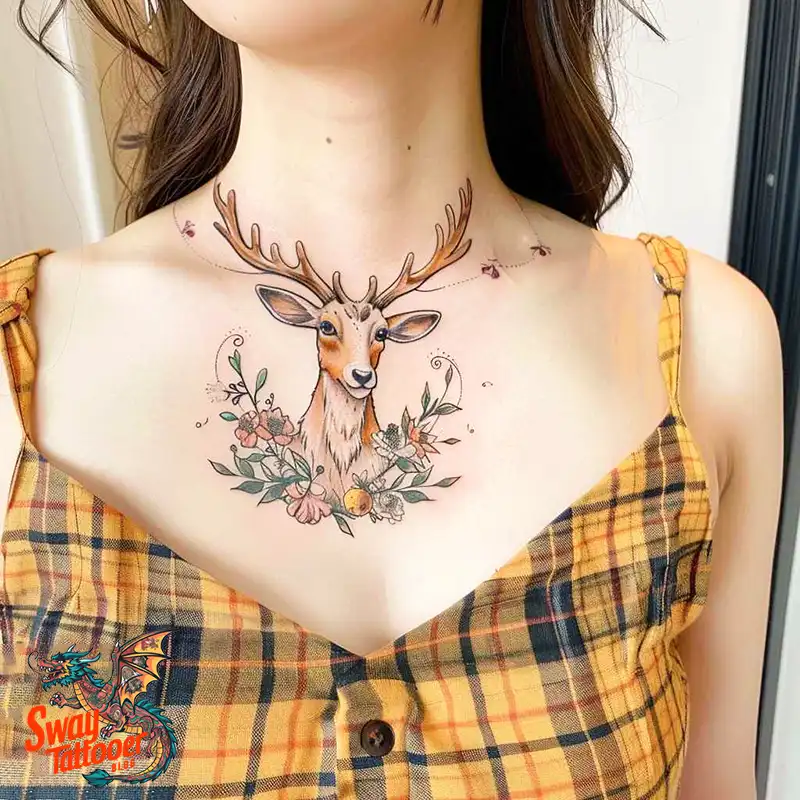
How to Take Care of Your Goat Tattoo
- Initial Care:
- First few hours: Leave the tattoo with a sterile dressing on it.
- Before touching your tattoo area, ensure that your hands are washed.
- Clean your tattoo area gently using moderate, unscented soap, and lukewarm water
- Rinse the tattoo with clean, warm water. Then pat it dry with a clean paper towel — not a cloth or sponge to avoid abrasions.
- Moisturizing:
- Use an ointment over the tattoo, or an unscented lotion, to replace moisture to the skin.
- Do not put too much; excess may smother the skin and may give problems.
- **Healing Time: **
- Steer clear of direct sunlight and swimming pools for at least two weeks.
- Put on loose clothes which will not produce friction over the area tattooed.
- Don’t scratch or pick your scabs at all as it can lead to an infection and/ or permanent damage to your tattoo.
- ** Long-term Care:
- Keep applying sunscreen as the tattoo will start to fade with UV exposure.
- The tattoo must be kept moisturized, and the skin hydrated for the tattoo to breathe and stay alive.
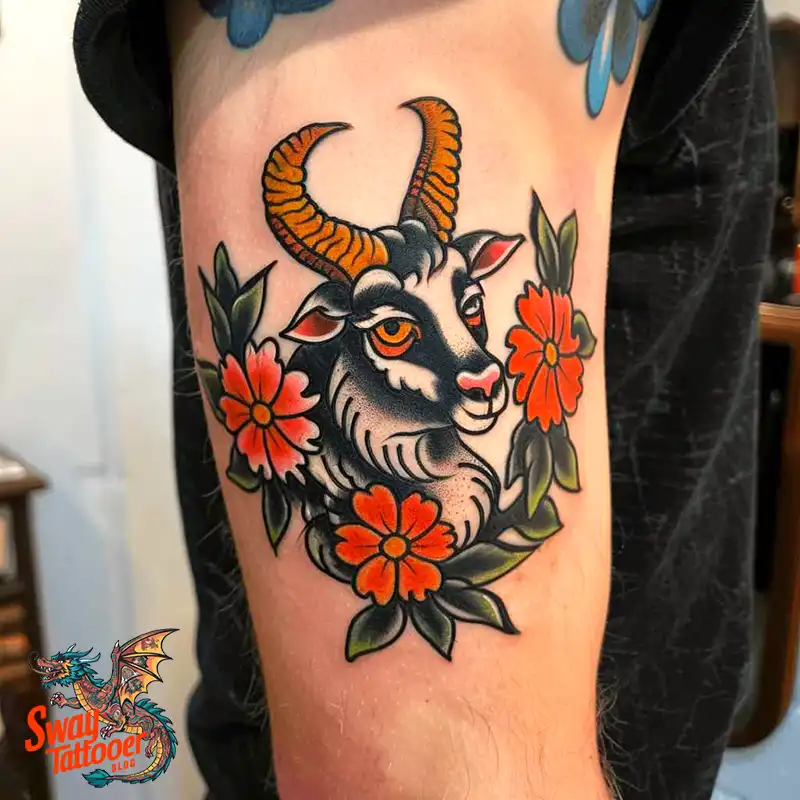
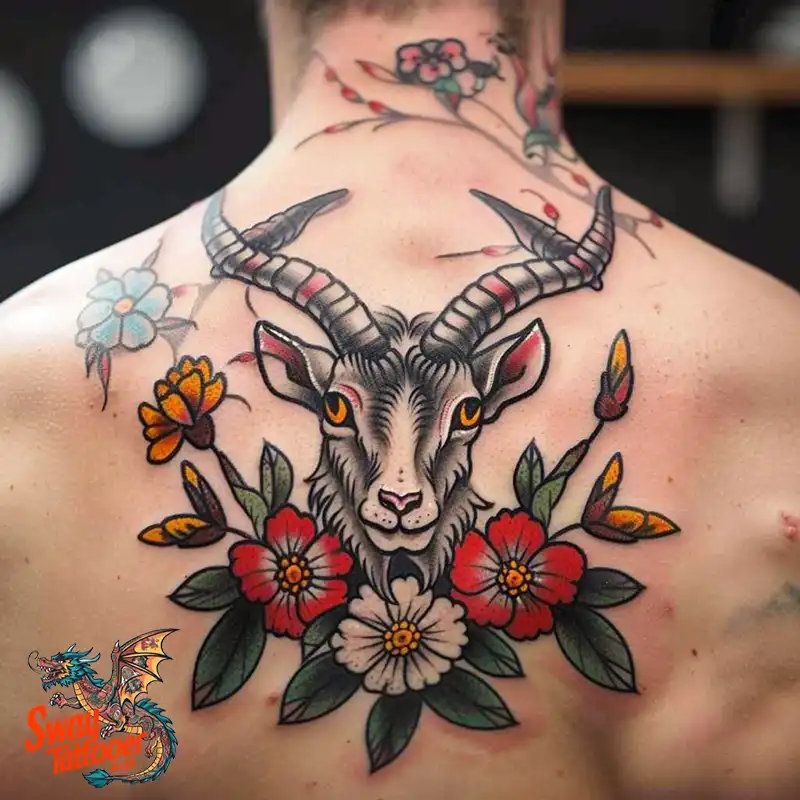
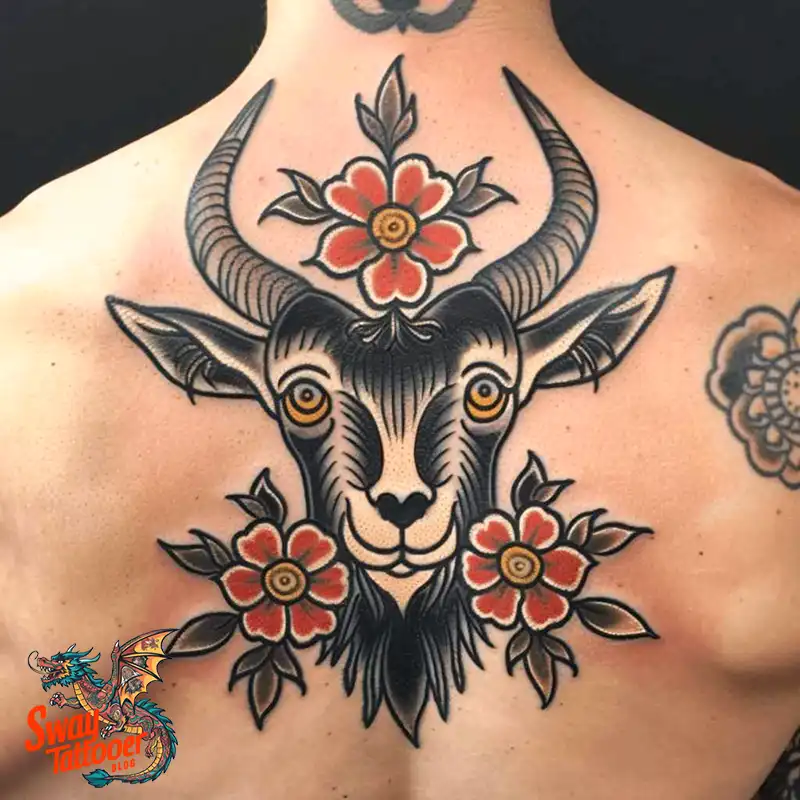
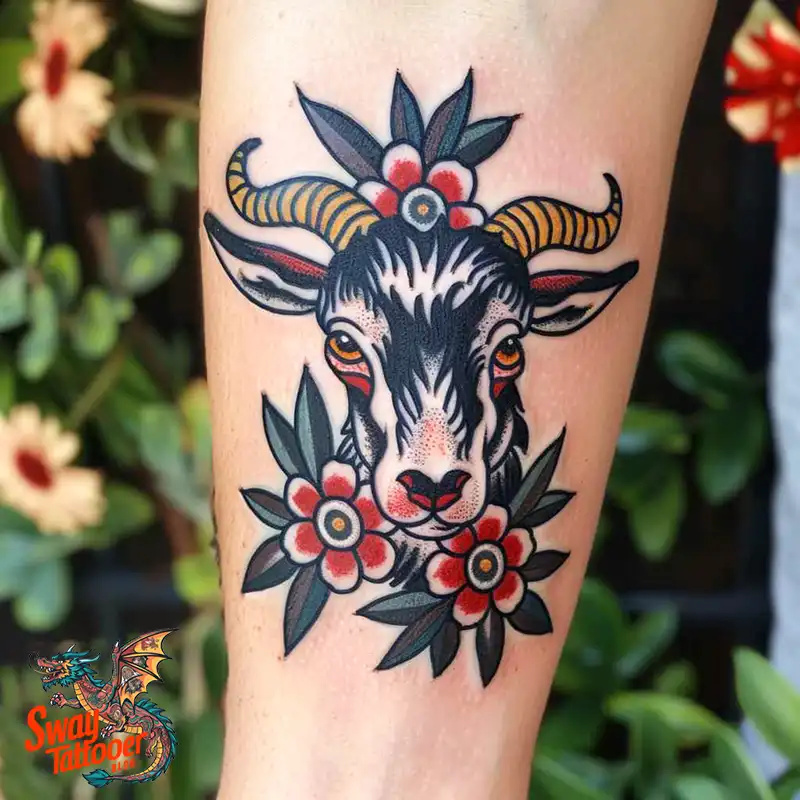
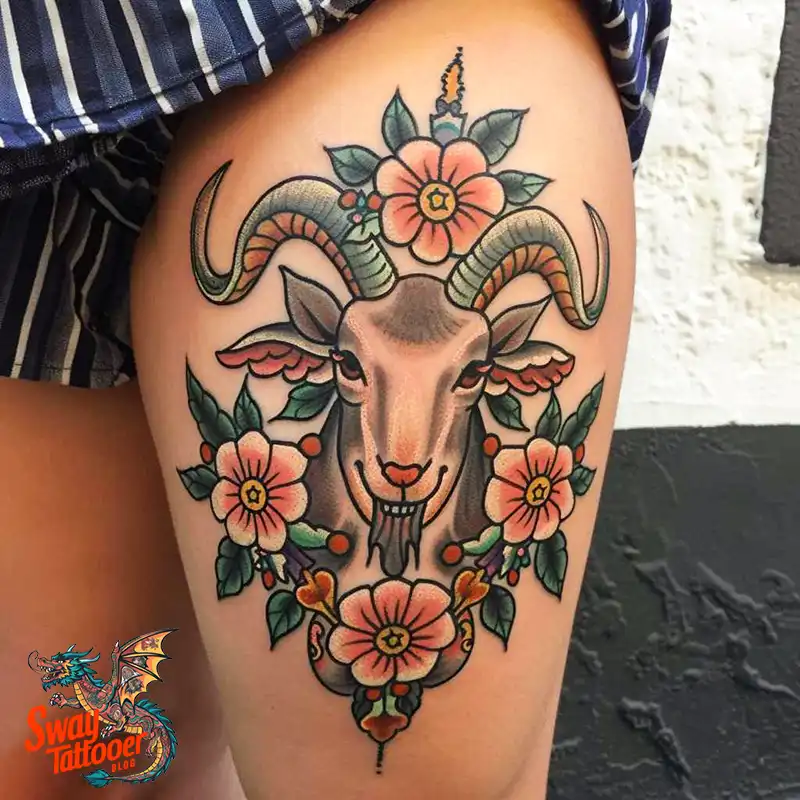
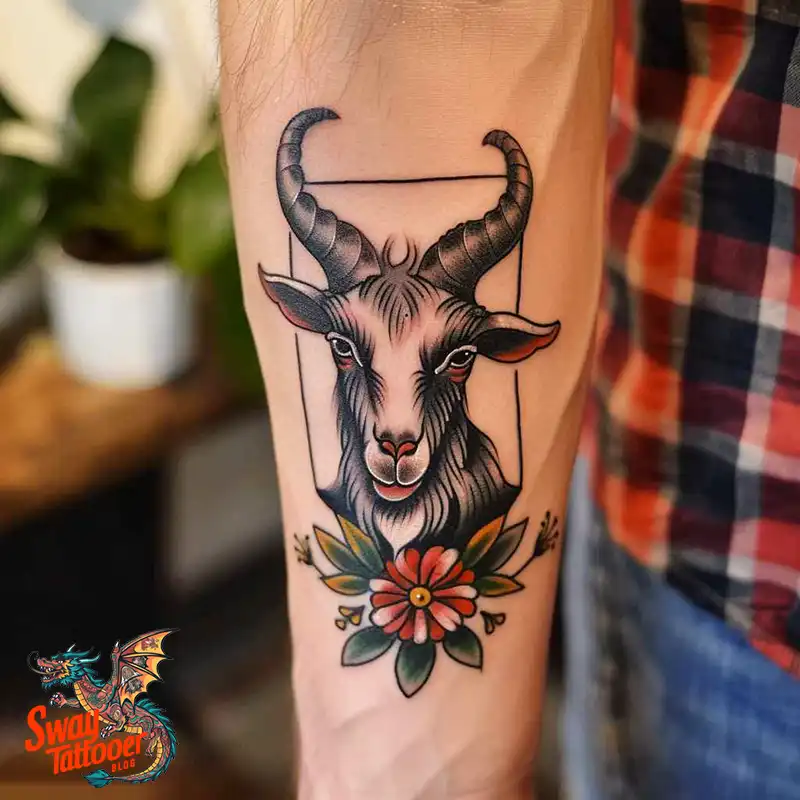
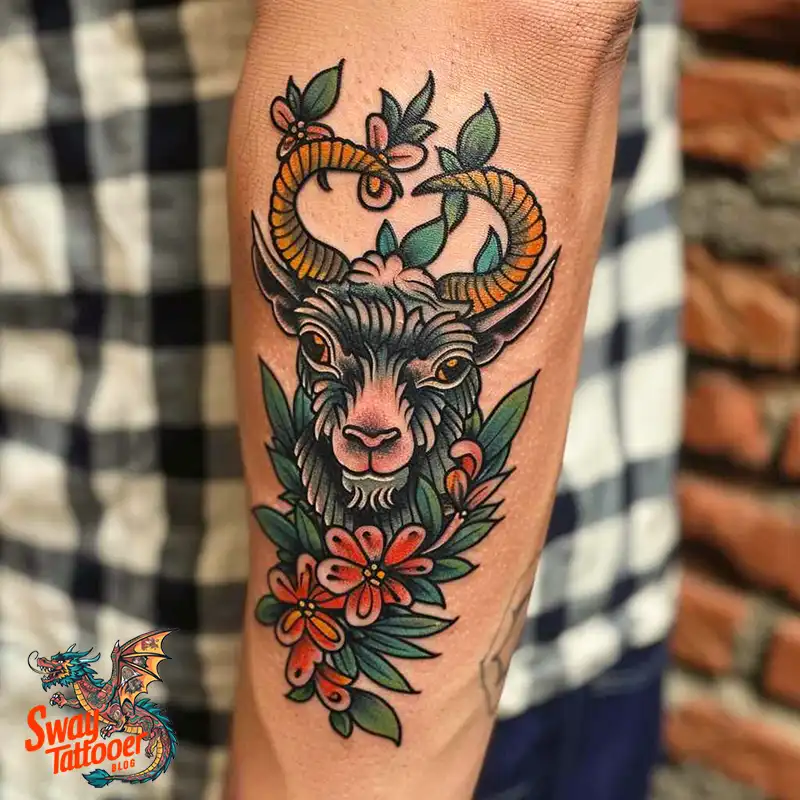
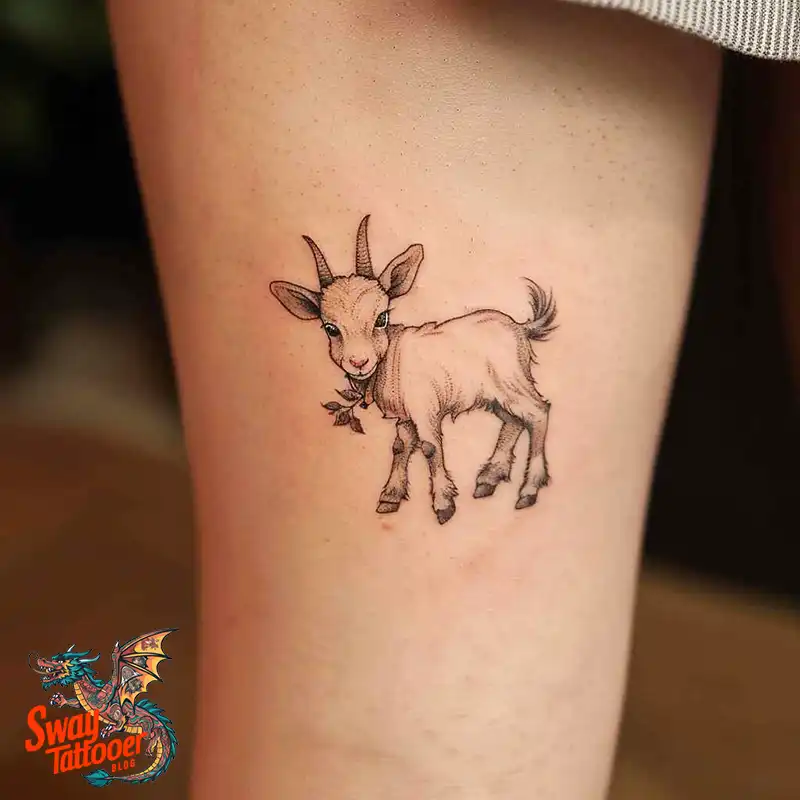
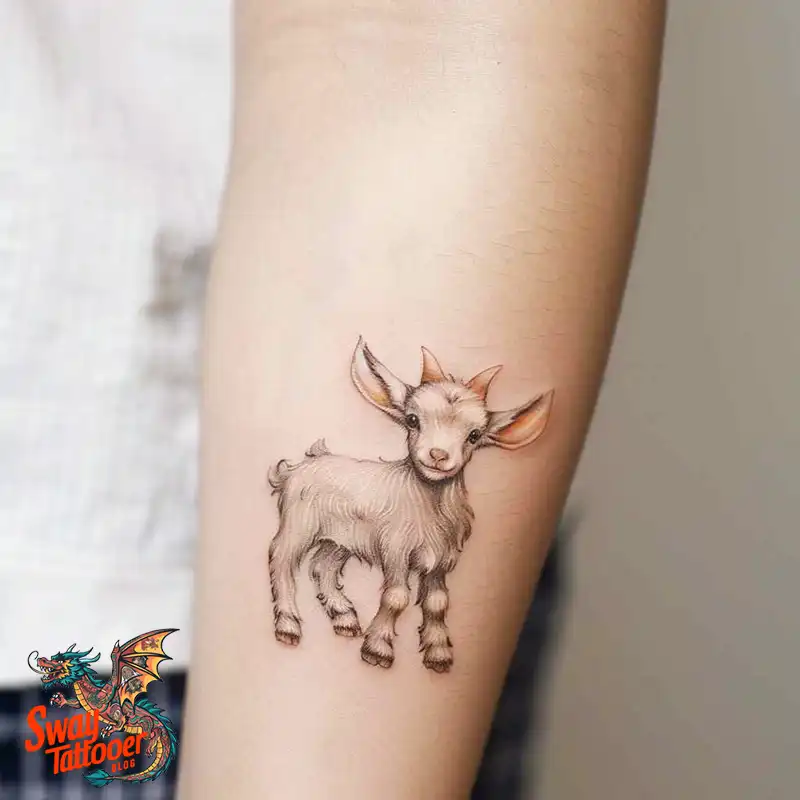
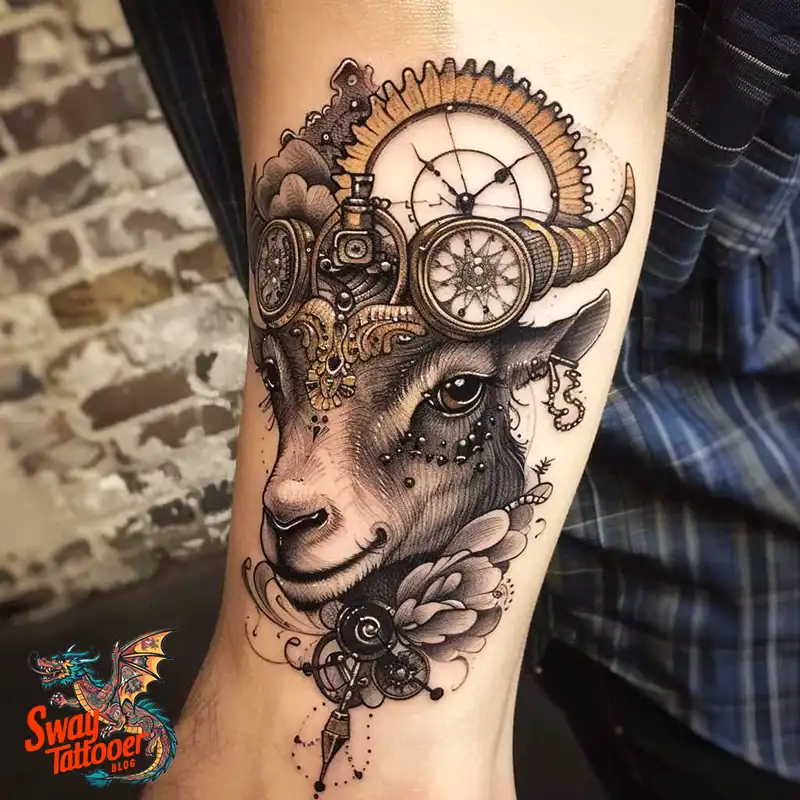
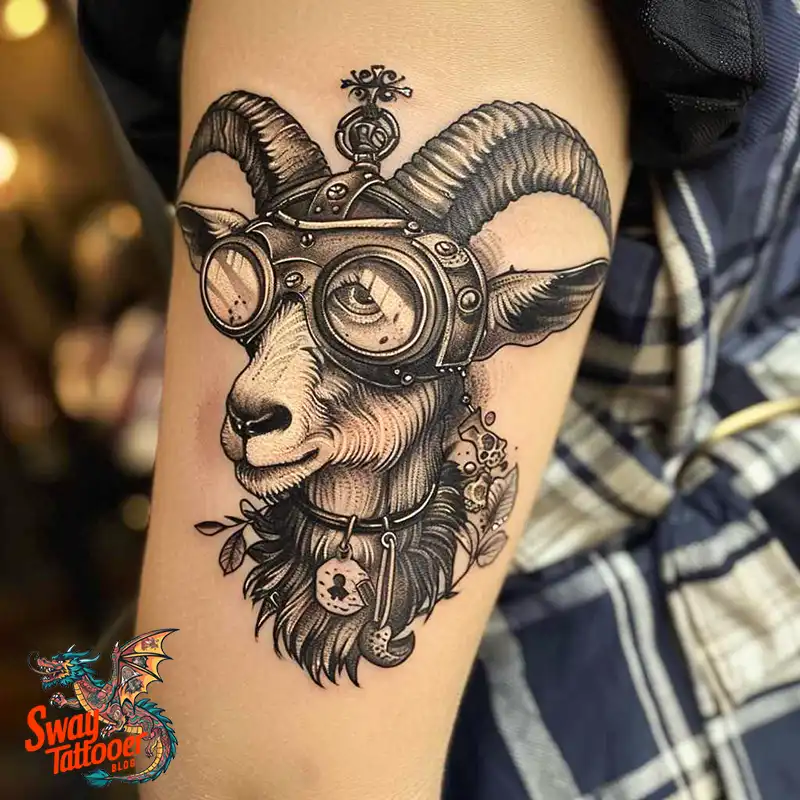
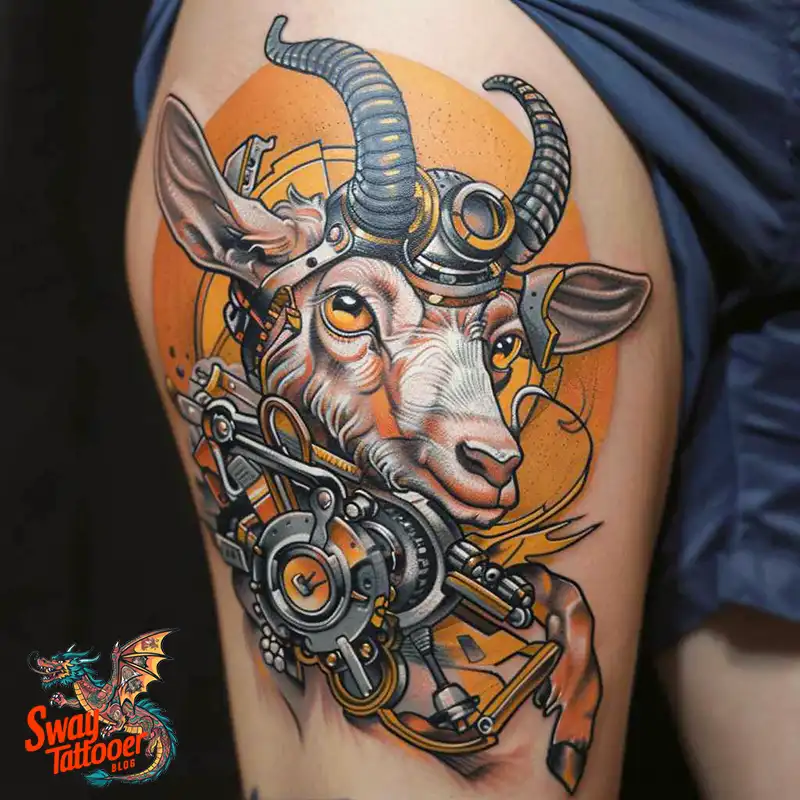
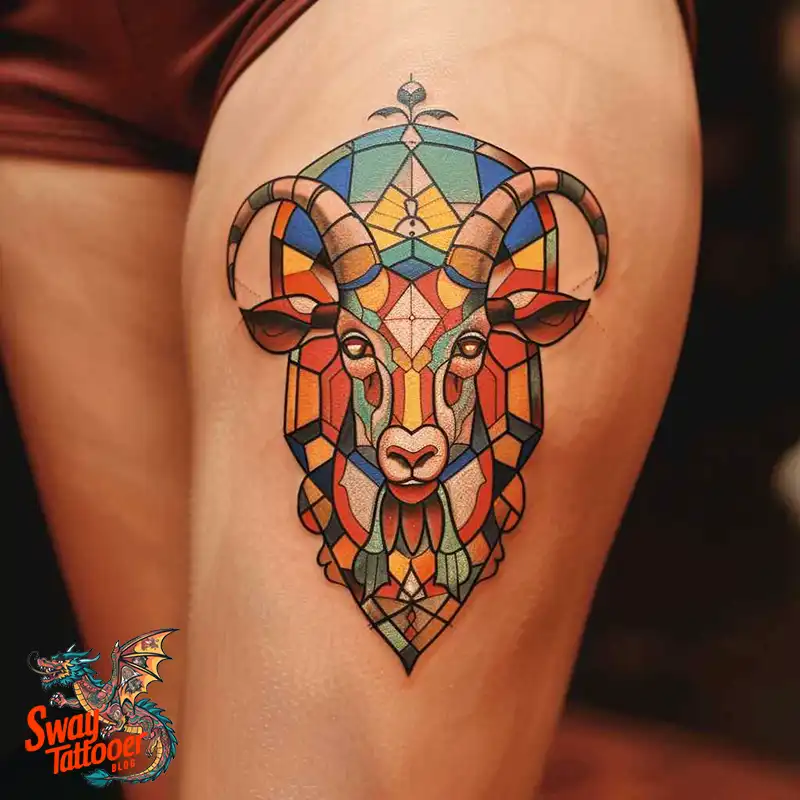
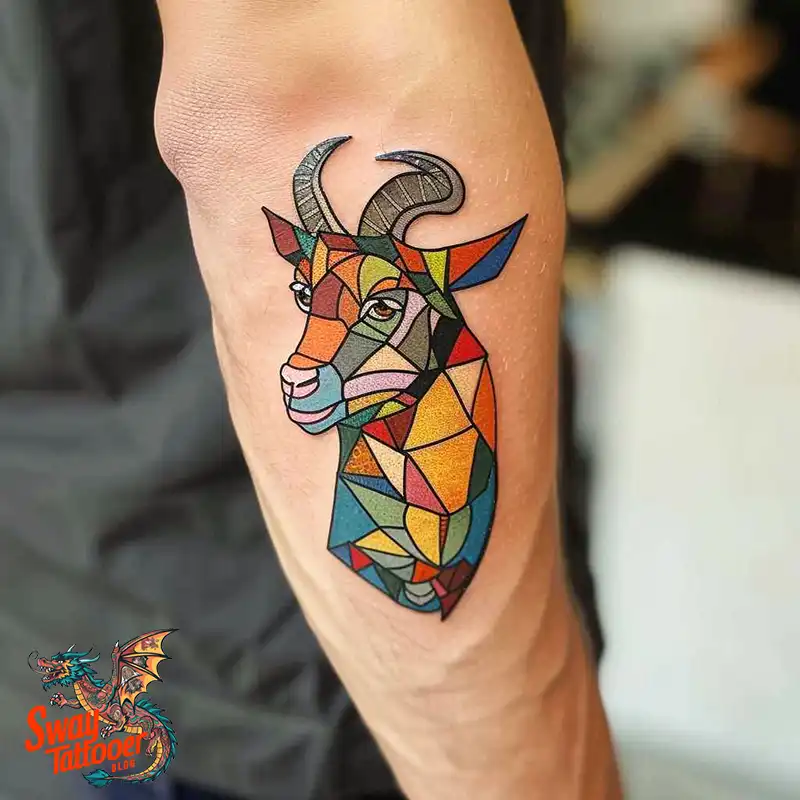

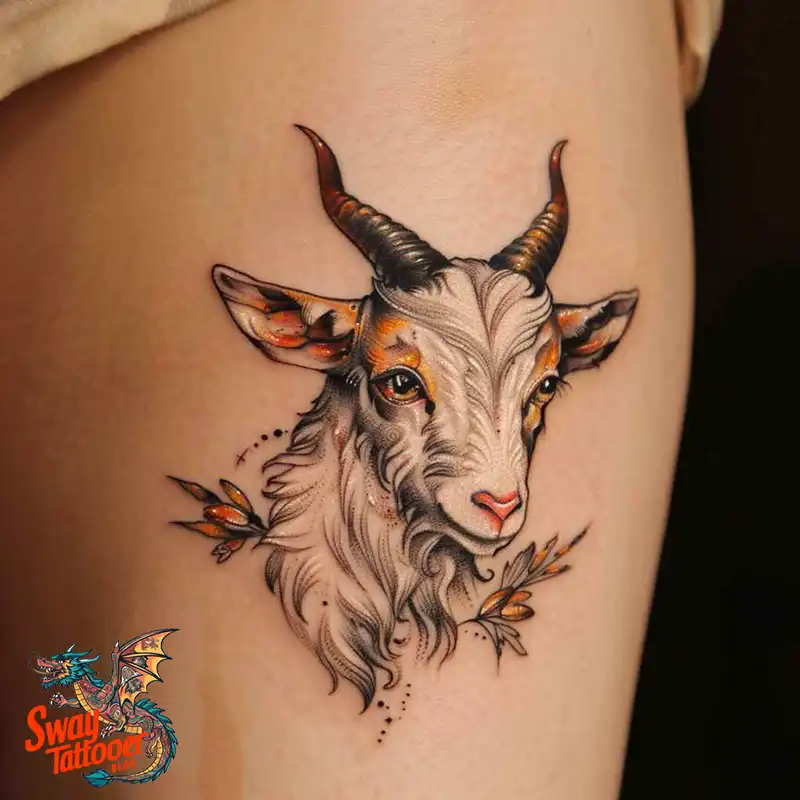
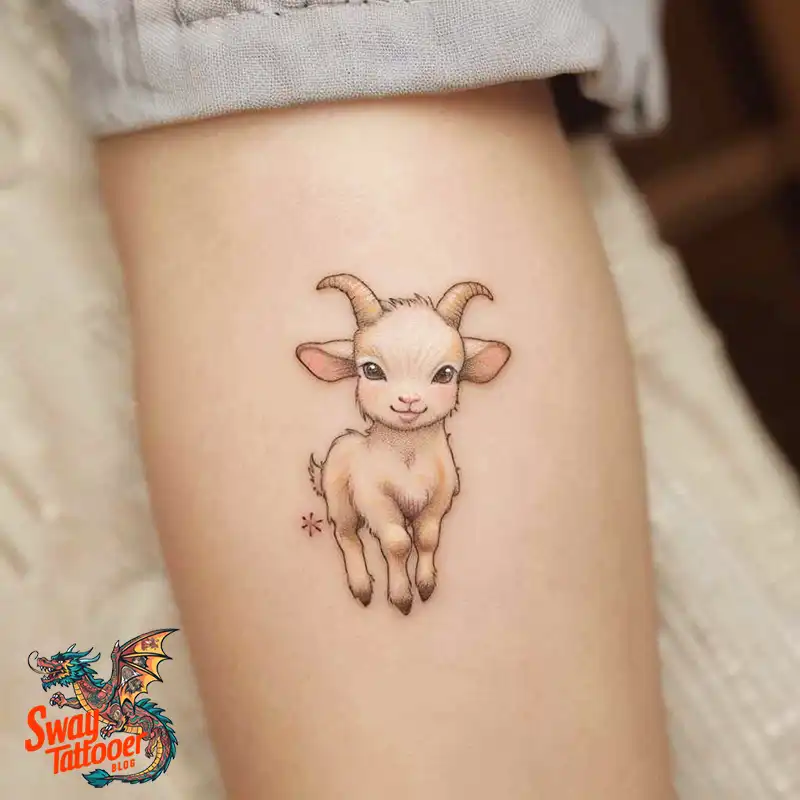
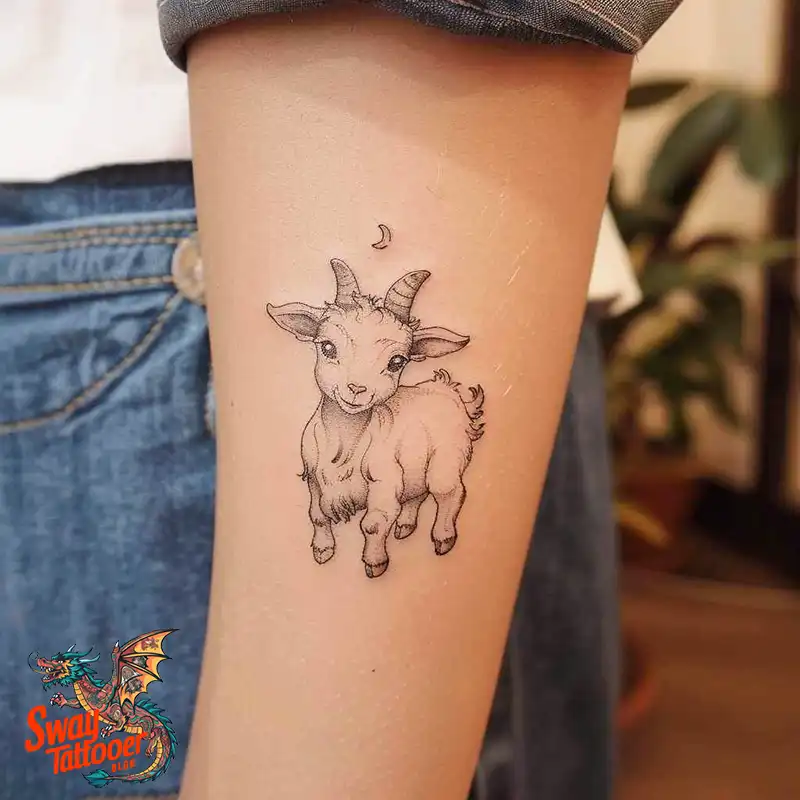
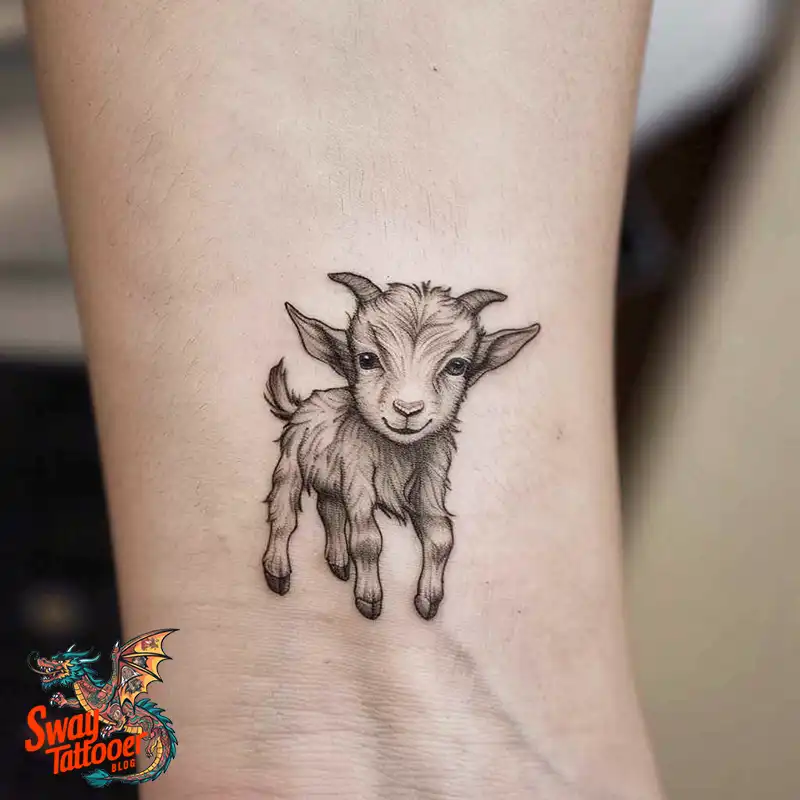
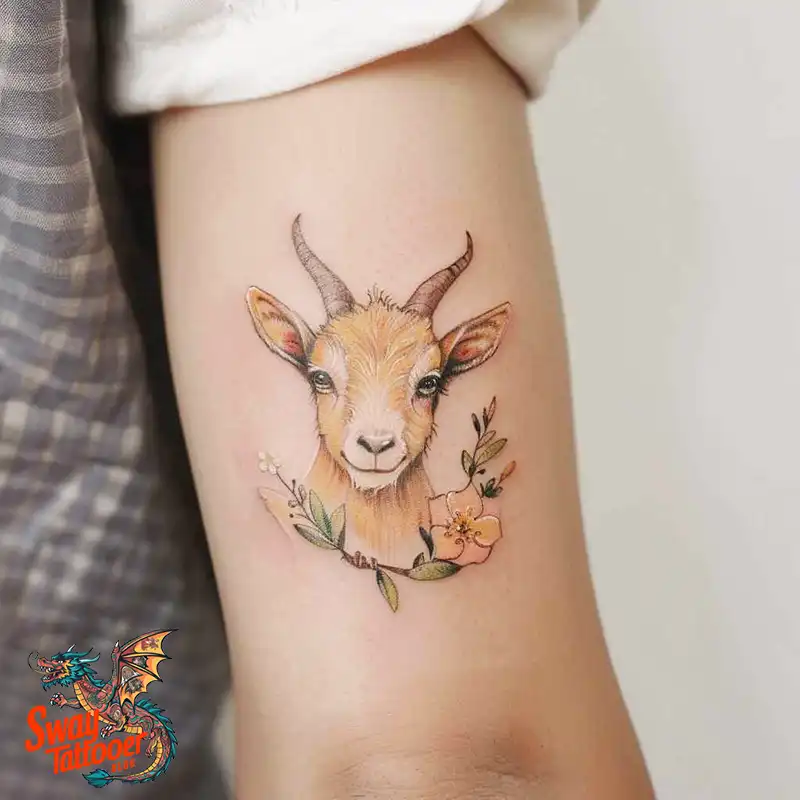
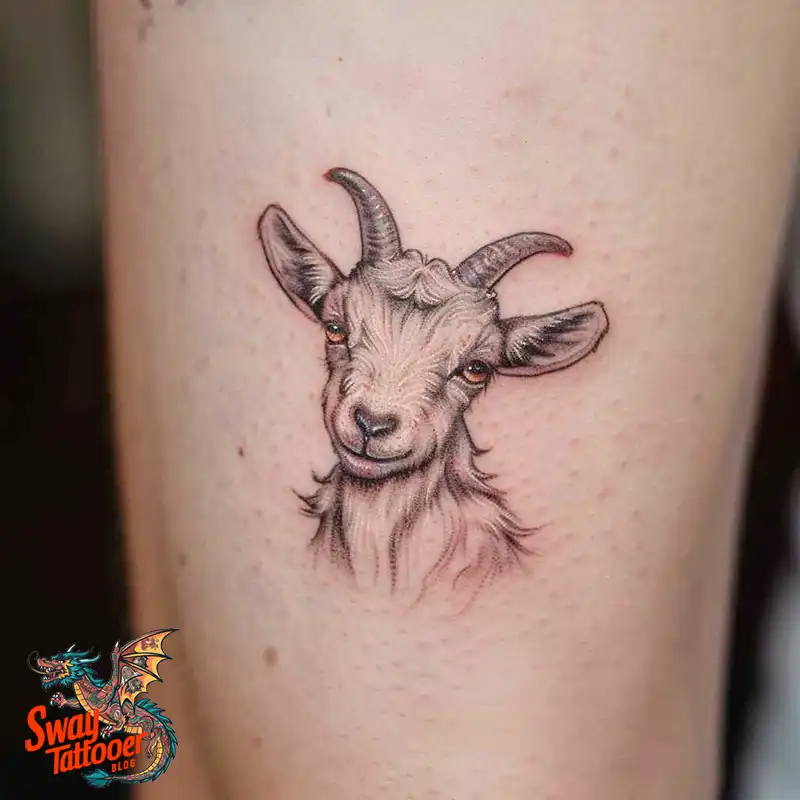
Longevity of the Tattoo
Color Tattoos: They may fade slightly after being on the skin for 5-10 years, or even much earlier in case of careless handling or overexposure to the sun.
- Black and Grey Tattoos: In most cases, these would have a longer life and would go on for about 10-20 years with proper care.
- Touch-ups: Periodic touch-ups can increase the life of a tattoo by a long way, giving a fresher and more vibrant look over a period of time.
In conclusion, goat tattoos in any style—be it traditional, geometric, realistic, mythic, or minimalist—are bound to be lovely, meaningful enhancements to your body art collection. Tattoo aftercare and long-term maintenance is the key to your tattoo remaining a source of pride and personal expression for the remainder of your life.
Frequently Asked Questions (FAQs)
1. What is the symbolism behind goat tattoos?
The symbolism in goat tattoos ranges at very great extremes depending on cultural and personal perspectives. On the one hand, in so many traditions, goats portray independence, resilience, and curiosity. They are the kind of beasts that are resourceful and so somehow manage to adapt; it lives where everything else would die. Many mythologies depict goats as symbols of either good or negative characteristics; in some culture, they are considered an animal of fertility and vivacity, while others may find them as symbols of deception and licentiousness. Generally speaking, the goat tattoo can be a very personal one and symbolize a specific quality or ideology of a person.
2. What are some popular styles and designs for goat tattoos?
Goat tattoos are exploitable in a range of artistic styles, each exploring its flare and interpretation on the subject. Some of the most popular ones entail:
Realistic: This type focuses on bringing out the very lifelike details the goat, emphasizing its physical features like the fur texture or even further on the sparkle in the eyes.
- ** Geometric: ** Utilizing geometric shapes and designs, it makes a sort of stylized design of a goat that could lead to a modern, abstract look.
- ** Traditional: ** Sometimes referred to as old school tattoos, these typically consist of bold lines and bright colors. Normally, they give you a little more basic, iconic representation of a goat.
- Watercolor: This is again a mimic of how a watercolor painting looks—free-flowing all around—many splashes of color to add a sense of fun and art to the goat tattoo.
- Tribal: Taken from the art of the indigenous people, tribal tattoos use patterns and lines structured in a very intricate yet powerful, bold way to represent the goat.
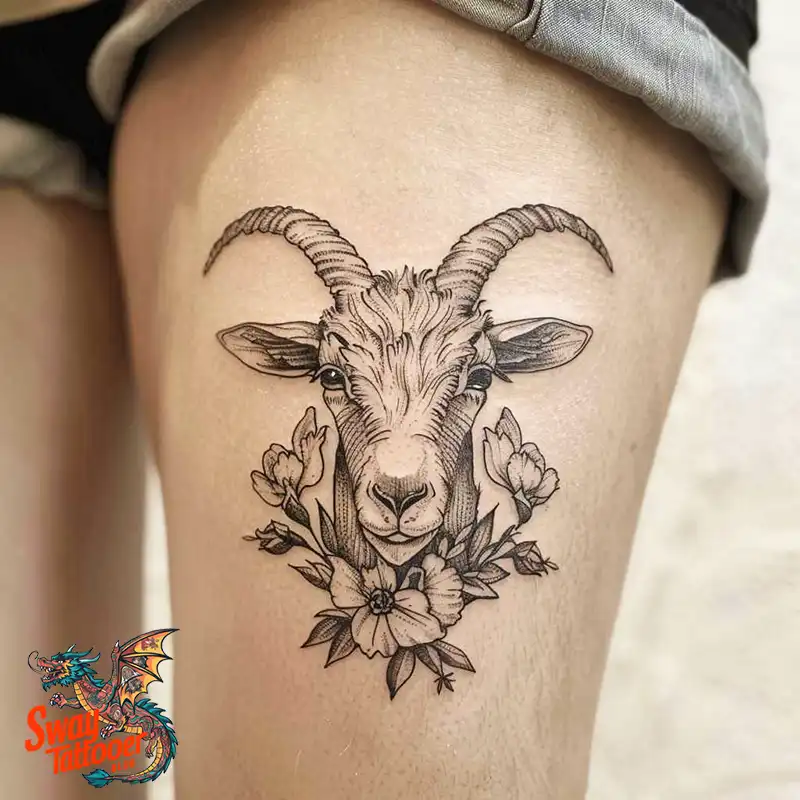
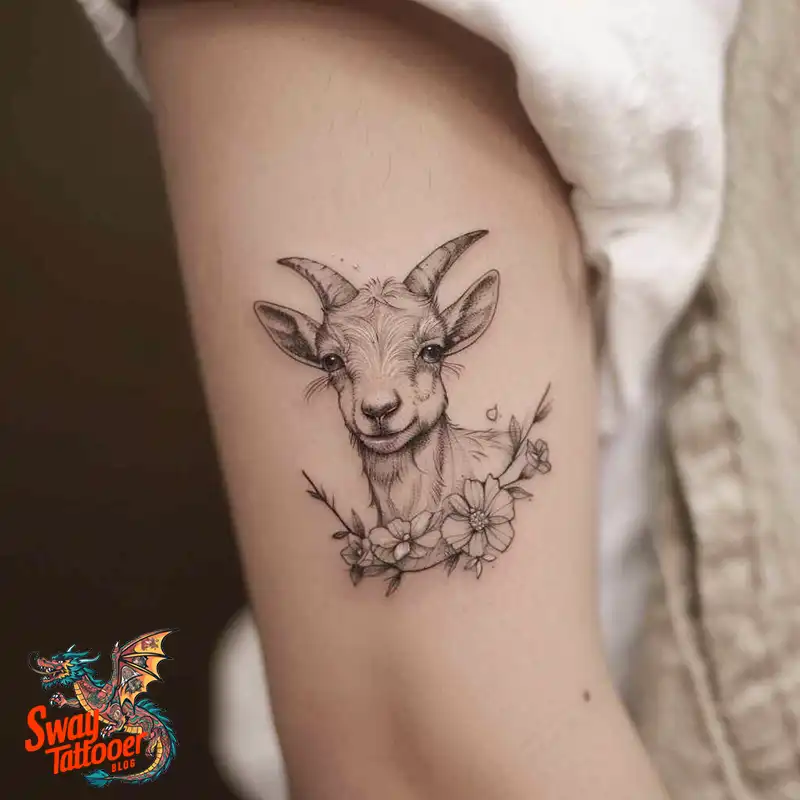
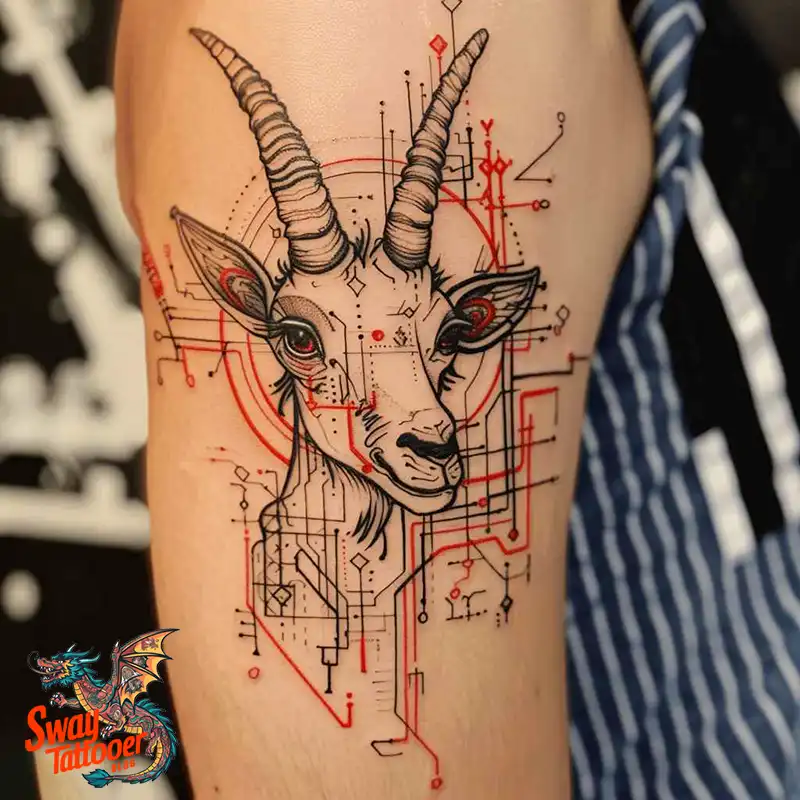
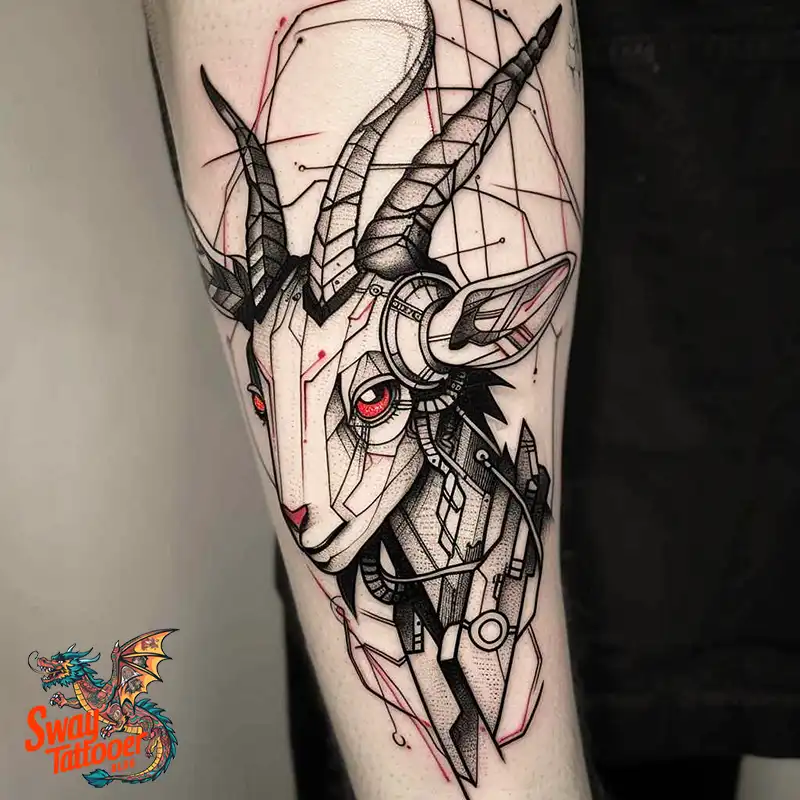
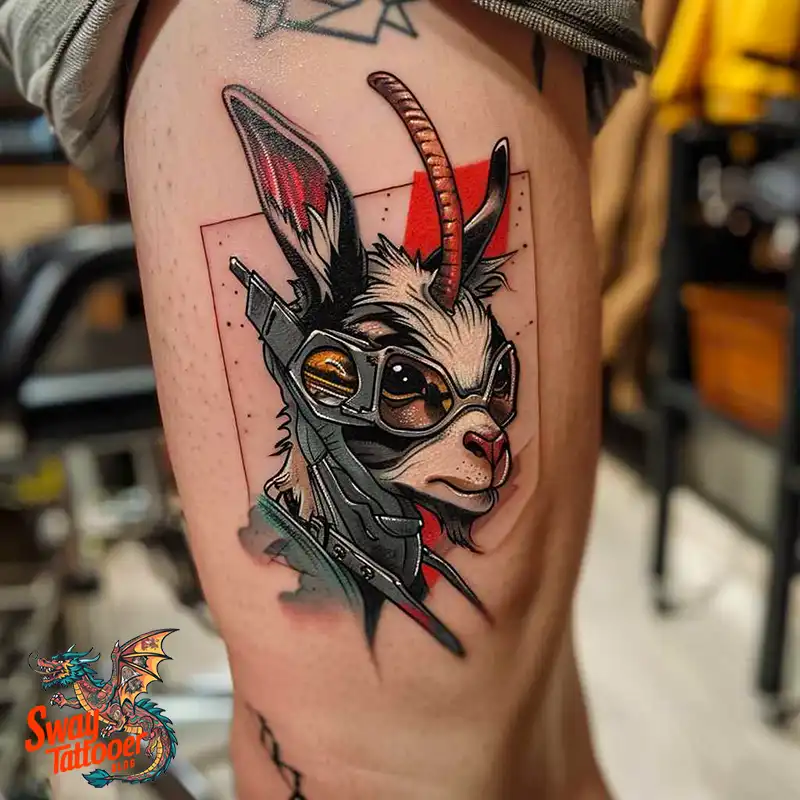
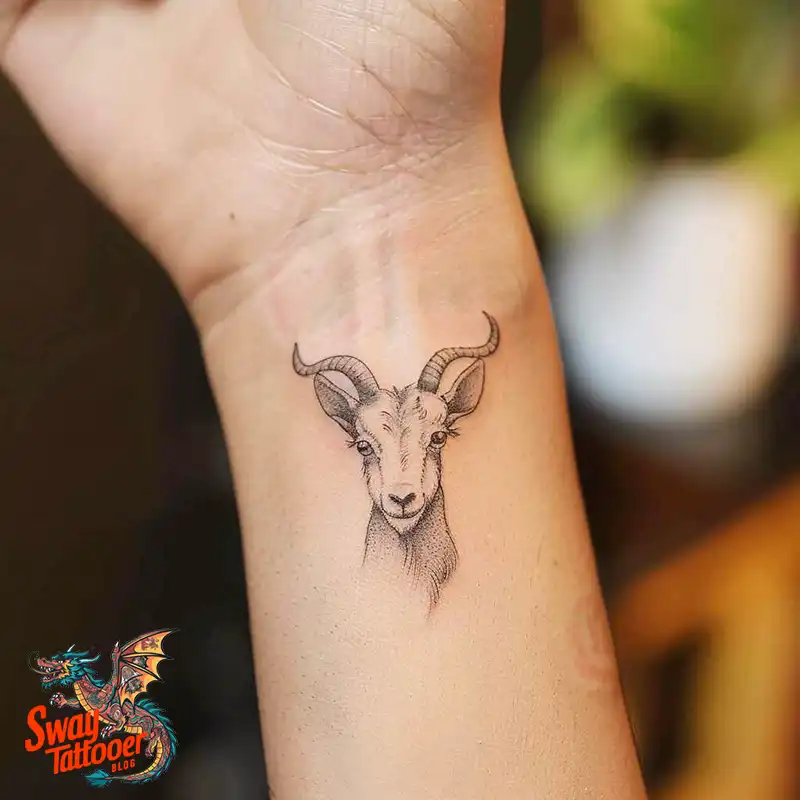
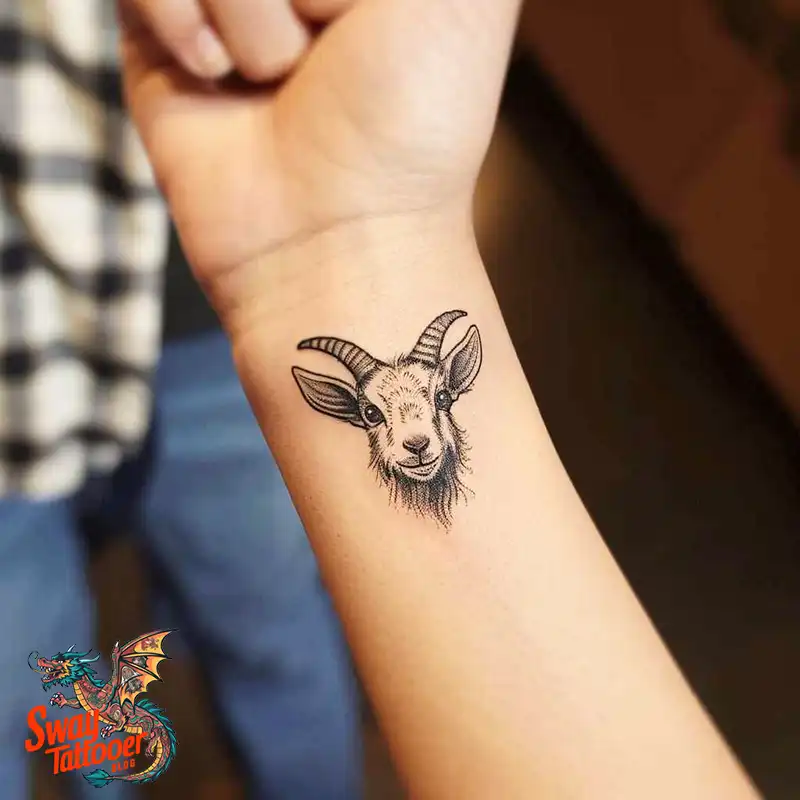
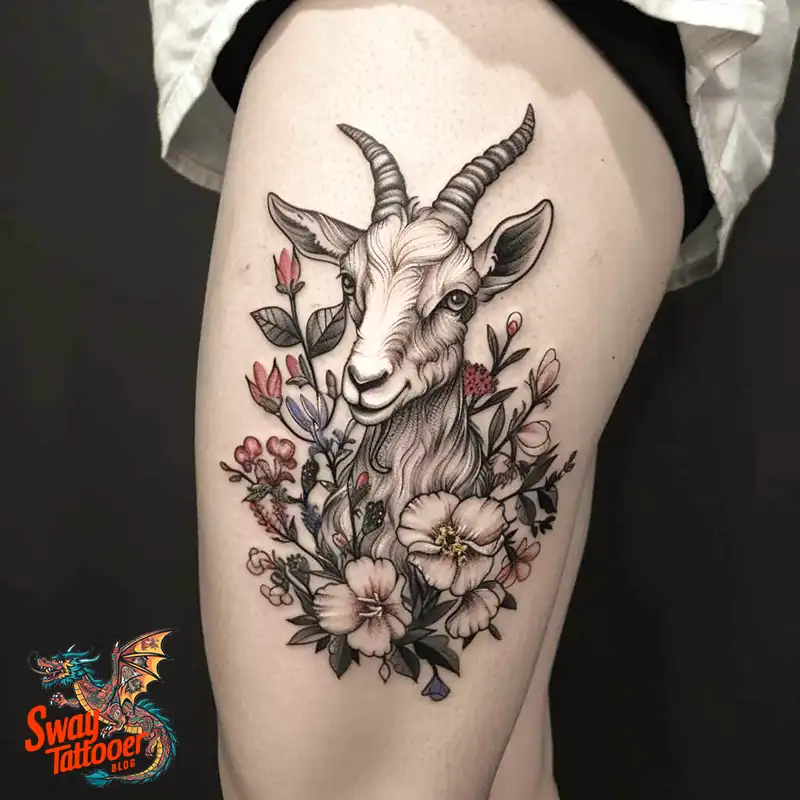
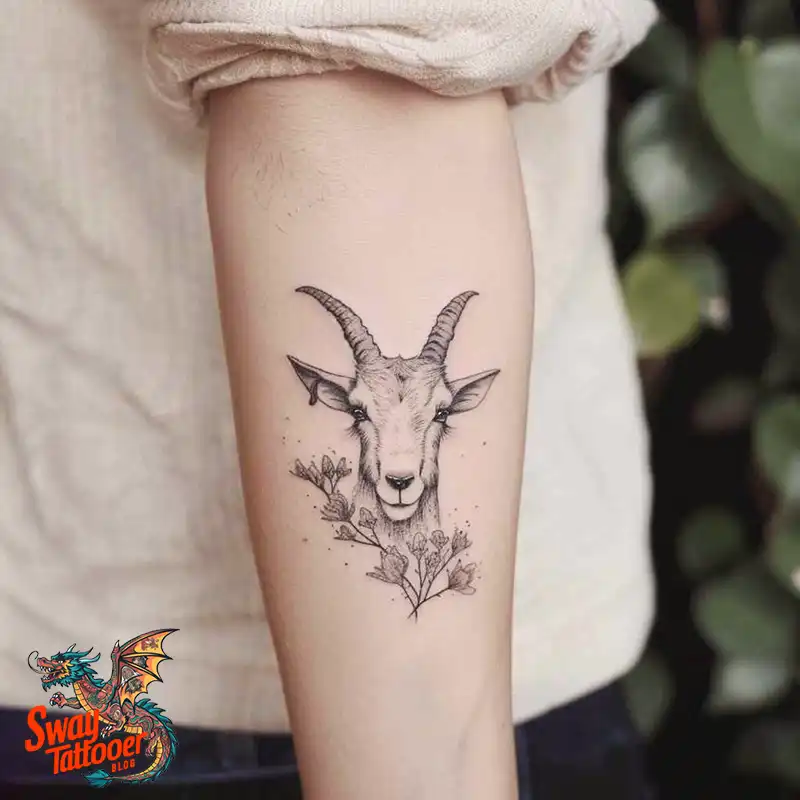
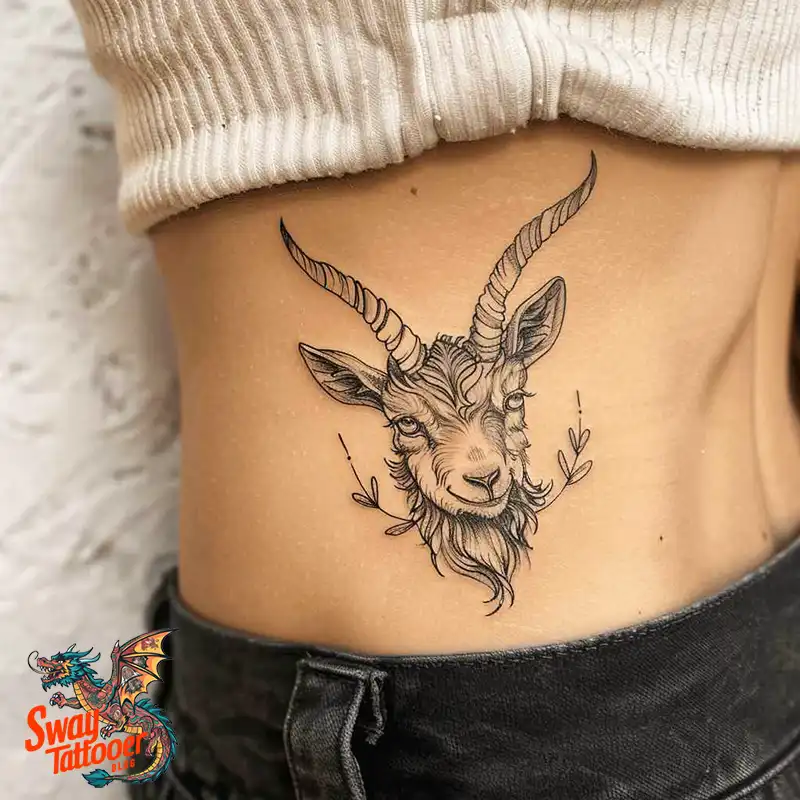
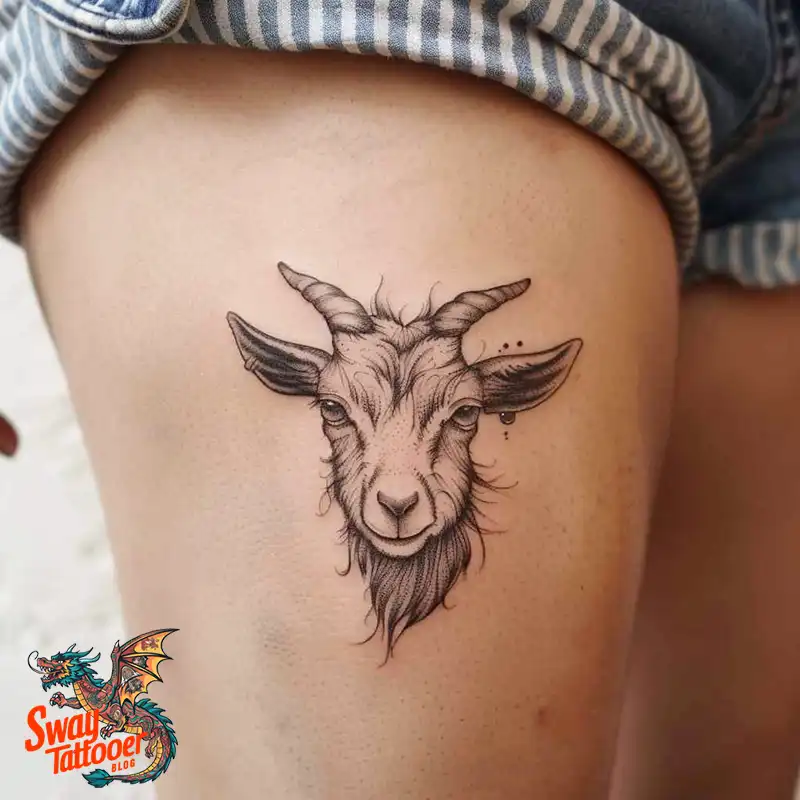
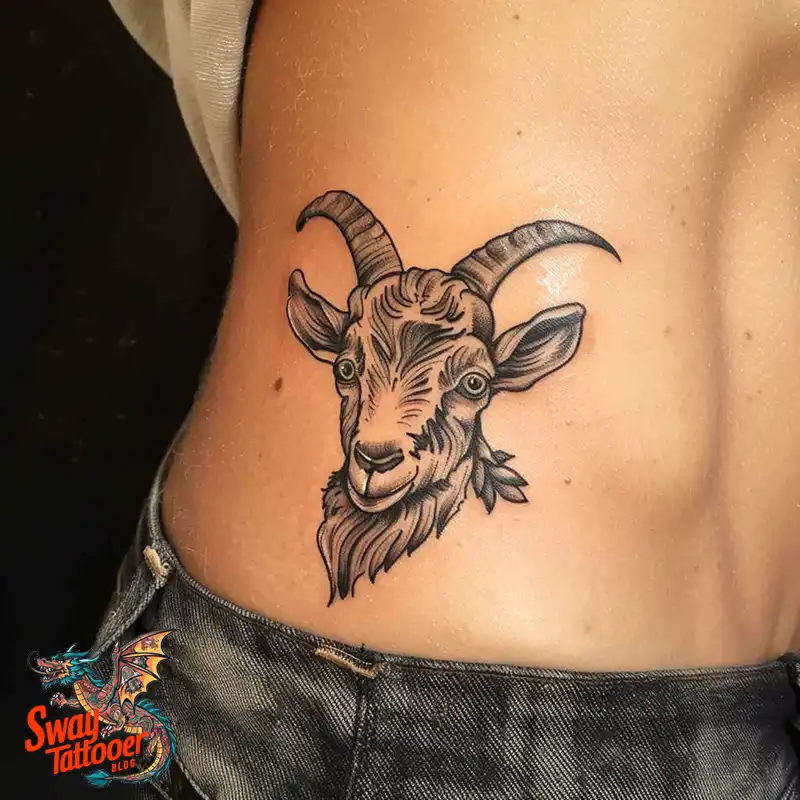

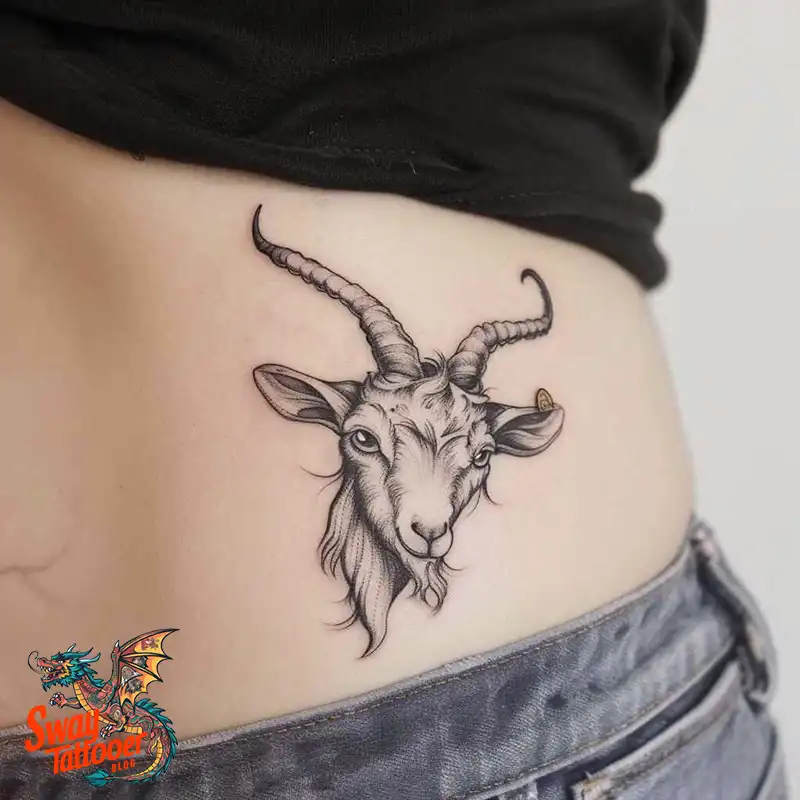
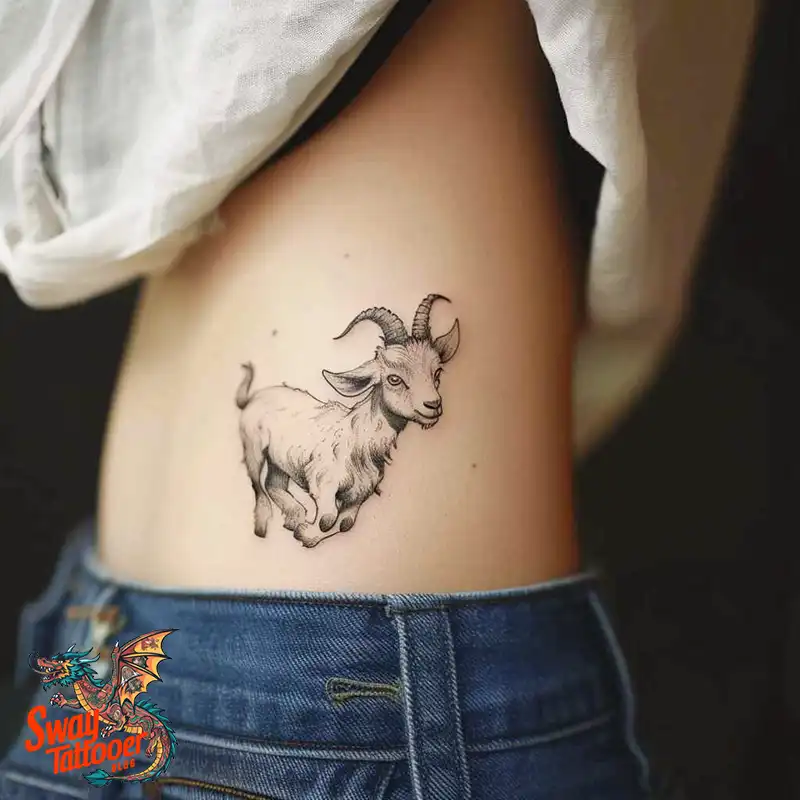
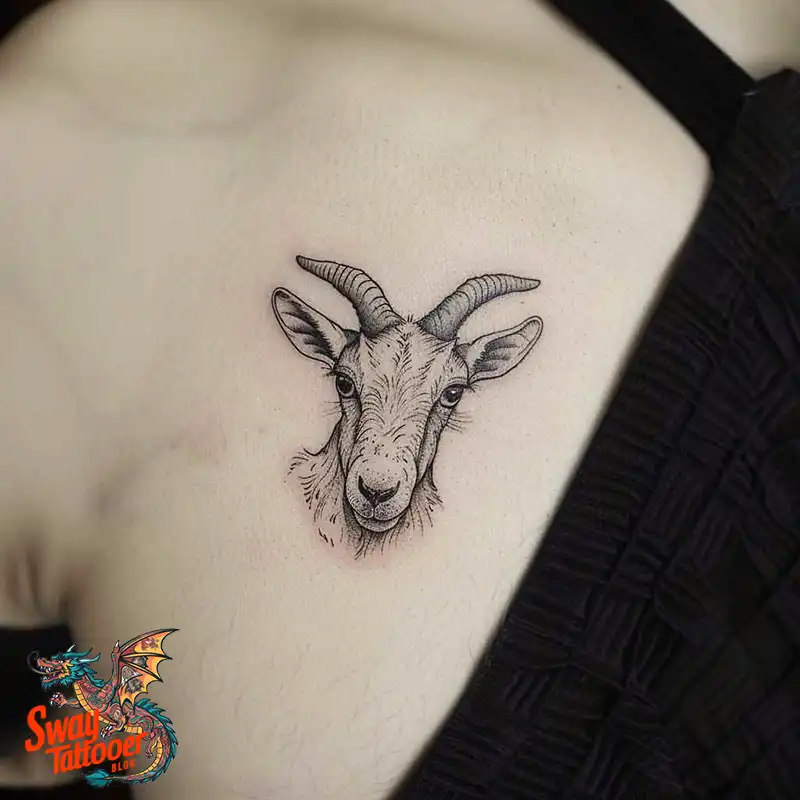
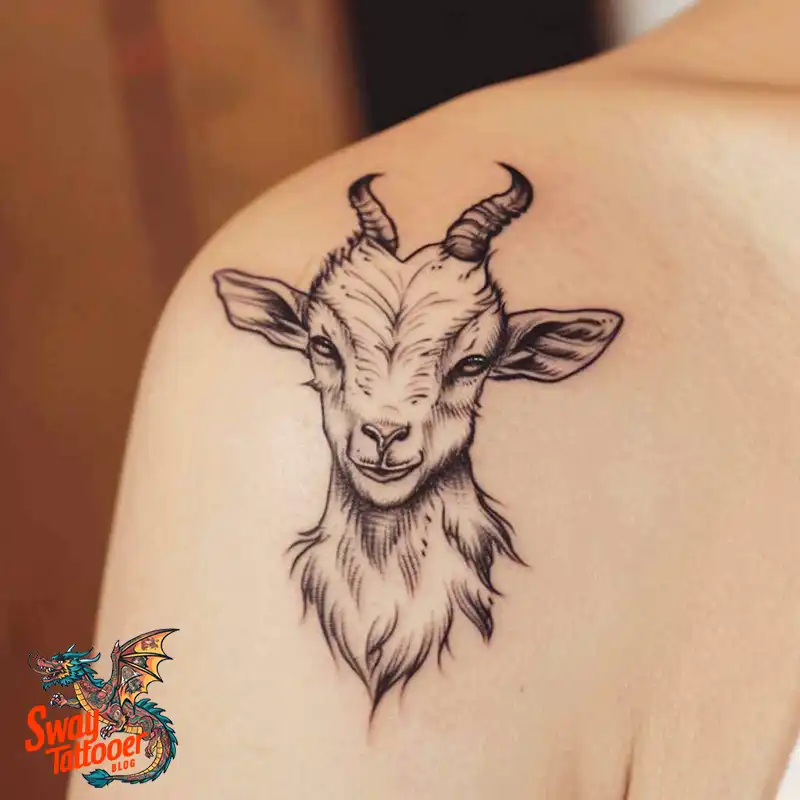
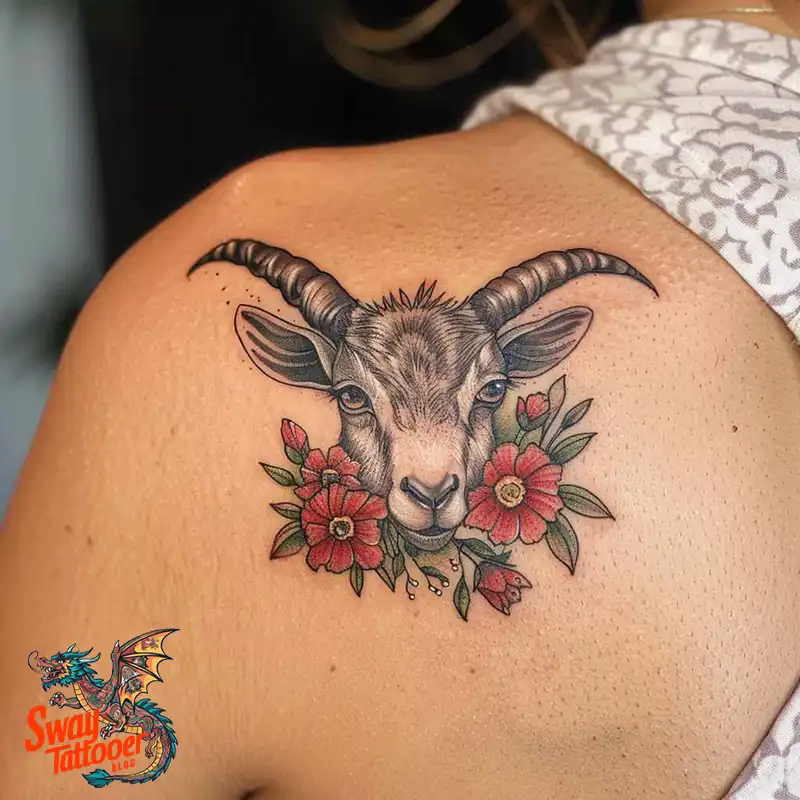
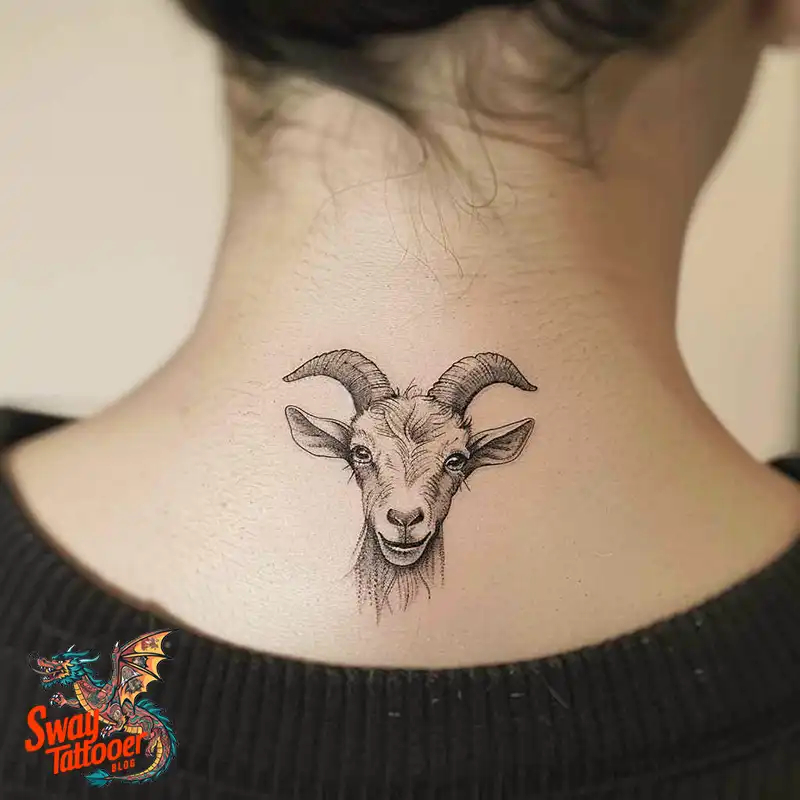
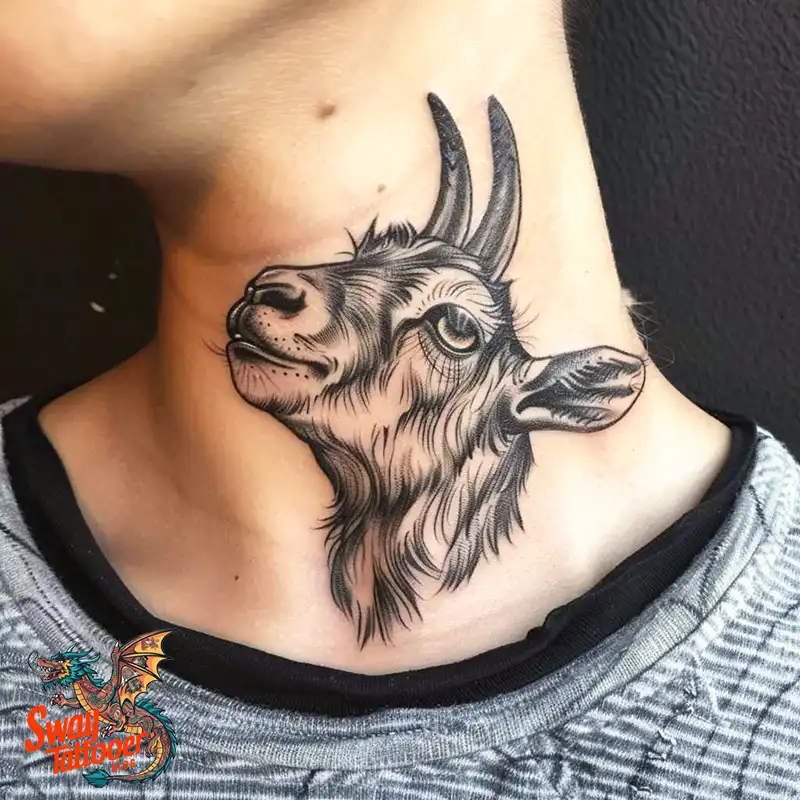
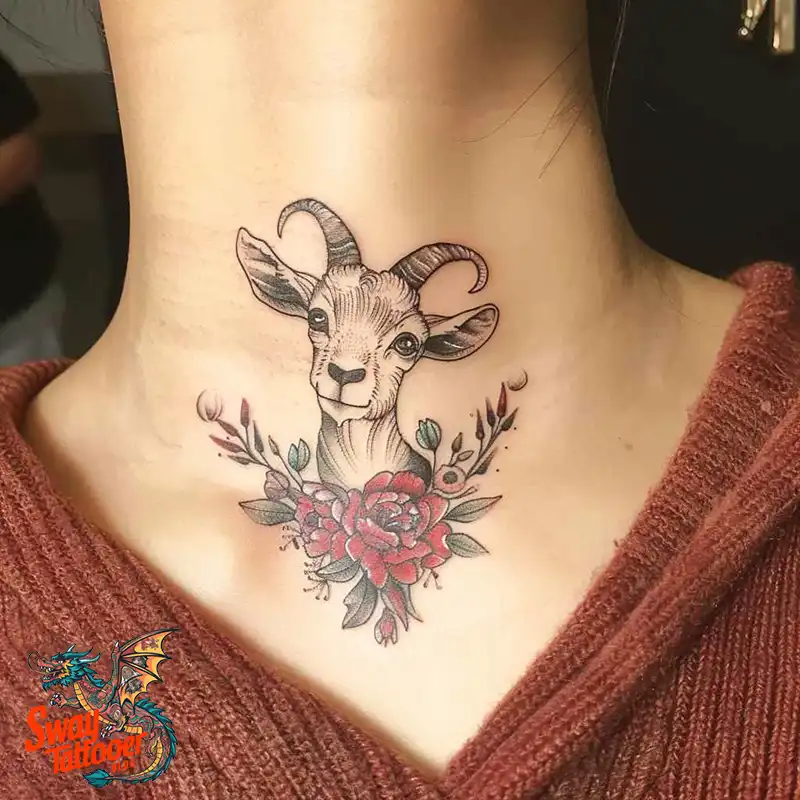
3. How should I prepare for getting a goat tattoo?
Getting tattooed is usually quite important to prepare so that everything goes smoothly and the experience becomes a positive one. Here are the steps taken during the process:
- Research Artists: Take the time to find a quality artist in the style you are looking for. Most have some form of an online portfolio with reviews from other clients.
- Consultation: Make an appointment and go for a consultation. During this time, you’ll be telling them any design ideas, specifics on location, size, and above-mentioned potential problems.
- Health Considerations: Make sure you are in good health the day you have your tattoo appointment. Avoid alcohol and blood thinners the day you get tattooed since they may alter the way the skin is pierced and impair the ease with which tattoos are applied.
- Hydration and Nourishment: Be sure to take enough water and a good meal so that you are not low on energy and become uncomfortable at your appointment.
- Skin Care: Well, moisturize your tattoo area a few days before your tattoo session and refrain from sunburns or skin damage.
4. What is the procedure like?
The tattooing procedure commonly follows the steps below:
- Applying the Stencil: Your artist will put a stencil of the design on your skin to make sure you find its placement and positioning fitting.
Process: The tattooist will then proceed to tattoo the design into the client’s skin using a tattoo machine. This can last from a few minutes to several hours, depending on the size and detail of the tattoo. - ** Pain Management:** The level of pain suffered ranges with different individuals and can also differ with the respective location of the tattooing on the body. Some parts have a higher concentration of nerve endings, whereas others have closer connections to the bone, and that yields to the sensitivity. Tell your artist if you need a break or if you feel uncomfortable.
After Care Instructions: On completion of the tattoo, he will provide the after-care instructions for proper healing. This may include washing the tattoo with mild soap, applying ointment, and refraining from sun exposure and submerging the tattoo in water.
5. How do I take care of my new goat tattoo so it heals properly?
Proper aftercare is crucial to the healing process and the longevity of your tattoo. Here are some general aftercare tips:
- Keep It Clean: Gently wash the tattoo with lukewarm water and mild, odor-free soap. Pat it dry with a clean towel.
- Moisturize: Apply the recommended ointment or unscented moisturizer to keep the tattooed area hydrated.
- ** No Sun Bathing: ** Would you keep your tattoo out of the sun so that it will not fade, nor become damaged? After healing up, apply sun lotion cream to the tattooed area when exposed to the sun.
- ** No Picking with Fingers or Scratching the Area: ** Sometimes, during the period of healing, the tattoo will scab or even try to peel. In such cases, never attempt to actually pick the scabs or scratch the area because it might result in infection.
- Avoid Soaking: Do not soak your tattoo in water before it is fully healed; this means swimming pools, hot tubs, or baths. A quick shower won’t harm, but do not let the tattooed area sit under running water for too long. Keeping these aftercare instructions in mind, you can go ahead and ensure that your goat tattoo heals finely and remains a vivid piece of art on your skin for the longest of time.
This FAQ section on goat tattoos has everything from symbolism and styles to preparation, process, and aftercare.
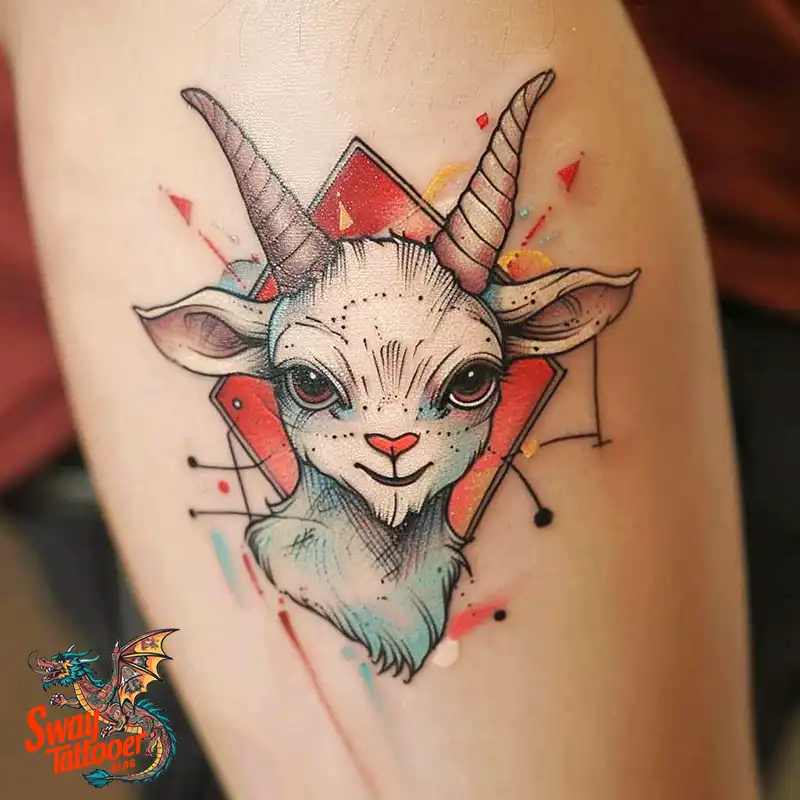
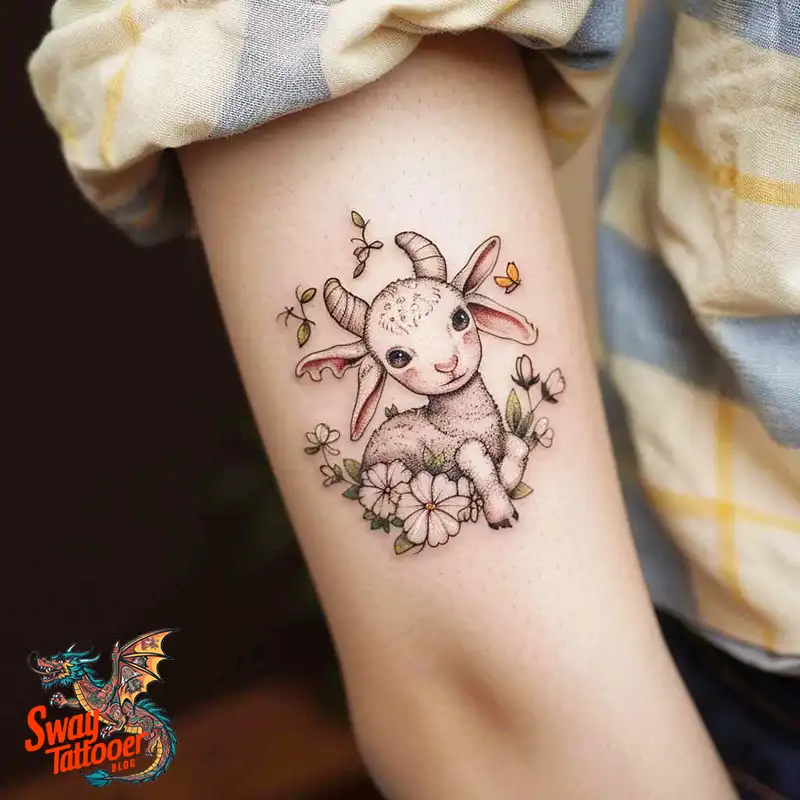
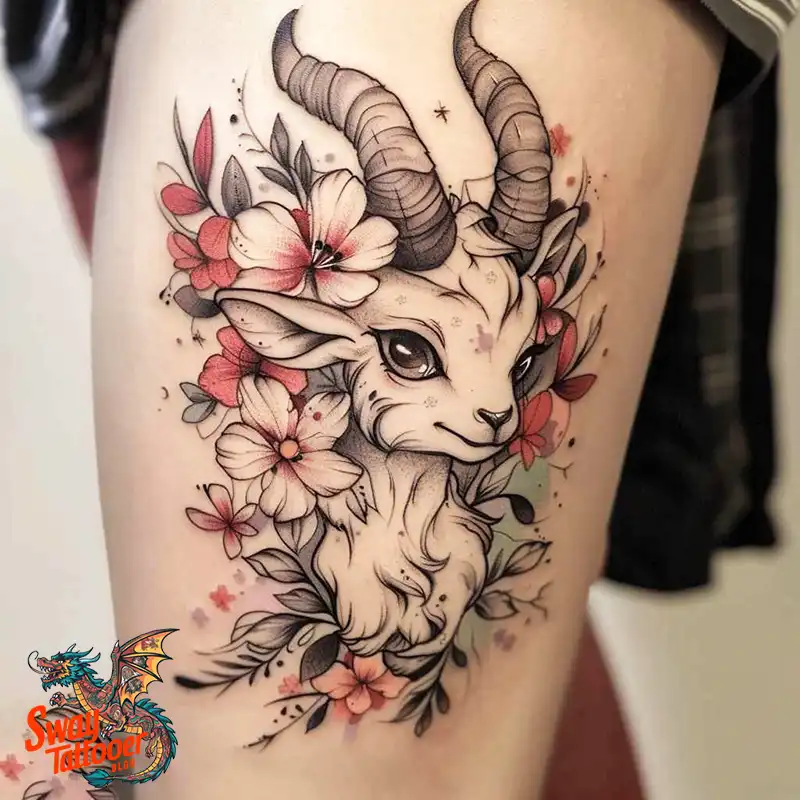
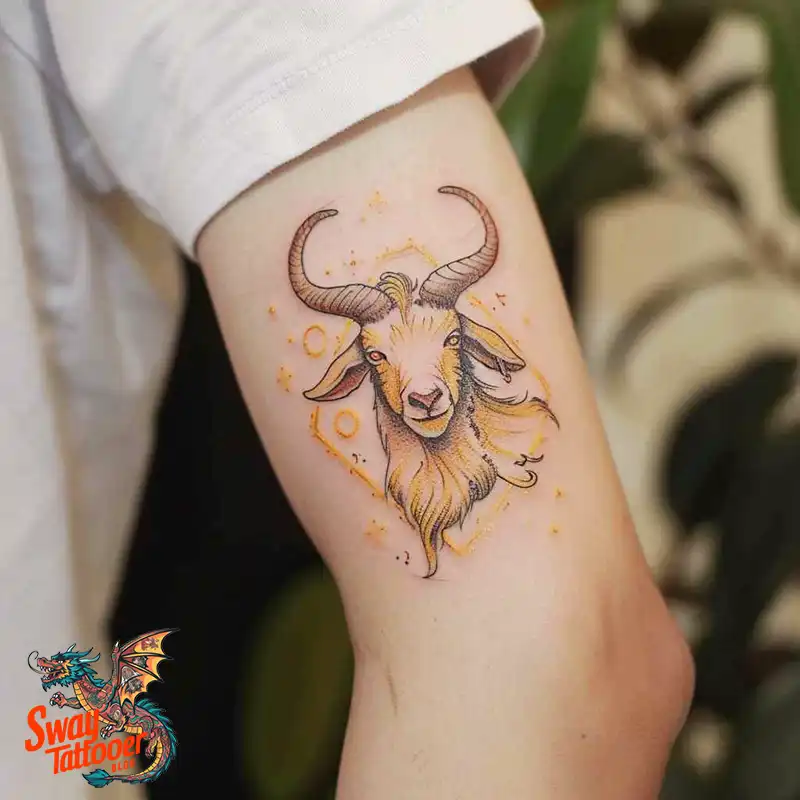
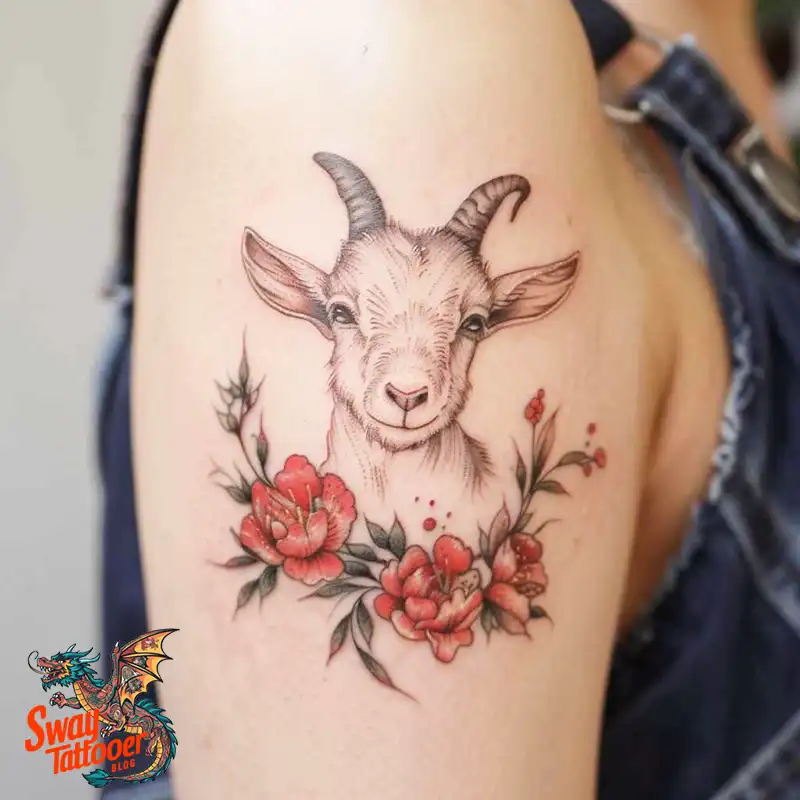
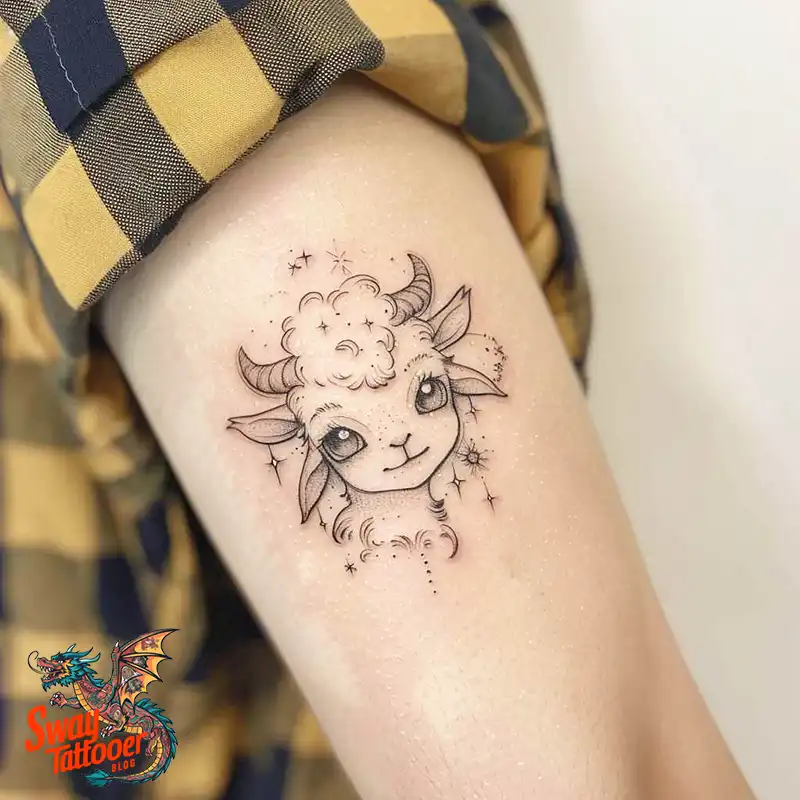
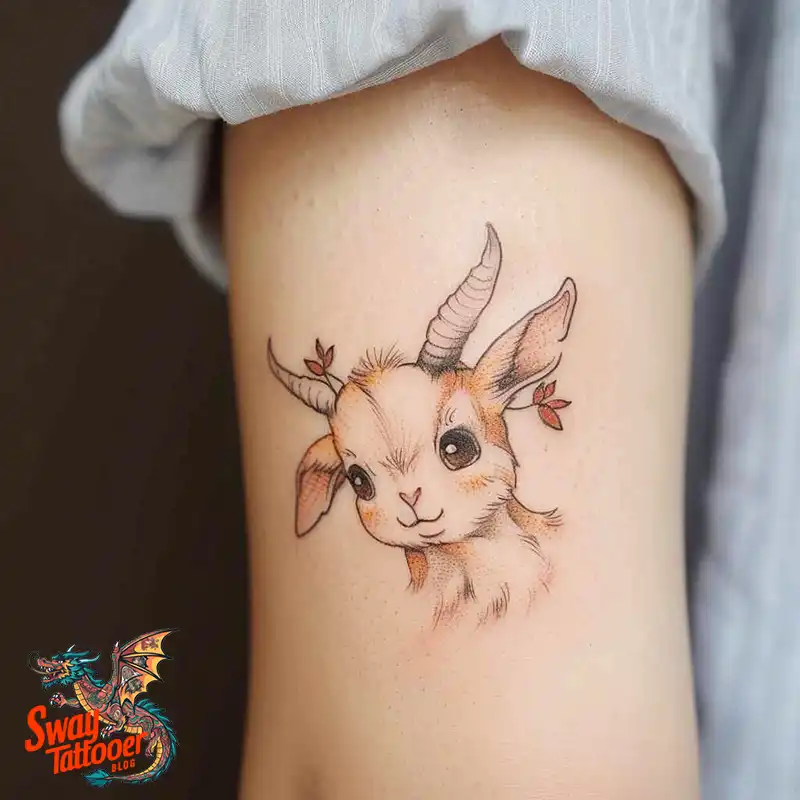

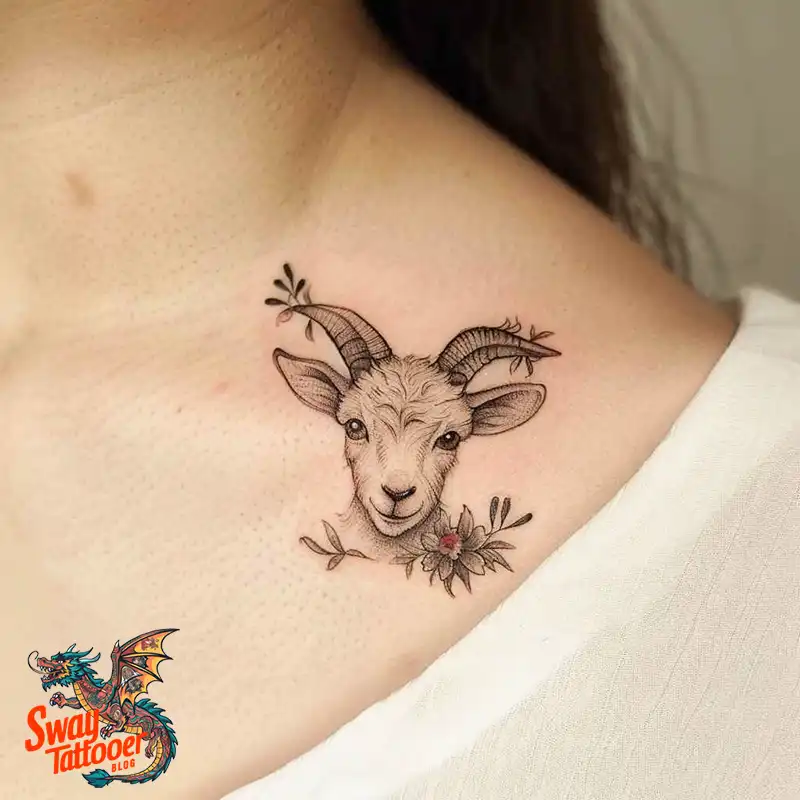
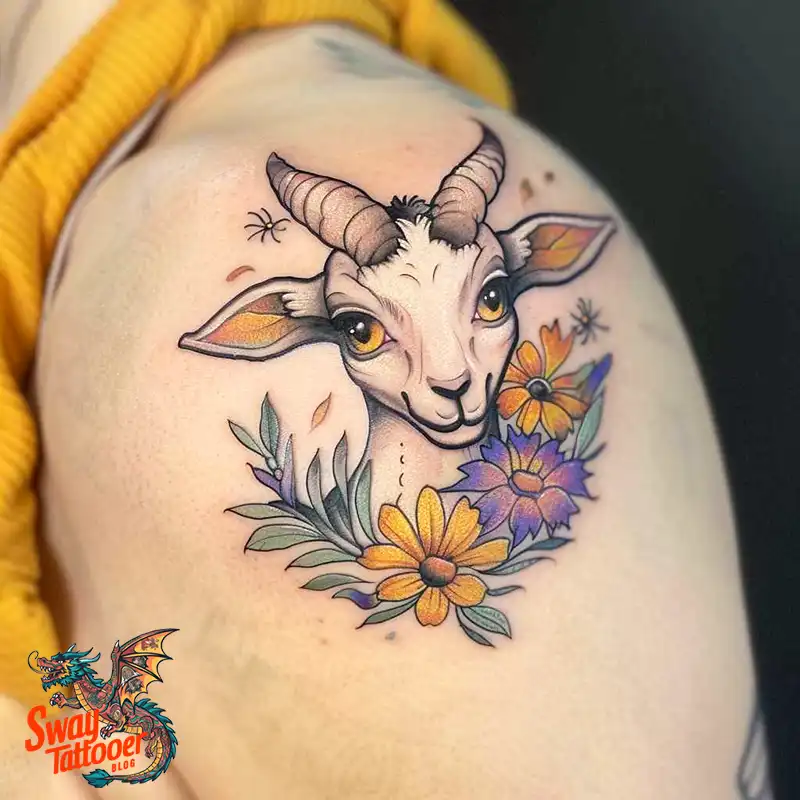
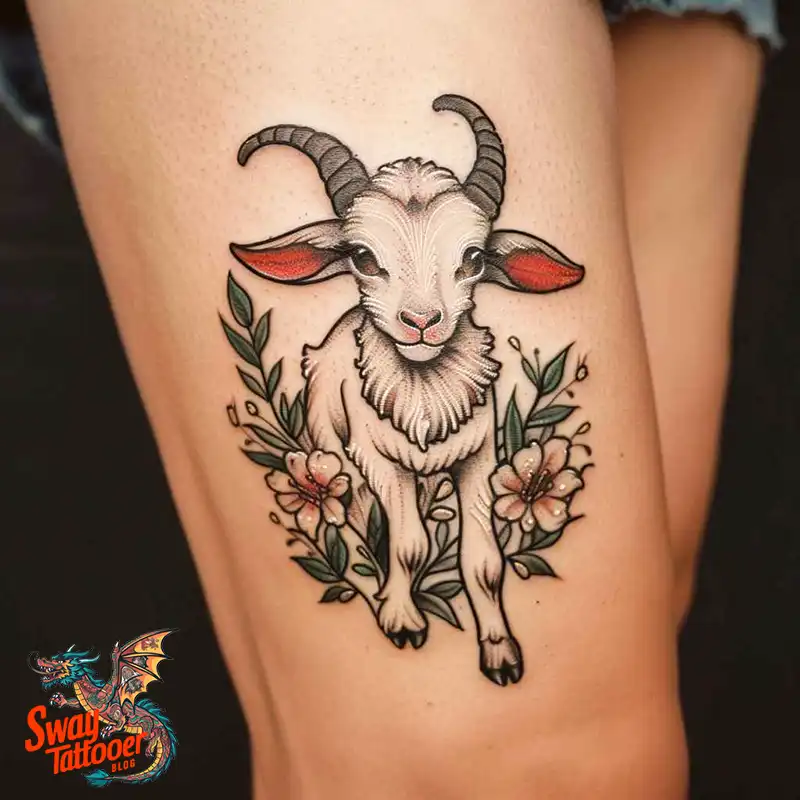
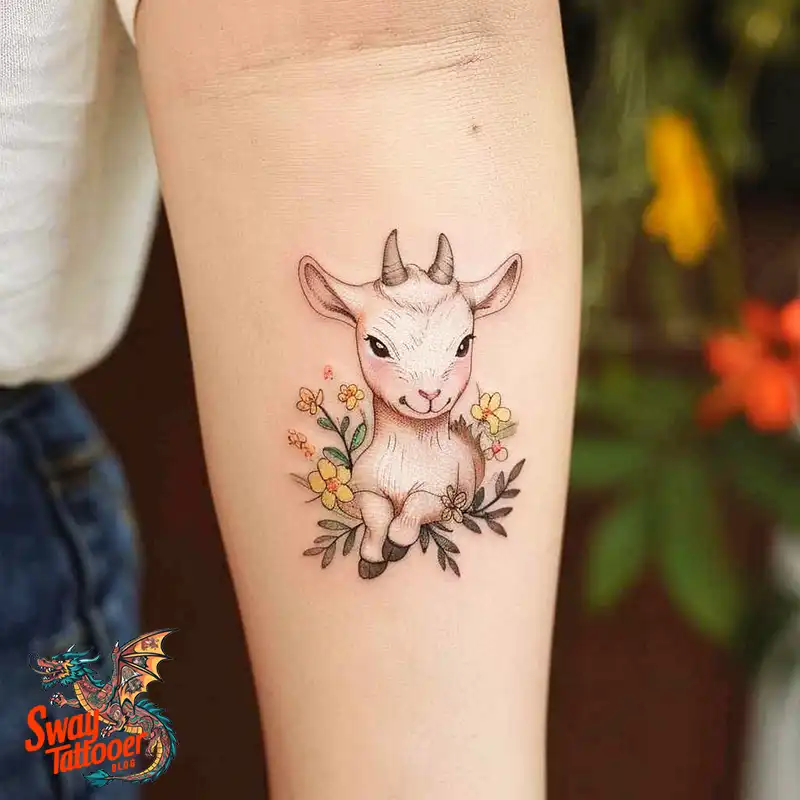
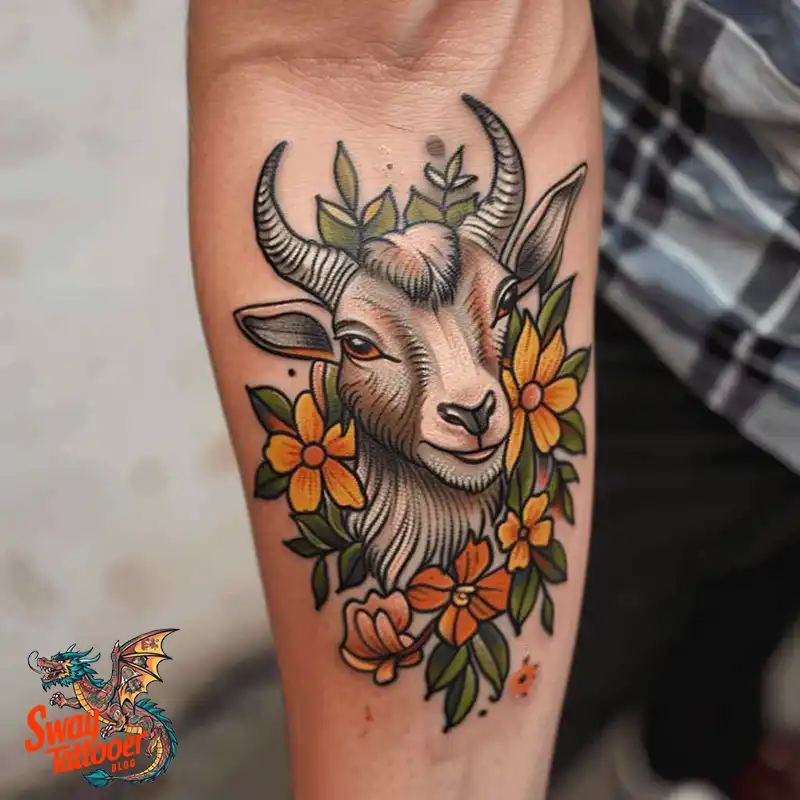
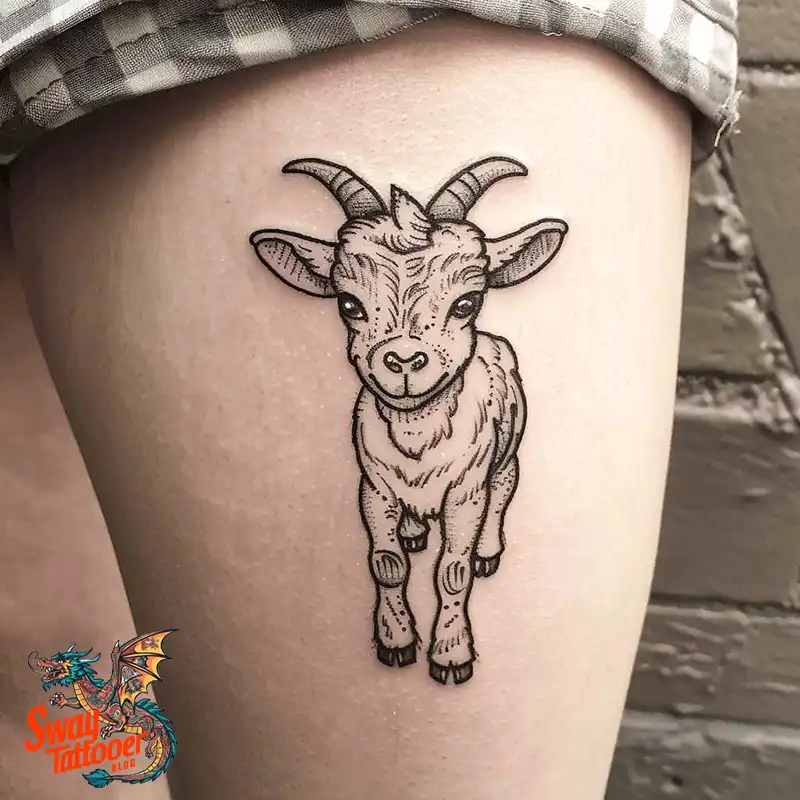
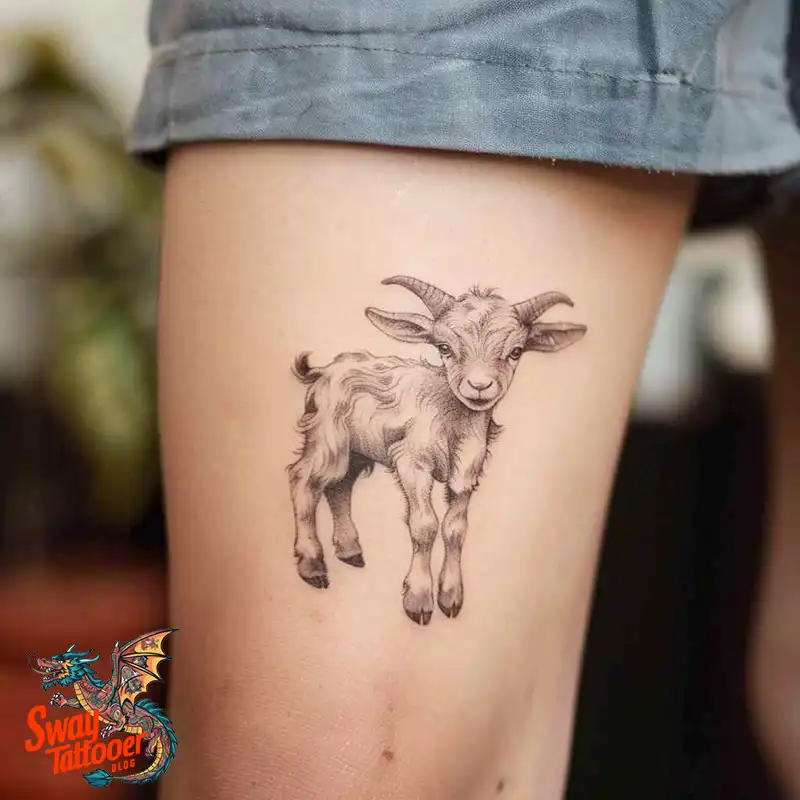
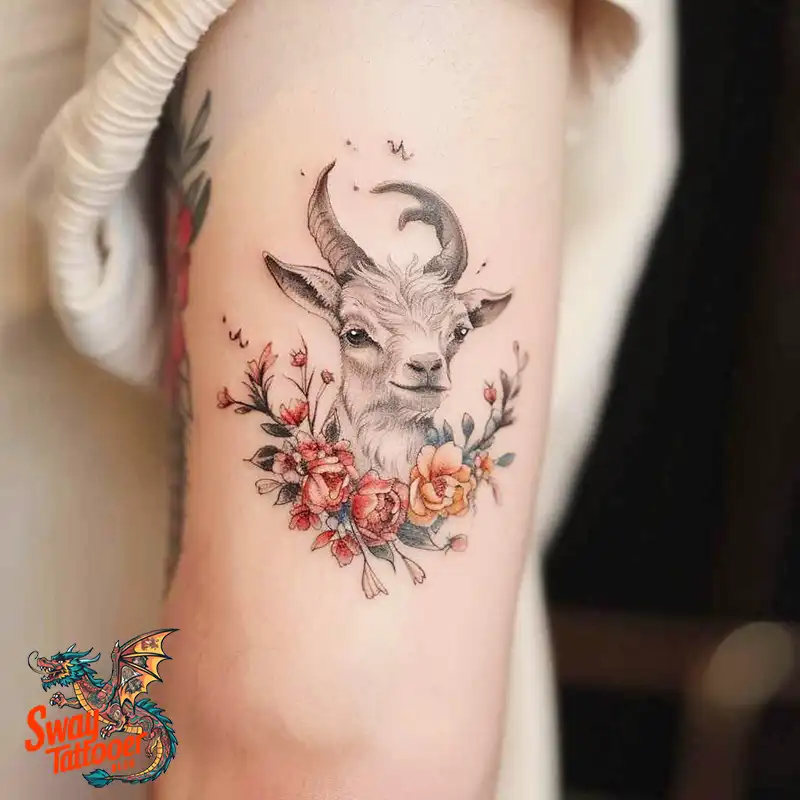
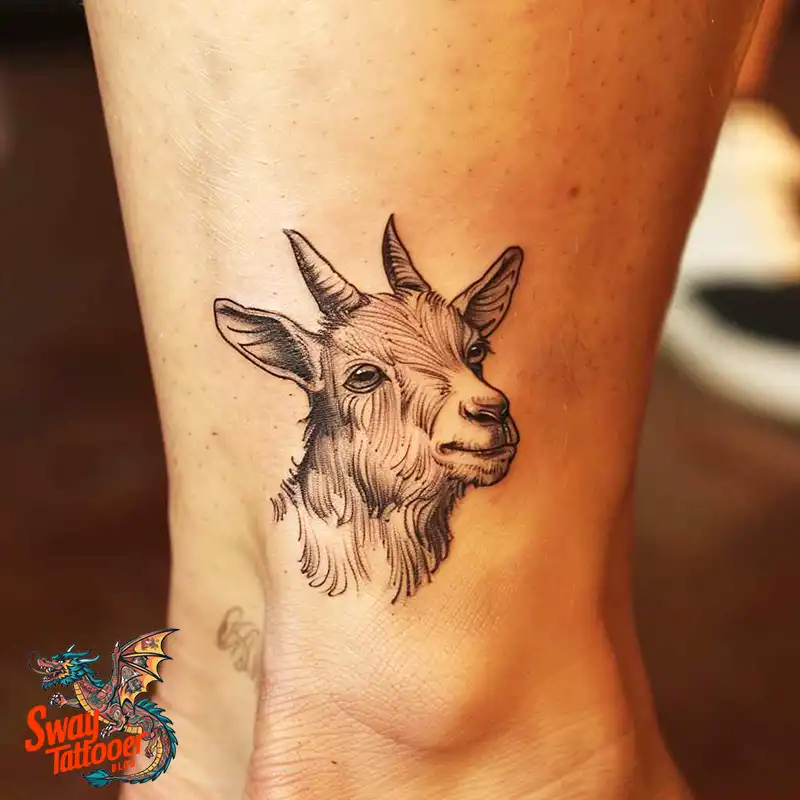
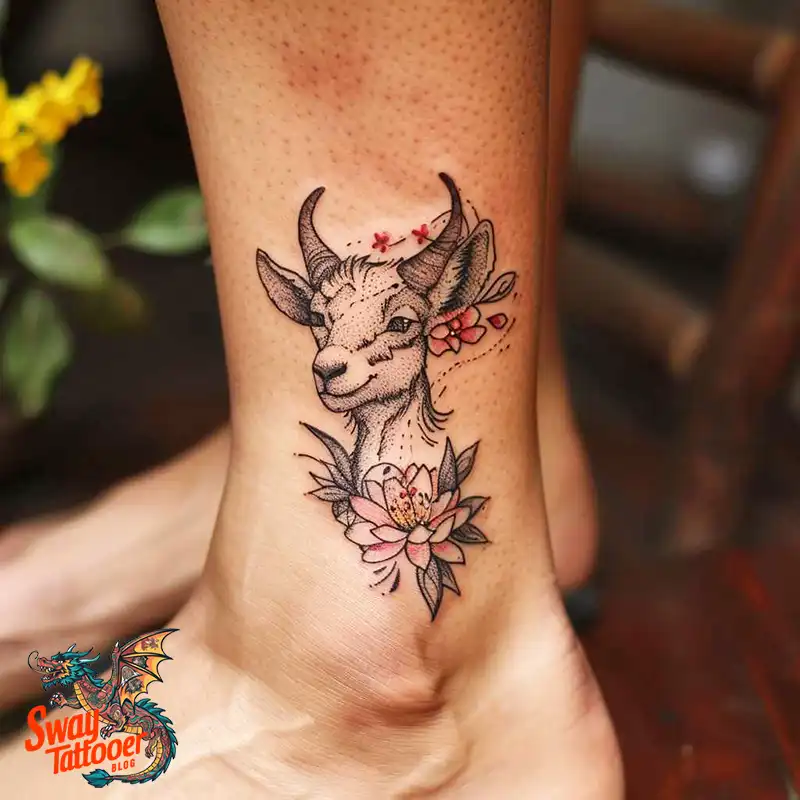
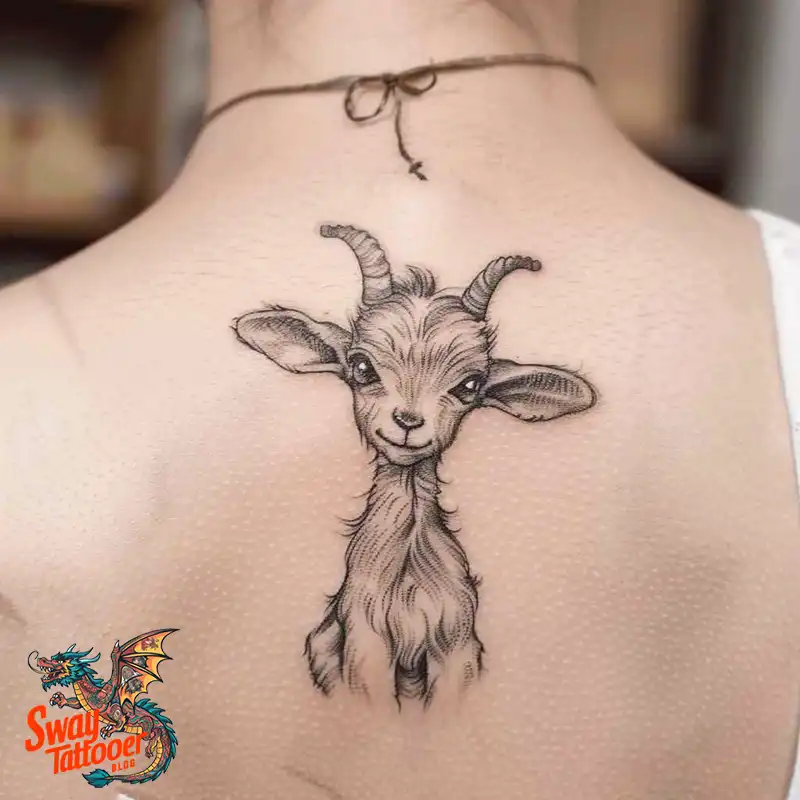
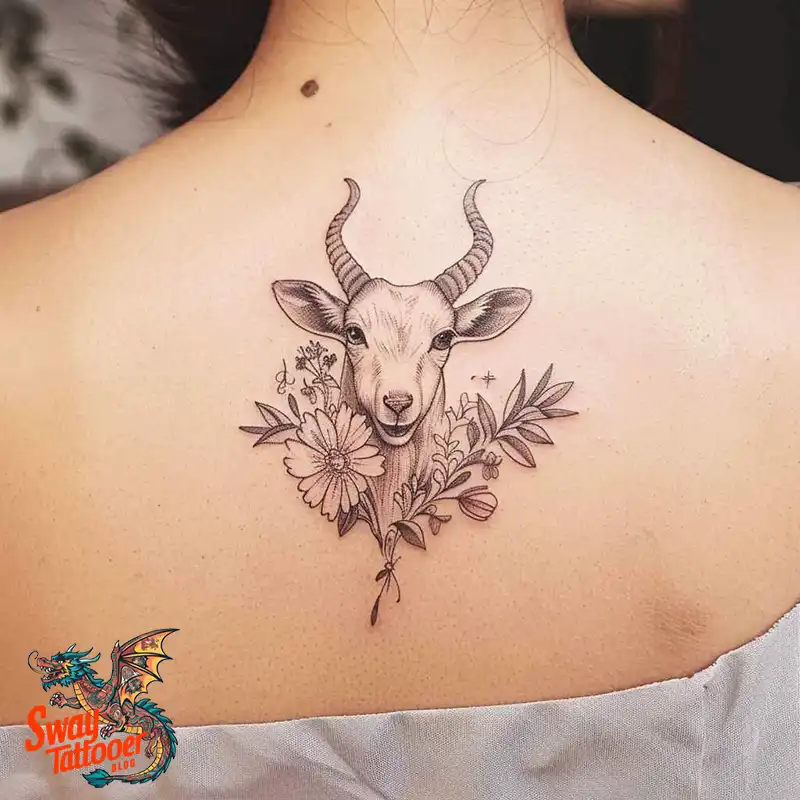

Conclusion
Be it their beauty in itself, the symbolic meanings, or the story behind it, goat tattoos contain a vast tapestry of cultural, symbolic, and personal meanings. Goat tattoos are a form of powerful, free-spirited independence, resilience, and a very astute wit created by individuals according to those qualities.
Not only that, but goat tattoos have great, diverse, and engaging histories in many cultures, from the myth of Greek goddess Pan to the symbol of the zodiac in Chinese culture.
Furthermore, the available designs vary widely, with realistic designs, abstract ones, or those that are stylized, meaning it can be very expressive. This is why each goat tattoo is unique, giving the wearer the opportunity to express their own story and personality. We were also a little more practical, talking about the importance of a great tattoo artist who must be experienced in the performance of those intricate designs with precision and artistry.
In the end, goat tattoos epitomize not just body art but a combination of personal storytelling and a touch of cultural heritage superbly wrapped into one timeless symbol. Goat tattoos offer a deep way to express yourself, whether you like them for the symbolic meanings associated with the animals or for visual beauty. In the end, a tattoo is a deeply personal journey; it could be as unique and eternal as the resilience and spirit in goats.
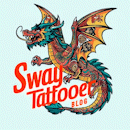
Leave a Reply